
2021-22 Northeast Ohio Edition BROUGHT TO YOU BY NC J W CLE STRONG WOMEN POWERFUL VOICES
INDIVIDUALS
FAMILIES
A RESOURCE GUIDE FOR
WITH SPECIAL NEEDS AND THEIR

THE MISSION
is a free and comprehensive Northeast Ohio online, go-to resource for all things required to support individuals with special needs and their families. LiveSpecial.com includes an easy-to-navigate community resource guide that provides the most current medical, social and rehabilitative services and access information needed to help support any age person with special needs. Visit Facebook.com/ LiveSpecialNEO for more updates and resources! · CLEAN WAY TO SEARCH
MODERN LOOK AND FEEL
USER-FRIENDLY EXPERIENCE COMPATIBLE WITH ALL DEVICES WE ARE COMMITTED TO BEING NORTHEAST OHIO’S GO-TO ONLINE RESOURCE TO SUPPORT INDIVIDUALS WITH SPECIAL NEEDS AND THEIR FAMILIES. Email info@LiveSpecial.com to receive firsthand information and updates. Check out our Video Gallery
LiveSpecial.com
·
·
25
48 DIRECTORY OF RESOURCES
Find these advertiser listings of resources, support and more!
Features
34 THE ART OF A PERSONAL CONNECTION
Learn about the dating relationships of people with disabilities. Also, meet a local father who is helping others make one-on-one connections.
Departments
EXECUTIVE DIRECTOR AND PUBLISHER LETTER
04 Making progress in the community for people with disabilities.
WORTH NOTING
05 Telehealth’s future, book recommendations, and meet the LiveSpecial.com illustrator.
PEOPLE TO KNOW
41 Meet individuals, organizations and companies that strive to provide support for those with special needs.
ASK THE EXPERTS
50 A conversation about delivery of services and IEPs.
EDUCATION
10 Easing back-to-school anxieties with learning differences.
11 Addressing the needs of at-risk students.
12 When to consider an alternative school setting for kids with autism.
13 How early intervention has changed and some strategies to try.
15 Sensory-friendly experiences in the outdoors.
ADVOCACY
16 Nera Birch shares with us her part in the neurodiversity community.
22 Find ways on how to develop a more inclusive community.

FAMILY MATTERS
14 Find some answers to common questions after a diagnosis.
19 How to become a foster parent to children with medical needs.
20 Five ways to power your parental intuition.
23 Residential setting options: choosing the best fit
39 How baby sign language improves communication.
36
LET’S
THE IMPACT OF TECHNOLOGY ON THE DEAF AND HARD-OFHEARING COMMUNITY
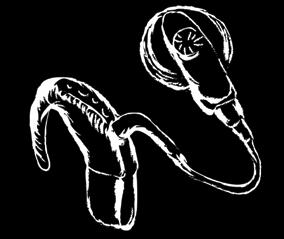
Review the evolution of devices and how they have helped access to communication.
40 Are you concerned about your child’s development?
TECHNOLOGY
47 Learn about assistive gadgets for your home.
THERAPIES
18 Five benefits of adapted dance for people with disabilities.
livespecial.com 2021-22 3 2021-2022 Edition 8 RETEACHING SOCIAL SKILLS Helping kids to connect with others. 24 THEN AND NOW: LIVESPECIAL.COM The founders of LiveSpecial.com, Elaine Eisner and Scott Gohn, tell us how the resource is evolving. They also give an update on their daughter, Alana, who was the inspiration for LiveSpecial.com. 28
PROGRESS People with disabilities and their families show how things have changed in recent years. 30
MAKING
GO OUTSIDE
out these camps, parks, outdoor activities and more for all ages and abilities. Also, find tips to prepare for the adventure.
Check
ON THE COVER: Illustration by Kendra Huspaska
PAGE FIND OUT HOW TO NOMINATE A CHAMPION
Executive Director's Note
When I was a high school student, some 30 odd years ago, kids with special needs were a part of our school, but there was no integration. They had different classrooms, different halls, and different teachers. We were together, but also apart.
Today, when I walk these same halls, I see lunch tables, where gaggles of teens gather, eating turkey sandwiches, nobody noticing really that one of the girls has cerebral palsy. I see an inclusive algebra classes, where an intervention specialist is team teaching alongside the Algebra teacher.
The theme of this month’s magazine is Progress. And as an organization who helps connect those with special needs to community resources through our website and resource guide, LiveSpecial.com I am proud of the work being done, across the country, to make visible the many faces and gifts of those in the special needs community and rearranging physical spaces to make sure they are accessible for all. It’s through integration and inclusiveness that we all grow.
Today, for instance, one of LiveSpecial.com’s partners, Olivia DePiore, who was born with Down syndrome, is an international model, who has walked the runways of Milan Fashion Week and New York Fashion Week. At Two Café & Boutique in Chagrin Falls — one of our favorite hangouts — people with disabilities work right alongside those without special needs, serving up coffee, avocado toast, and conversation. Kent State University is now offering two-year programs for students with intellectual and developmental disabilities or autism, where students can develop their passions, while living on campus.
Progress.
At the National Council of Jewish Women/Cleveland, where our mission is to help improve the lives of women, children, and families, our goal is to continue to dismantle the barriers to opportunities and make sure all individuals can live full lives, with equal access to resources and opportunities. At our organization, we are auditing our buildings, and taking a closer look at our programs, processes and resource guides, to make sure they are inclusive and accessible to everyone, regardless of needs or disabilities.

In this way, we, and our partners, are continuing to show the world the endless possibilities that exist when every voice is accessed and heard.
In this issue, you will learn about some of the amazing teachers, advocates, and specialists who have worked hard to make this progress happen. I hope you leave as inspired — and hopeful — as I am. And remember, if you or a loved one has been diagnosed with a special need, LiveSpecial. com is a great way to get connected to other specialists in the area who can help ensure you get the support you need to thrive.
Happy reading!
Mindi Axner, Executive Director of National Council of Jewish Women/Cleveland
Publisher's Note
We are thrilled to bring you this 7th annual edition of LiveSpecial.com magazine. Our partnership with NCJW/CLE enables us to produce a collaborative effort harnessing the power of the LiveSpecial.com website, a passion for the special needs community and the publishing prowess of our organization. Of all the content we produce during the course of the year, this publication is our favorite project and our most important annual endeavor.
In this new edition we have taken a purposeful step to amplify the voices from the special needs community. Those who receive the care are best suited to provide meaningful contributions that can benefit all. I hope you find this year’s LiveSpecial.com magazine to be our best effort to date.
This past year was a challenge for the special needs community in many ways including the hurdles for in-person care. Thankfully, advances in technology have allowed for amazing connectivity through virtual sessions and a world of information at our fingertips. We’re thrilled to see great innovation and progress in this hybrid model approach as a longer-term solution to enhance care for more people.
26055 Emery Road
Warrensville Heights, OH 44128
livespecial.com ncjwcleveland.org
PRESIDENT Michele Kaminsky president@ncjwcleveland.org
EXECUTIVE DIRECTOR
Mindi Axner 216-378-2204 ext. 103 maxner@ncjwcleveland.org
LIVESPECIAL COORDINATOR
Wendy Spitz 216-378-2204 wendy@livespecial.com
LIVESPECIAL ADVISORS
Jennifer Boroff
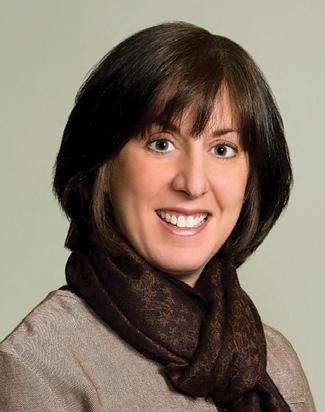
Elaine Eisner
Cindy Glazer
Laura Kuntz
PUBLISHER
Brad Mitchell EDITOR
Angela Gartner
MANAGING EDITOR
Denise Koeth
ART DIRECTOR
Laura Chadwick
CONTRIBUTORS
Lindsey Geiss, Cindy Glazer, Helen Horwitz, Georgia Lattas, Ginny McCabe
LiveSpecial.com Resource Guide is published by Northeast Ohio Parent Magazine and Mitchell Media LLC PO Box 1088 Hudson, OH 44236 330-822-4011

Copyright 2021 by NCJW/CLE and Northeast Ohio Parent
Brad Mitchell, Publisher


4 livespecial.com 2021-22
TELEHEALTH OPTIONS: ARE THEY HERE TO STAY?
Taking care of the mind and body is always important, and the pandemic compelled people across the country to seek out mental, emotional and physical help through virtual health services. For people with special needs, not being able to visit their healthcare provider face-toface presented many challenges, but teleheaalth also offered healthcare professionals a peek into the day-today life of their patients.
Jo Elle Barath, Lori Mago and Rick Cirillo of the Cuyahoga County Board of Developmental Disabilities provide insight on the impact of telehealth services for people with special needs and how virtual healthcare will continue to be implemented.
Mago says some families requested virtual services prior to the pandemic for situations such as patients who are medically fragile and cannot be exposed to multiple people for health reasons, or for families with difficult
By Georgia Lattas
work schedules that cannot allocate time to visit a healthcare provider in-person.
“When the pandemic hit, we were well prepared because we had already been using Zoom and had protocols in place for it,” Mago says. “Everyone in my department is a therapist or developmental specialist of some sort, and we were able to extend the virtual services out rather quickly.”
Although not all departments were accustomed to using virtual health services, many divisions did see the benefit in incorporating telehealth services.
One of the main challenges to telehealth is that not everyone has access to a computer, WiFi or Internet, and some people do not have the knowledge or ability to use telecommunication services. Some patients also felt intimidated by the virtual services and felt as if the application was less natural and were not as engaged in front of the screen.
Telehealth services span from occupational therapy, physical therapy, speech therapy, assessment services, behavioral therapy and others. Mago’s division, Assistive Technology and Children’s Services, had networking opportunities during the pandemic which allowed individuals to stay connected to one another in small groups. Her department also had exercise programs for people with mobility issues, and other departments found ways to keep patients engaged during the pandemic.
Telehealth has allowed healthcare providers to be more efficient, but virtual healthcare options provide obstacles to many people with special needs.
“We can still support individuals from a distance and telehealth makes us more accessible to the people we serve,” Mago says. “Telehealth will continue, but it’s not the way we prefer to do services, and it’s not how most of our individuals prefer their services to be received.”

livespecial.com 2021-22 5
Worth Noting
MEET THE LIVESPECIAL.COM COVER ILLUSTRATOR: Kendra Huspaska
Q: TELL US YOUR BACKGROUND WITH THE SPECIAL NEEDS COMMUNITY IN NORTHEAST OHIO.
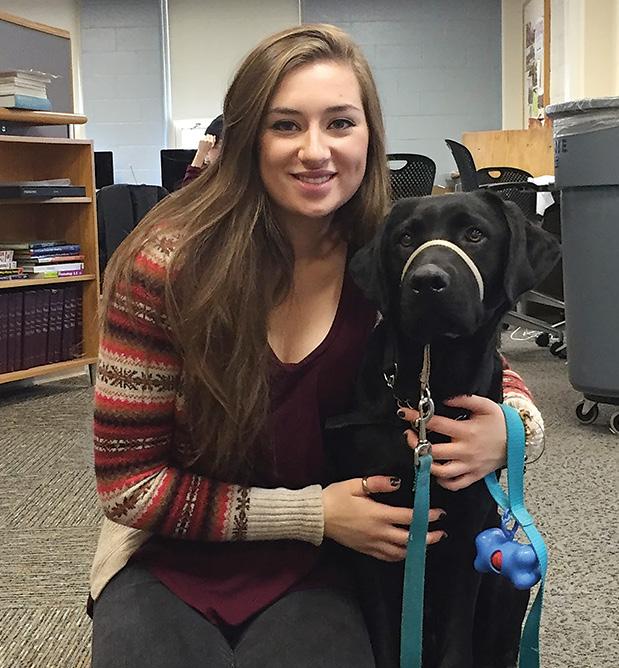
Huspaska: While in college I was involved in a program called 4 Paws for Ability (4pawsforability.org) where I was a volunteer for their Service Dogs in Training program. My junior year, I was paired with my foster dog Huxley, a 6-month-old black lab with a ton of energy. I helped with the socialization aspect of his training. I even volunteered with him at a local school’s classroom once a week so that he could have more interactions with children as well.
My experience working with 4 Paws was incredibly eye-opening and for my senior degree project, I knew I wanted to focus on the benefits of animal interactions for children with developmental disabilities. I developed a brand-concept for a program (kendrahuspaska.com/portfolio/ petconnect) that would partner with local animal shelters to provide sensory friendly adoption events for those with developmental disabilities to learn more about animal interventions.
Q: PROGRESS IS ON THE COVER OF THIS MAGAZINE, BUT WHAT DOES PROGRESS MEAN TO YOU?
Huspaska: The definition of progress is “forward or onward movement toward a destination.” To me, the destination would be absolute inclusivity, complete acceptance and a world devoid of labels. Through education and awareness I think we get closer and closer to a world like this every day.
Q: WHY WAS IT IMPORTANT TO YOU TO WORK ON THIS COVER?
Huspaska: About a decade ago my younger brother (he was 3-years-old at the time) was diagnosed with autism. Since then, my family and I have been learning and growing alongside him as we’ve begun to understand more about how he sees the world. It has had such
MAKING A DIFFERENCE
Lois Davis helps those in need in memory of her husband, Larry.
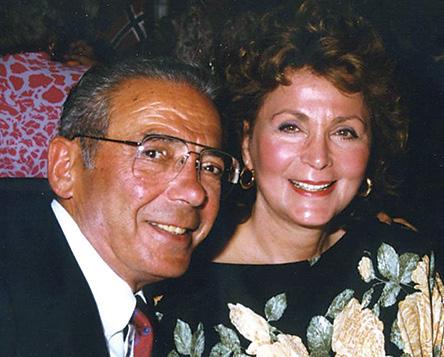
Lois Davis, of Beachwood, wants to make sure her husband, Larry, is remembered.
Larry Davis, who passed away at 75 years old, was the inspiration for The Lois J. and Larry Davis Family Endowment Fund, which provides
support for a variety of projects throughout the Northeast Ohio community.
“I couldn’t do it without Larry,” Davis says about the endowment fund. “Larry deserves to be remembered and I want to honor his memory. People
a positive impact on my life to see the progress we’ve all made over the years and I was delighted to be approached with this opportunity to be able to contribute to a community that has meant so much to my family.
Q: CAN YOU TELL US MORE ABOUT THE COLORS YOU CHOSE OR THE WAY YOU DREW THE PEOPLE IN YOUR PIECE?
Huspaska: Something that is probably noticed right away is the absence of facial features and expressions in the illustration. This is something intentional that I do when including people in my work because I simply don’t think it’s as important as the action taking place. I also like to use this design choice as a chance to talk about how some people can find it difficult to understand the meaning revealed in facial expressions and other social cues.
Q: WHAT DO YOU HOPE PEOPLE TAKE AWAY FROM THE COVER YOU CREATED?
Huspaska: I hope when people see this cover they understand the importance of working together and including everyone along the way.
recognize the name; if you don’t use the name, no one will follow you (in donating to others).”
Davis says her son, Jeffrey, was the first one to point out that she could make a difference in the community.
Davis went on to choose projects and
6 livespecial.com 2021-22
Worth Noting
Larry and Lois Davis
Photo courtesy of Lois Davis
PHOTO COURTESY OF KENDRA KUSPASKA
Kendra with Huxley
LOCAL FOOD ALLERGY MOM RELEASES BOOK: ‘BULLYING LEAVES A BAD TASTE’ Out of My Mind
Food allergy bullying is on the rise, but together we can stop it.
Food is at the center of everyone’s lives. For children and families with food allergies, school lunch tables and other social situations can be very challenging, even scary. While one in five children report being bullied and one in 13 children have a food allergy, half the children with food allergies report being bullied, and these incidents are often related to their allergy.
Dr. Abigail Glick, a mother of three and founder of the Northeast Ohio Food Allergy Network, teamed up with three psychologists to write “Bullying Leaves a Bad Taste.” The book offers tips, tools and strategies for children with food allergies to help them handle bullying and build confidence. For family members, friends, classmates, teachers and others without food allergies, the book can help them better understand the seriousness of food allergies, situations those affected face, and how they can help.
“Many people hear the word ‘allergy’ and think of sniffles and itchy eyes,” Glick says. “They do not realize exposing someone to their food allergy can lead to anaphylaxis, a life-threatening allergic reaction.”
In the book’s forward, she states, “When my son came home from day camp and sadly shared that, ‘Nobody understands. Why would a camper put a brownie in my face if he knows I am allergic? It could kill me.’ I pushed back the tears and went into action. Conversations with my [University Hospitals] colleague, Carolyn E. IeversLandis, Ph.D., led to the creation of this book.”
“Bullying Leaves a Bad Taste,” by Abigail Glick, M.D.; Carolyn Ievers-Landis, Ph.D.; Patrice Yasuda, Ph.D.; and Chad Rose, Ph.D., is available on Amazon, or at local bookstores.For more information, visit neofan.org.
 — Lindsey Geiss
by Sharon Draper
— Lindsey Geiss
by Sharon Draper
Melody has cerebral palsy. She can’t walk, talk or write, but she is the smartest 11-year-old in her whole school. Most people dismiss her, but she is determined to somehow show them that she is not just her disability.
— Book recommendation by Willoughby-Eastlake Public Library, we247.org
College on the Autism Spectrum: A Parent’s Guide to Students’ Mental Health and Wellbeing by Laurie Leventhal-Belfer

Provides guidance to parents of children with autism who are going to college. It helps parents support their child from application through graduation.
You Are Enough: A Book
About Inclusion
by Margaret O’Hare and Sophia Sanchez
This picture book, from 11-year-old Sophia, has an important message about being you, no matter what that means. Sophia has Down syndrome and wants her readers to embrace their differences and be proud of who they are.

— Book recommendation by Willoughby-Eastlake Public Library, we247.org
A New Course: A Mother’s Journey Navigating Down Syndrome and Autism
by
Teresa
Unnerstall
organizations to donate in her family’s name. Davis has donated to the Ronald McDonald House Cleveland as an annual room sponsor, providing funding for guest rooms where families can stay at no cost while their child is receiving medical treatment at Cleveland area hospitals. She also has supported the Jewish Family Service Association of Cleveland’s The Hebrew Shelter Home, a place for women
and children escaping domestic violence or homelessness.
“(Opportunities to give) just come up and I can make a difference in a person’s life,” Davis says, which is why she wanted to continue to support LiveSpecial. com. “There are so many people that could benefit from this magazine and the website, I wanted to support this project in some way. I know how valuable LiveSpecial.com is for our community.”
A book that takes a deep dive into the complexities that families face raising a child with a dual diagnosis of Down syndrome and autism (DS-ASD), and other intellectual and developmental disabilities.
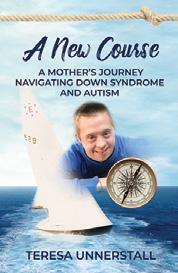
Beyond the Diagnosis: The Path to Thriving as a Special Needs Parent by Amy
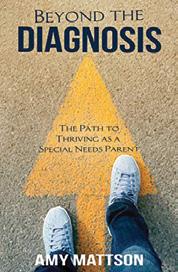
 Mattson
Mattson
After author Amy Mattson’s two children were diagnosed with cerebral palsy, autism, ADHD, anxiety and dyslexia, she didn’t know what to do with her new reality. Each chapter includes action steps and practical information to help parents navigate their new world.
— Book recommendation by Willoughby-Eastlake Public Library, we247.org
livespecial.com 2021-22 7
BOOKSHELF
SOCIAL SKILLS ARE BENEFICIAL FOR KIDS OF ALL ABILITIES
By Ginny McCabe
Learning social skills is important for children of all ages, skill sets and abilities. Having a solid set of social skills can help kids communicate, relate to others, and connect with their peers and family members.
Cheryl Pete, ATR-BC, clinical director of Art Therapy Studio, says social skills are linked to success not only in relationships, but also in work and school.
“It is crucial to set your child up for success, especially if they are experiencing anxiety related to social situations,” Pete says. “Start small and provide experiences that can be built on, such as encouraging your child to make eye contact or smile at others. Offer lots of praise and recognize what went well so your child walks away feeling good about the experience. Slowly build to more complex interactions.”
She says there isn’t a cookie cutter solution for all children, so adjusting
and learning is important to really meet a child’s needs. It also allows parents and others an opportunity to model problem-solving skills.
“Kids with special needs can have additional barriers that can make the process more challenging. For example, a child with ADHD that struggles with impulse control may have a hard time not interrupting others, or a child on the autism spectrum may struggle reading facial expressions.”
Ann Marie Raddell, MTBC, NICU MT, approaches this issue wearing two different hats. She serves as the associate director of Creative Arts Therapies at The Fine Arts Association, and she’s also the mom of two kids with a rare
disorder called Hurler syndrome.
“Social skills are needed for all areas of life to just have those meaningful connections in school, in your personal life, with families, with jobs, and just being a part of your environment,” Raddell says.
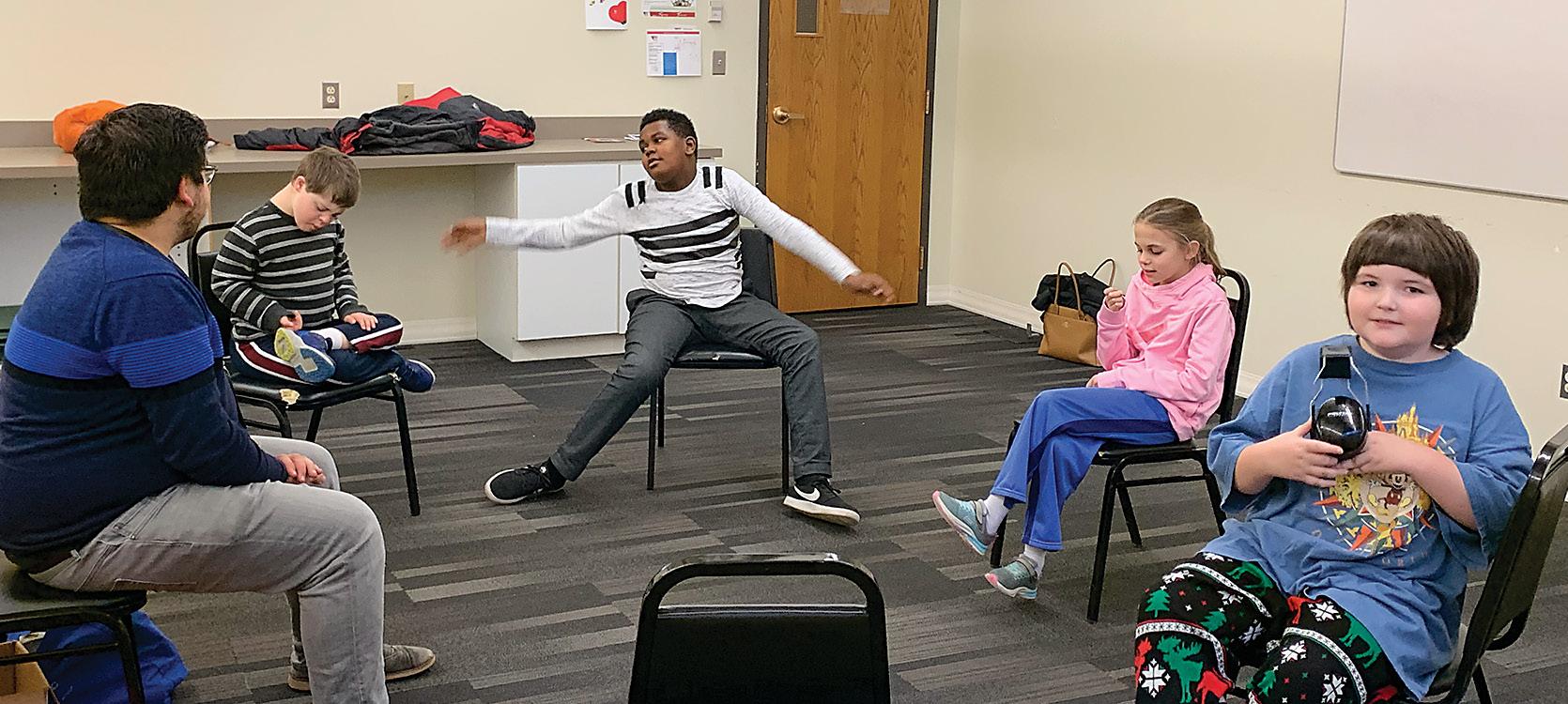
“My kids are cognitively not affected by their illness,” she adds. “It’s a medical illness, but my girls both have a small stature. They look a little different than their peers. My daughter is about the size of a 5-year-old, even though she’s 10.
“For her, social skills are often just being afraid she’s going to be rejected by her peers. Oftentimes, other kids ask her about her height or argue with her about her age. They might
PHOTO COURTESY OF BECK CENTER FOR THE ARTS
8 livespecial.com 2021-22 8
say, ‘You’re not 10, you’re shorter than someone who’s 10,’ or they make comments about that. As her parents, my husband and I have had to really encourage them both to be brave and to advocate for themselves.”
Ed Gallagher, director of education at Beck Center for the Arts, says communication is a key factor and it’s always important to keep the lines of communication open.
Gallagher says that when it comes to other helpful resources for parents, “I would recommend looking at the websites of professional organizations for broad brush stroke information — such as the American Music Therapy Association or local organizations such as Beck Center, Up Side of Downs, local libraries and schools dedicated to the success of individuals with disabilities. Start there and as you create your network, folks will provide a wealth of knowledge and reading material.”
Creative arts therapy programs can provide children with an opportunity to build social skills while doing something they love — in art, dance, music, theater and visual arts. Art Therapy Studio (arttherapystudio.org),
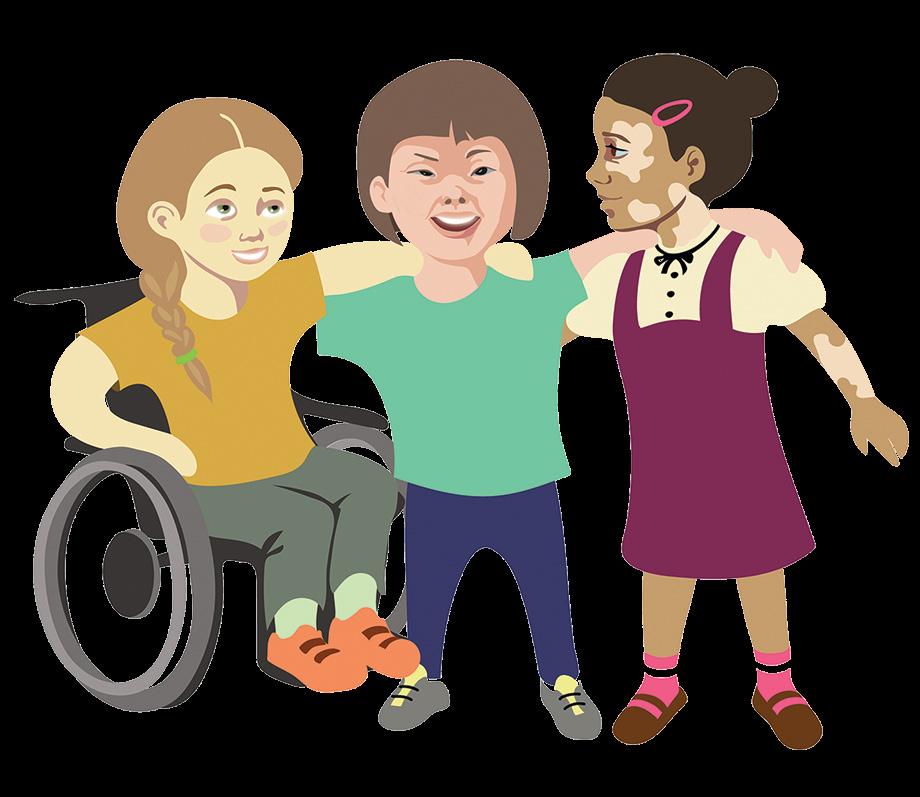
The Fine Arts Association (fineartsassociation.org) and Beck Center for the Arts (beckcenter.org) are a few places in the greater Cleveland area that offer creative arts therapy programming.
Social skills are important for kids of all ages and abilities. Whether it’s building meaningful relationships with their peers, in a family setting, performing at a job when they’re older, or in the day-to-day world around them, learning and developing social skills will help children navigate through life. We spoke to several local experts who provided us with some helpful tips and advice. Here’s what they had to say.
ED GALLAGHER, director of education at Beck Center for the Arts:
“Teachers, therapists and others in those types of roles need to show accepted community norms when they’re around kids. Children learn by watching and seeing what we do and the research backs this up. My advice is to meet the child at a developmental level, regardless of age, and work to advance that level. Some children will make great strides over time with assistance, while others may lag for various reasons that are no fault of their own. Be supportive even when times are challenging. Finally, parents should look for support for themselves as well – they don’t need to try and figure out the challenges alone as the community is filled with many outstanding resources.”
CHERYL PETE, ATR-BC, clinical director, Art Therapy Studio:
“It’s important to make the experience rewarding, so providing lots of positive reinforcement is key. Celebrate the little successes and make it playful. Set up activities that include opportunities to practice skills. For example, an art project in a small group may only have one bottle of glue that the kids all have to share. Helping them navigate skills while doing something they enjoy is a more natural approach.”
ANN MARIE RADDELL, MT-BC, NICU MT, associate director of Creative Arts Therapies at The Fine Arts Association:
“I think as adults, we have to learn, too, that not everybody communicates the same way, and a lot of children with differing abilities might not communicate the way we expect. We often ask them to figure out how to communicate with us, but sometimes I think we also need to figure out how to communicate with them. So, I think that is definitely a different aspect. Children might struggle with those meaningful connections of experiencing the world differently than their peers. So, being excited might not look excited in the same way that maybe one of those typical peers looks, and they might struggle more with knowing what to say or they might struggle more with just being able to be with their peers. They might look like they have more challenging behaviors, when again, they are just learning how to navigate their environment, and we all have to demonstrate a little patience.”
livespecial.com 2021-22 9
Easing Back-to-School Anxiety for Children With Learning Differences
By the teachers and therapists of Julie Billiart Schools
Many children have anxiety about returning to school. For children with learning and social differences, anxiety about what school will look like come fall can be even more pronounced. With careful planning, you can provide your child with a smooth transition so their back-to-school experience is a positive one.
Get Organized
For kids with special education needs, structure and planning is especially important. Make sure your child’s school supply list is organized and ready to purchase. Consider placing a calendar in a prominent location where you can mark any important school dates to eliminate surprises.
Have Conversations About School
Casually start conversations with your child to gauge what feelings they may be experiencing. This is an opportunity for you to calm any unnecessary fears or provide solutions that may help them gain a sense of control.
Turn Back the Clock
About two weeks before school starts, establish a bedtime that gradually gets earlier. Get your child his or her own alarm clock to encourage independence. Create a morning routine that works for everyone.
Stay Positive
Kids pick up on our stress levels. If you are calm and relaxed about school, it increases the likelihood that your child will be, too. Keep a positive attitude about all the school tasks you need to complete, even though they may be tedious and time-consuming.
A little preparation over the summer can go a long way in ensuring your child has a successful return to school.
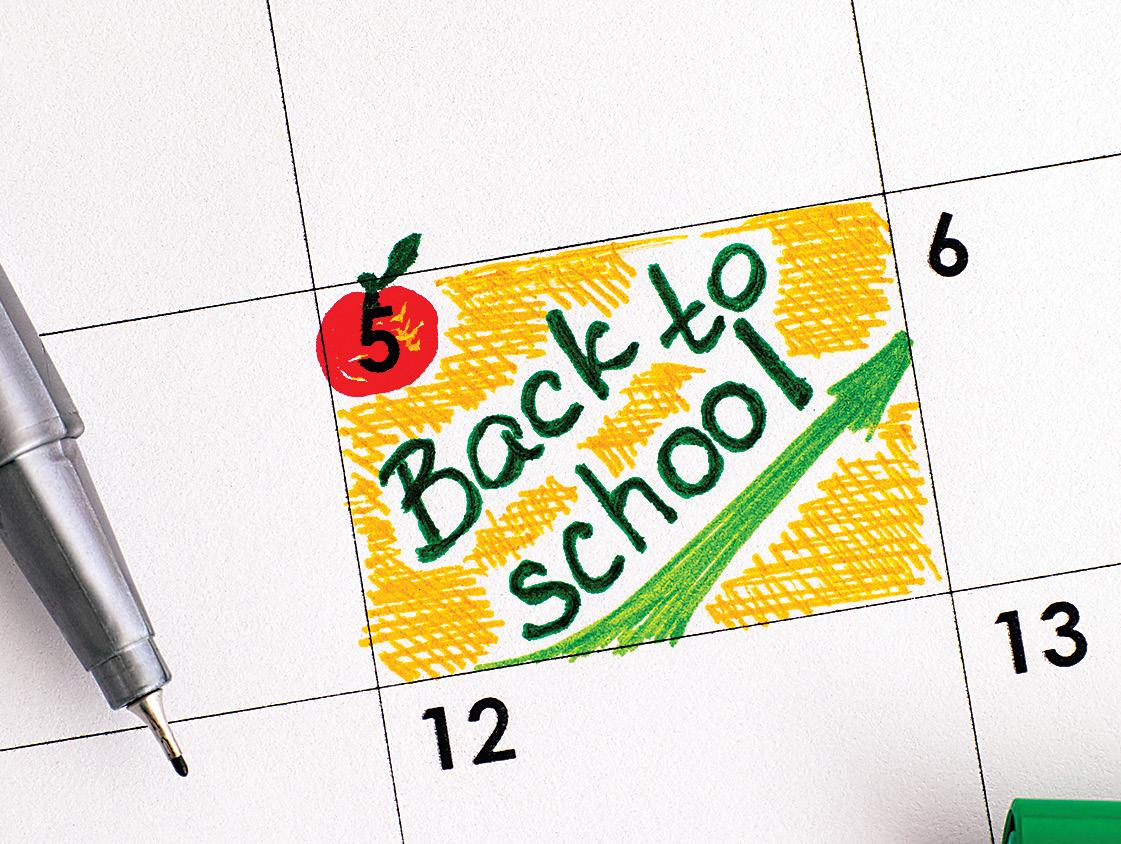
For more information and resources about helping your child prepare for the school year, visit juliebilliartschools.org/ anxietywebinar

BE SENSORY-MINDED

While some kids look forward to getting new back-to-school clothes, children with sensory issues may struggle with new fabrics and textures. Look for tagless shirts, seamless socks, and other sensoryfriendly clothing.

10 livespecial.com 2021-22
Education
Addressing the Needs of At-Risk Students
In today’s education climate, school success is defined as ensuring achievement for every student. To reach this goal, educators need tools to help them identify students who are at risk academically and to adjust instructional strategies to better meet these students’ needs. At-risk students typically require more resources than students who are adjusting well to the social and academic demands of school.
There are many reasons students may be “at risk,” which can mean any student who is not socially, emotionally or academically healthy.
Before measuring a student’s academic progress to meet Ohio Department of Education standards, educators must meet students where they are. There needs to be an understanding of their immediate emotional needs while keeping an eye on their social behaviors.

Whether your child is experiencing positive or negative progress, as educators and parents we must first “name it” so that we will be able to assess and address it. The importance in naming the progress (i.e. my daughter
is having an outburst every Monday before going to school, or my son dropped from a sixth grade reading level to a third grade level) is that it allows the professionals in your school to first assess contributing factors and then create a plan. Each plan should be filled with the steps of progression toward positive outcomes. This plan is shared with everyone as a part of their academic life.
Your role as a parent is extremely important. Keep in close communication with the school, your child’s teachers, the school counselor, their therapist and even the school nurse, as this paints the best picture for everyone.
psi can help in your child’s academic progress as it partners with more than 500 schools across Ohio. psi helps schools across Northeast Ohio identify these social and emotional needs. These needs cross over to school clinics, counselors and psychologists, and then many of the pieces are picked up in the classroom by teachers and intervention specialists. psi-solutions.org
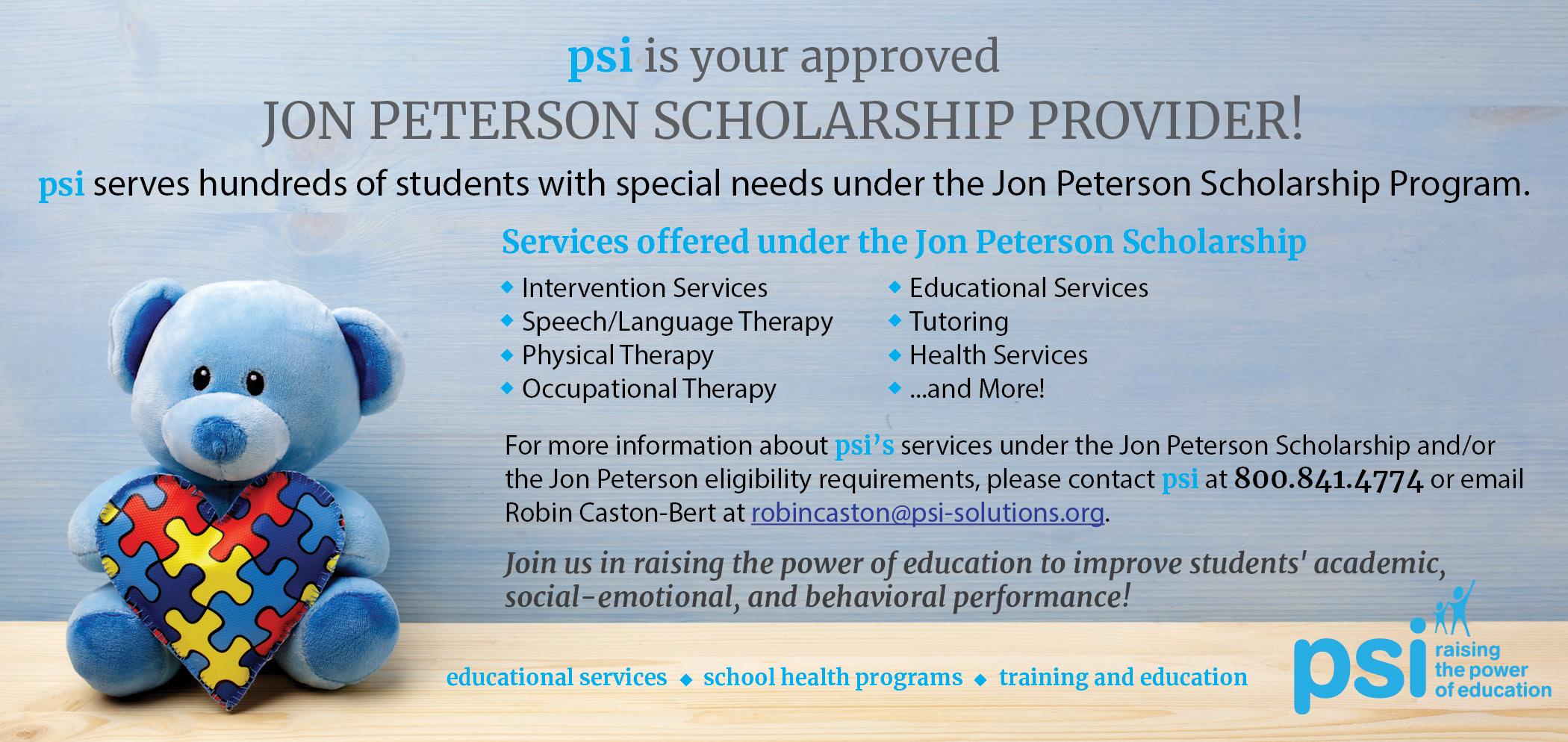
livespecial.com 2021-22 11
Education
When Should You Consider an Alternative School Setting for Your Child with Autism?
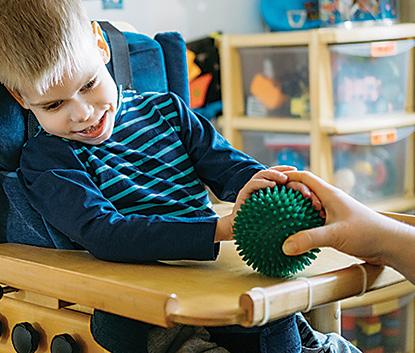
Nobody knows your child better than you, so it’s best to trust your instincts in this situation. There are, however, a number of common indicators that can help guide your decision about exploring alternative schools.
An alternative school setting may be best for your child when:
• They need to receive more individualized instruction
In a traditional school setting, your child’s classroom likely has a high student-to-staff ratio, meaning a classroom with 20 or more students may have only one or two teachers or other staff members providing instruction. For a child with autism, this may leave them without the individualized instruction that they may need, and without a customized curriculum that takes into account their behavioral or therapeutic needs, as well.
Alternative school programs look and feel like a traditional school. The difference, however, is in the therapy, philosophy and
level of personalization that steer educational instruction. Alternative school programs feature much lower staffto-student ratios, providing individualized instruction in an environment that feels much more comfortable and adaptive.
• Their learning environment is affecting their education experience For many children with developmental disorders, an overstimulating environment can trigger adverse reactions when feelings of sensory overload arise. This is particularly common in traditional school settings, where large classrooms with many students can quickly become busy, noisy and overwhelming. Conversely, many alternative schools have dedicated sensory spaces for students to use for emotional regulation. When they find themselves feeling overstimulated, these sensory rooms provide an area to regain a sense of calm using visual, auditory and tactile aids to process emotions.
• Your child does not feel welcomed
or accepted in their current school environment
Parents of children with autism understand that in public schools, certain behaviors or reactions may be uncomfortable for other parents and students when they don’t understand. Some public or private school systems may even categorize these behaviors as “red flags” or be ill-equipped to help with things like emotional regulation.
Alternative schooling programs, however, are designed specifically with these situations in mind and are able to help parents and students alike with openness and acceptance. Many alternative schools integrate unconditional positive regard into their teaching, with an emphasis on positive approaches that are affirming, rather than punishment-based.
With a 1:6 staff to student ratio, each Education Alternatives classroom encourages individualized instruction based on each child’s specific needs and education plan. Visit easchools.org.
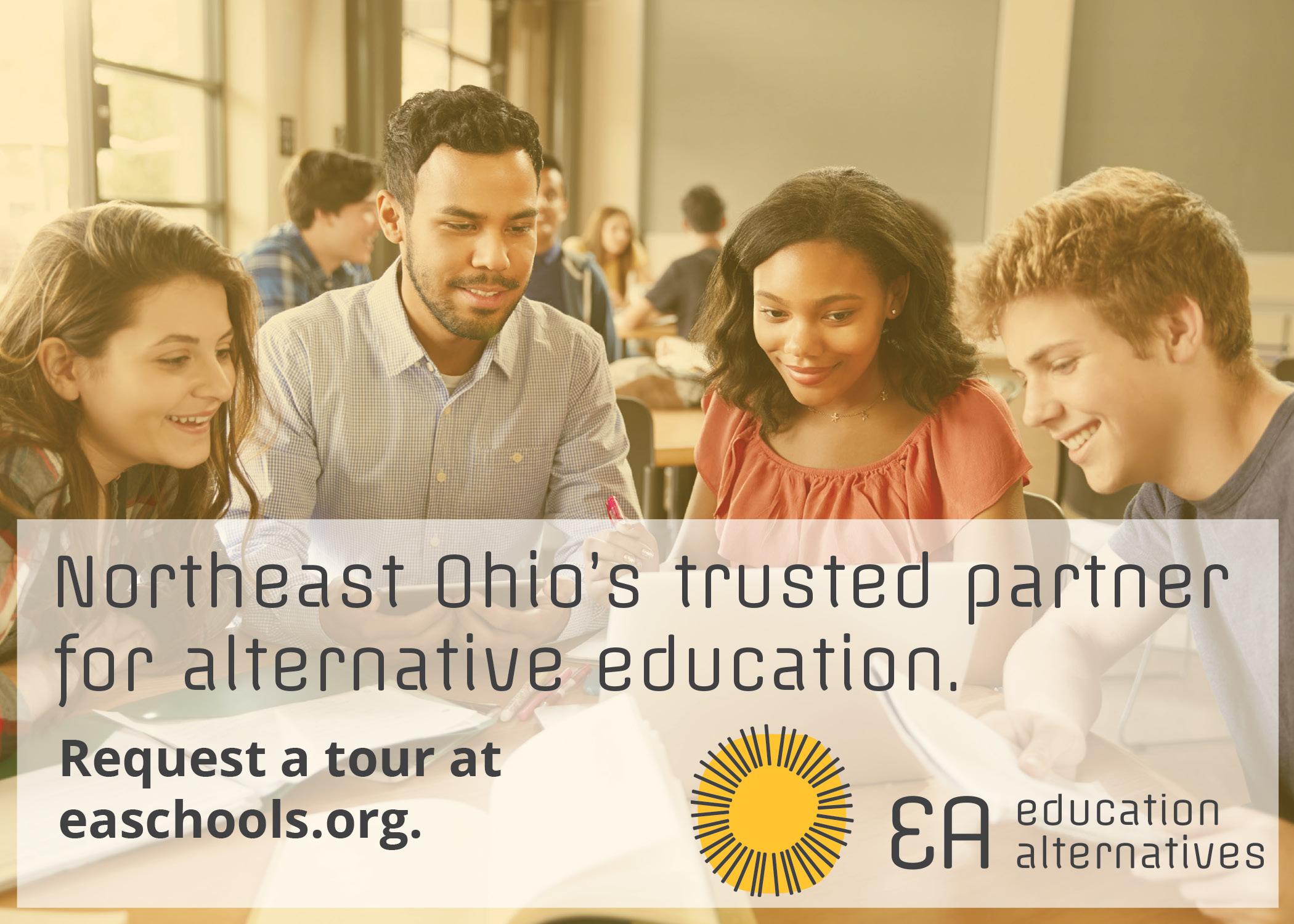
12 livespecial.com 2021-22
Education
Strategies for Early Intervention
It’s important to create a successful learning environment for your child with autism spectrum disorder (ASD) at an early age.

“During the critical first years of life, when evidence-based interventions are in place, the data supports major long-term positive effects on symptoms and the future progress of skills,” says Samantha Chesney, M.Ed, BCBA at Streetsboro-based KidsLink Neurobehavioral Center, which has a team of professionals to provide total care support of treatment, education, activities and family services for children with autism and other developmental disabilities.
Chesney and the team at KidsLink Neurobehavioral Center provide some of those strategies for early intervention for ASD.
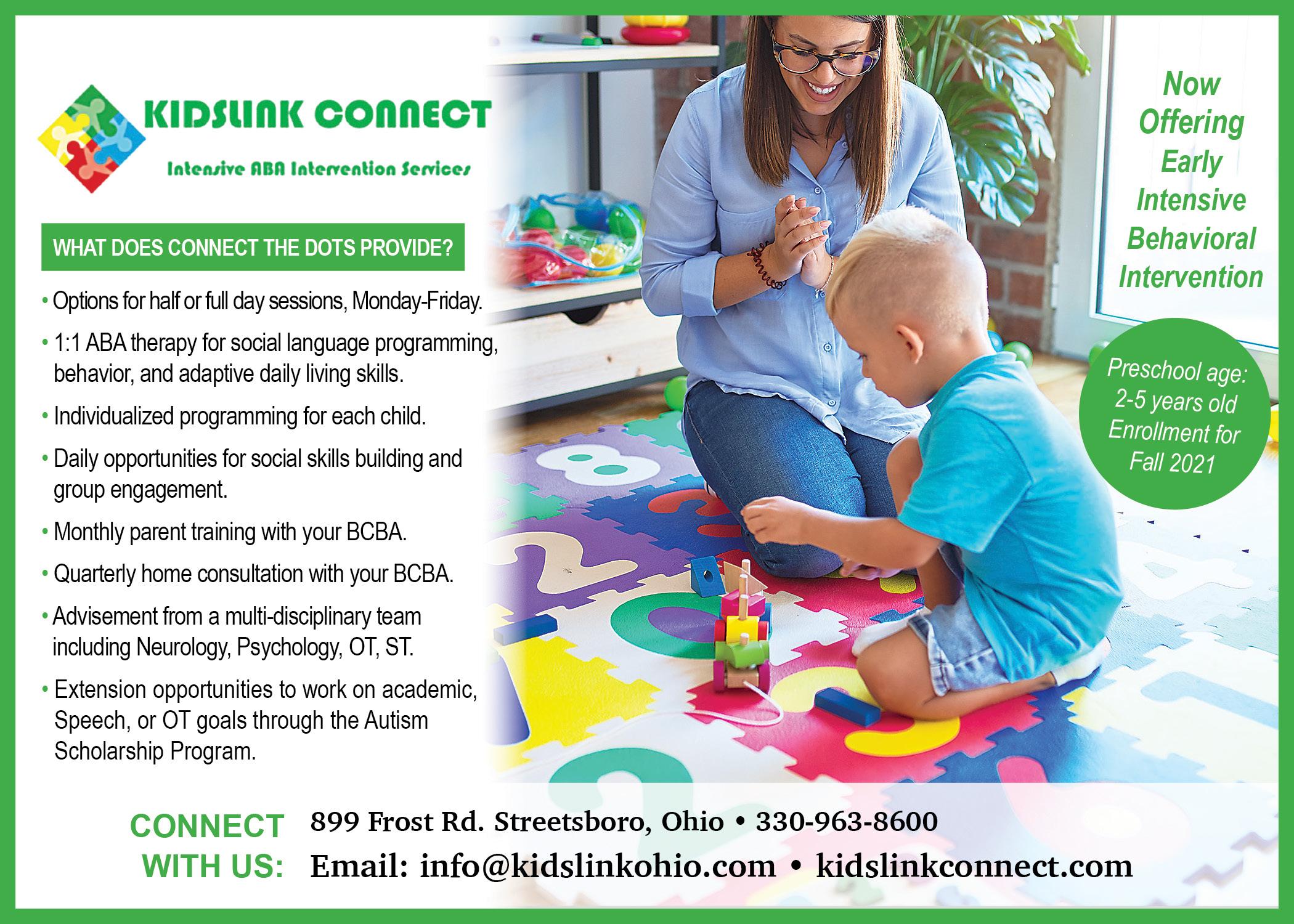
Dr. Nevada Reed, pediatric neurologist, encourages families not to listen to the adage that “it’s normal for him to be slower with speech, he’s a boy.”
Jocelyn Geib, PhD, CCC/SLP, says given that early learning areas of need can include different domains of development — physical, language, social, self-help and cognition — it is important that interventions address the scope of needs of the individual child.
“Initial assessments can help a family understand the strengths and weaknesses of a child so that interventions can be individually tailored for that child,” she says. “Interventions can include behavioral, therapeutic, diet and medication.
Research supports that applied behavior analysis (ABA) and early intensive behavioral interventions (EIBI) are the most empirically-supported interventions.”
RECENT DEVELOPMENTS
Early intervention has been greatly expanded in recent years to capitalize on a young child’s “neural plasticity,” according to Michelle DePolo, Psy.D., BCBA-D.
Collaboration among professionals and families plays a critical role in the effectiveness of interventions.
“Because early intervention may encompass multiple areas of development, guidance and treatment by professionals in these areas is necessary,” Chesney says. “An interdisciplinary model requires effective communication between service providers and families, as well as training and oversight to ensure strategies are utilized across environments.”
livespecial.com 2021-22 13
Education
PHOTO COURTESY OFKIDSLINK
Family Matters
By Sarah Rintamaki, executive director, Connecting for Kids
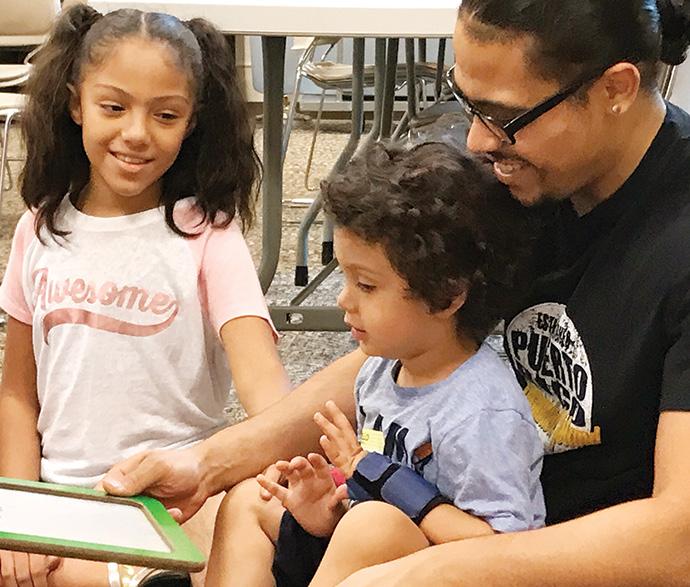
Whether you just received a new diagnosis or have been on this journey for years, Connecting for Kids fields hundreds of calls from those looking for resources in our local community. Here are the top questions asked:
HOW CAN I FIND A SPECIFIC THERAPY OR SOCIAL SKILLS GROUP? Did you know that greater Cleveland offers a wide range of therapy and social skills options? Whether it’s ABA, vision, feeding, speech-language, occupational, physical or therapeutic riding, whatever therapy you seek, chances are there is something close to home. Could your child use some social skills practice? From the east side to the west, there are many choices for social skills groups based on the specific needs of your child. WHAT ADAPTED PROGRAMS ARE AVAILABLE LOCALLY?
Families are surprised by the many adapted activities offered right here in our backyard. Northeast Ohio parents can tap into adaptive aquatics, yoga, baseball, basketball, dance, ice skating, martial arts, soccer and more. For opportunities that don’t involve sports, consider adapted art, cooking and music. If cost is an issue, local libraries offer free adaptive programs. I JUST RECEIVED A NEW DIAGNOSIS. WHERE DO I LEARN MORE?
Several area nonprofits focus on specific diagnoses, such as ASD, Down syndrome, epilepsy, food allergies, dyslexia or mental illnesses such as ADHD or anxiety. A call to Connecting for Kids can point you in the right direction and provide resources as you begin to seek help for your child.

HOW DO I FIND A FAMILY LIKE MINE?
Since this journey can be lonely, Connecting for Kids and other local organizations offer support through both in-person and online groups. Some also match you with another family that is in a similar situation. Finding people who can support you during hard times and celebrate accomplishments is important. To learn more, visit connectingforkids.org.
14 livespecial.com 2021-22
PHOTO COURTESY OF CONNECTING FOR KIDS
Sensory-Friendly Experiences in the Outdoors
Exploring nature, like at the Nature Center at Shaker Lake's All People's Trail, provides opportunities for people of all ages and abilities to access Northeast Ohio’s native habitats and beautiful scenery. Here are some tips on how to create a unique, fun and sensoryfriendly outdoor experience for all:
• Pack a picnic and enjoy the peaceful sounds of nature.
• Listen for the sounds of water flowing.
• Listen for birds calling as they prepare for their journey south. How many different bird sounds can you identify?
• Smell the flowers and listen for the buzz of pollinators throughout the forest or near flowering native plants.
• See the colorful blooms of the flowers, trees and plants.
• Have fun on a scavenger hunt looking for the hidden animals along the All People’s Trail.
• Touch the 300-year-old oak tree at the Nature Play Area on Stearns Trail.

• Touch and smell the leaves of the spicebush near the front door of the Nature Center.
• Close your eyes and imagine what this region looked like 200 years ago. Then discuss with others.
Experience the Nature Center at Shaker Lakes’ newly renovated All People’s Trail (APT), which is aptly named for its readiness to welcome people of all abilities. The APT is a 1/3-mile, ADA-accessible elevated boardwalk that overlooks a native marsh, winds through a floodplain forest and offers a bird’s-eye view of the Doan Brook. The recently restored Stearns Woodland Trail now also includes ADA-accessible trail segments and the fully accessible Jimmy’s Treehouse. Transformation of the North Woodland Trailhead, made possible by the Cleveland Foundation, has improved ADA accessibility and connectivity from the All People’s Trail to the larger Lake to Lakes trail system and surrounding lakes throughout the greater Shaker Parklands. shakerlakes.org

livespecial.com 2021-22 15 PHOTO
OF
CENTER AT
Education
COURTESY
NATURE
SHAKER LAKES
Nothing About Us, Without Us
Playing a Part in the Neurodiversity Revolution
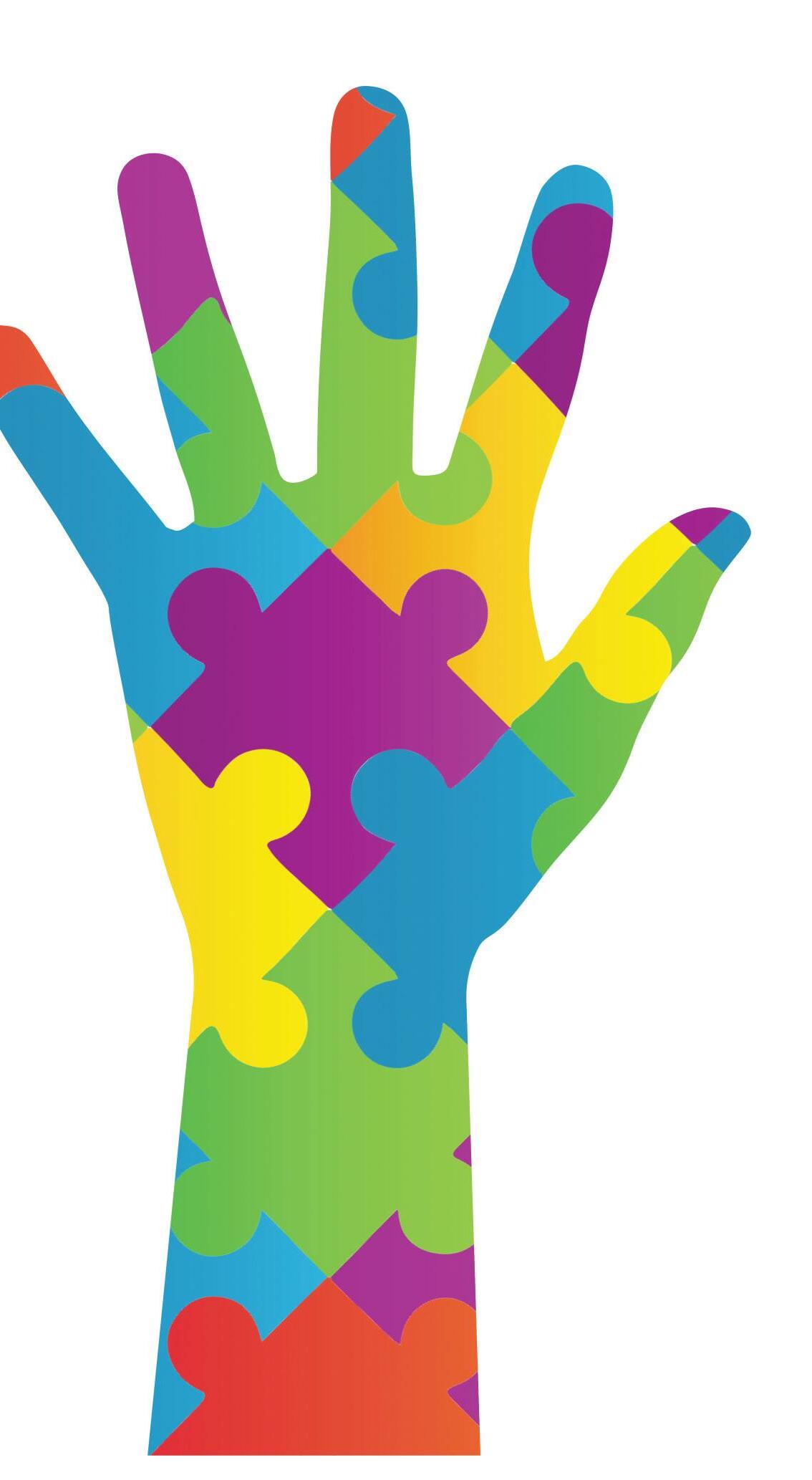 By Nera Birch
By Nera Birch
Being proud to be autistic is a relatively new concept for me. I was taught all my life that my autism was something I needed to hide, to be ashamed of. I was forced to mask my autism by my parents, teachers and doctors. Only recently have I been able to take off the mask. Now that it is off, I am ready to start speaking about my autistic experience.
I very much respect the professionals and parents who support those who have autism day in and day out. I’m sure it can be exhausting, especially for parents. However, unless you are autistic, you don’t know what it feels like to be autistic.
Autism is a neurological disorder and because of that, it affects every inch of our lives, including the way we experience every sense and the way we interact with the world around us. We don’t even get a break while sleeping. Most autistics consider it a good night’s sleep if they reach four or five hours. It can be incredibly difficult to just live a simple day. I have at least one panic attack a day, because it is so overwhelming to have constant stimuli that you can’t process thrown at you from every angle. There is a great quote in the disability community: “Nothing about us, without us.” The autistic community doesn’t always have a voice, and it’s not just because some of us are non-verbal. While there are many respectful, trustworthy autism professionals out there who believe in patient or client-led care and are doing wonderful work, the sad truth is that there also are people who choose not to listen to us. They think they know what is best for us. I’ve had conversations with doctors who, once they find out I have autism, will start addressing the person next to me, as if I am unable to comprehend the situation. It can be very frustrating to be treated as though you have no intelligence.
The time to change the perception of what it means to have autism is now. We are at the forefront of the neurodiversity revolution. People with autism are making themselves heard. We are showing society that our neurodiversity is a positive, not a negative. Personally, I use my self-advocacy to train neurotypical community members, such as first responders, about how to approach and treat autistics. I also helped create a Discord community solely for people on the spectrum. The group is a safe place to ask for advice, share your special interests, and post a lot of really cute animal pictures. Above all, it is a space to make and connect with friends, which is not something we get in many places.
Milestones Autism Resources is a local organization that has been doing an amazing job letting self-advocates lead the way. I started speaking at the Milestones Conference in high school and have stuck by this organization ever since. They know that autistics are the best experts about autism, and they really practice what they preach, providing a model of what it looks like to give individuals with autism a platform to share their experiences with others in the autism community. This year, both the keynotes at the conference were women on the spectrum. Autism conferences, agencies and advocacy groups should all work to feature, integrate and consult the people they are trying to help.
This is the kind of change we need to see in the world. Once again, nothing about us, without us.
ABOUT THE WRITER
Nera Birch is a self-advocate with a passion for bringing awareness and advocacy to the Cleveland area. She comes to Milestones as a former volunteer and speaker, with a long history of public speaking alongside the Milestones coaching team about topics important to the autism community.

16 livespecial.com 2021-22
PHOT0: NEW IMAGE PHOTOGRAPY Advocacy
Nera speaking at the 2019 Milestones National Autism Conference
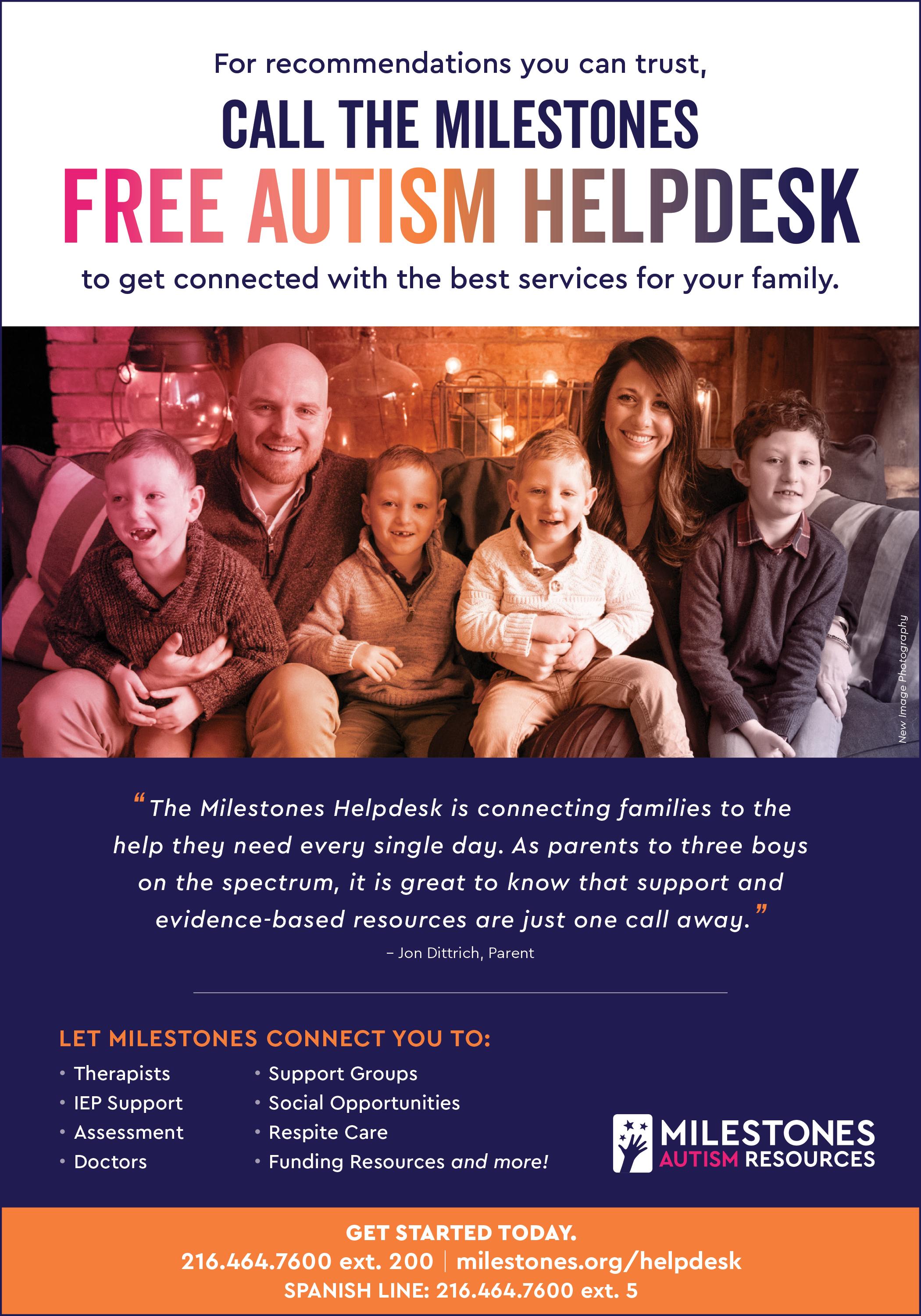
Therapies
Five Benefits of Adapted Dance for Individuals with Disabilities
Adapted dance programs are designed for individuals with differing abilities, focusing on creating an open environment in which all abilities can participate. The programs let participants explore a variety of movements with the opportunity for self-expression through dance, in addition to learning spatial awareness, balance and body control.
“Dance is a language,” says Howard Washington, creative director of dance at the Fine Arts Association in Willoughby, which provides an adapted dance program. “Through dance, a side of a student comes out or enhances something they already had. Adapted dance is a safe place where you can feel and see acceptance. It is an expressive place where you can share that unique side of you. Dance is the vehicle that can be whatever we want it to be.” “Several of my clients enjoy movement and dancing,” says Danielle E. Musat, MT-BC, adapted dance instructor and music therapist at the Fine Arts Association. “Adapted dance is an opportunity for students to work on continued communication/listening skills while also focusing on body awareness and increasing self-esteem through learning structured movements. By asking clients to share their ’favorite‘ dance moves and teach their peers, I have seen increased direction following and pride, plus a release of tension.”
To learn more about FAA’s Creative Arts Therapies Program, visit fineartsassociation.org/education/therapy

HOW DANCE HELPS:
1. Provides a safe place for self-expression. In dance, your body conveys a message through your feelings and emotions. In the classroom, you have the freedom to beyourself.
2. Movement and exercise. Dance increases muscular strength, endurance and motor fitness. Adapted dance enables you to move in such a way that it is a fun method of staying healthy.
3. Making meaningful connections. In dance class, you can connect with one another and make new friends.
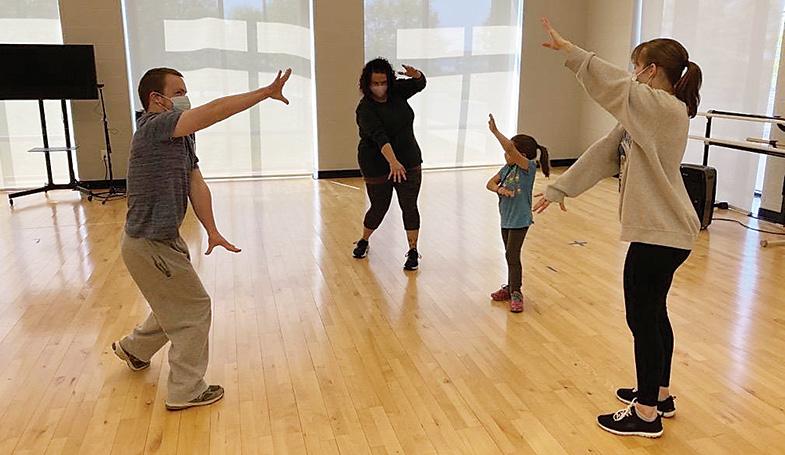
4. Increases self-esteem. Dancing gives you the potential to accept your body and mind as is and appreciate your own beauty, movement and rhythm.
5. Improves balance and coordination. Dance keeps your body conditioned and your mind focused, which heightens your ability to perform other physical activities outside of the classroom.
18 livespecial.com 2021-22
Miss Danni and Miss Rose with adapted dance students Peter L. and Emily R. at Fine Arts Association in Willoughby.
PHOTO COURTESY OF FINE ARTS ASSOCIATION
Family Matters
Foster Care for Children with Medical Needs
One family shares their story and OhioGuidestone offers tips on how to foster a medically fragile child.
Michelle and Bryan McManus have been caring for children with medical needs for more than six years.
“Over the past six years, we have cared for 13 foster children,” Michelle McManus says. “Along the way, our two biological children have learned to love children who don’t look like them — babies who rely on medical devices to eat and equipment to help them stand. They have woken up to new breakfast guests and immediately welcomed them by sharing their toys, their parents and their rooms with these new siblings. Their eyes have been opened to the huge need outside their comfortable, suburban home.”
Children who are medically fragile have likely experienced high levels of trauma and have medical needs that require a patient, well-trained caregiver. Medical needs include possible complications from premature birth; the need for oxygen, feeding tubes or tracheotomies; chronic childhood illnesses; or children who may be non-ambulatory.
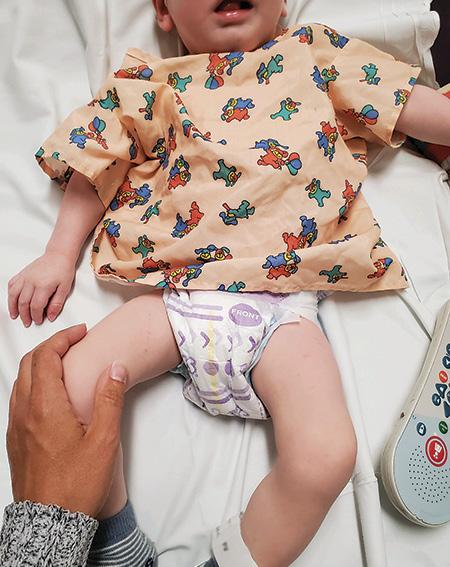
If you want to foster a medically fragile child, please know you do not have to have a medical background, just a willingness to learn. Each family goes through 36 hours of preservice training, two more hours with an agency nurse, then a
home study. A flexible schedule is a must, as these children have many doctors appointments and therapies to keep them healthy. To be licensed and successful, all foster parents must be financially stable, 21 years of age or older, pass a criminal background or abuse/neglect check, and be wellsupported by family and friends.
“Now, as I sit in the emergency room for the second time in five days with a baby I can’t call my own, I am reminded why I became a foster parent,” Michelle McManus says. “My phone rings. It’s the placement coordinator. I learned about a 5-yearold boy, in the same hospital, who needs a safe place to call home. It breaks my heart to say no. I became a medically fragile foster parent to stand in the gap for children just like him, but I also know my limits. The days are long, the sleep is scarce, the advocating is fierce, but the need is great. I wouldn’t trade my life for anything.”
For more than 157 years, OhioGuidestone has been helping children and families on the pathway to growth, achievement and lifelong success. OhioGuidestone’s Medically fragile foster parenting: if not you, then who? Take a courageous step, become a foster parent today. Call 216-402-0381 or submit an inquiry at ohioguidestone.org.

livespecial.com 2021-22 19
PHOTO COURTESY OFMICHELLEMCMANUS
Family Matters
5 WAYS TO POWER YOUR PARENTAL INTUITION
A parent’s “spidey sense” kicks in when something is not right. Here are five key ways to convert the spidey sense into action.
1. THE EARLY BIRD CATCHES THE WORM. Parents are usually the first to notice early developmental delays in their child. Talk to your pediatrician right away and insist on getting testing done. Early diagnosis means early intervention and early access to resources.
2. EVERYONE SERVES A DIFFERENT MASTER (EXCEPT YOU). Most providers focus on optimizing the resources and finances for their schools or clinics. Your child is just one among many needing support. You need to advocate for everything your child deserves, and you have a voice — a parent is an ‘expert’ under the law.

3. IF YOU WANT A THING DONE WELL, DO IT YOURSELF. A child spends 60% of their time in your care, much more than at school or therapy. Nowadays, pediatric professionals are accessible online (virtually), and you can get self-help lessons to help your child at home.
4. GET A SECOND OPINION. Reach out to parent mentors who have been in your shoes before to discuss your concerns and get qualified guidance based on real experiences. You can also get a quick consult with online professionals. Get a second opinion on any proposed education plans.
5. SQUEAKY WHEEL GETS THE OIL: If you don’t request a service, you won’t get it. Create the right negotiation and message with the help of parent mentors to get all the special needs resources your child deserves. Get loud.
Charu Ramanathan and Ketal Patel are the creators of Vitalxchange, an online community empowering parents with a parent mentor and professional ‘VitalGuides’ to support them at every step of their special needs parenting journey.

20 livespecial.com 2021-22
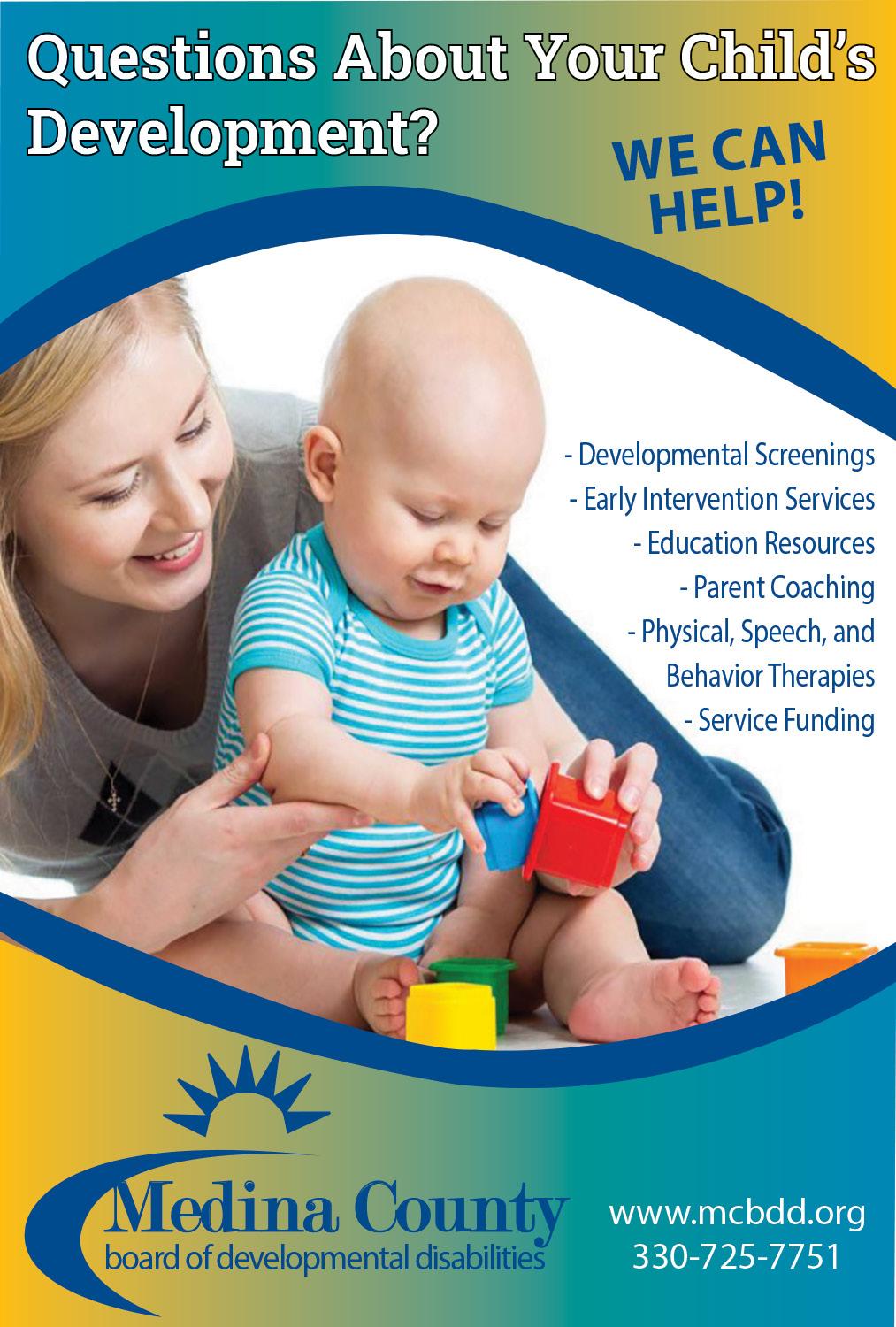



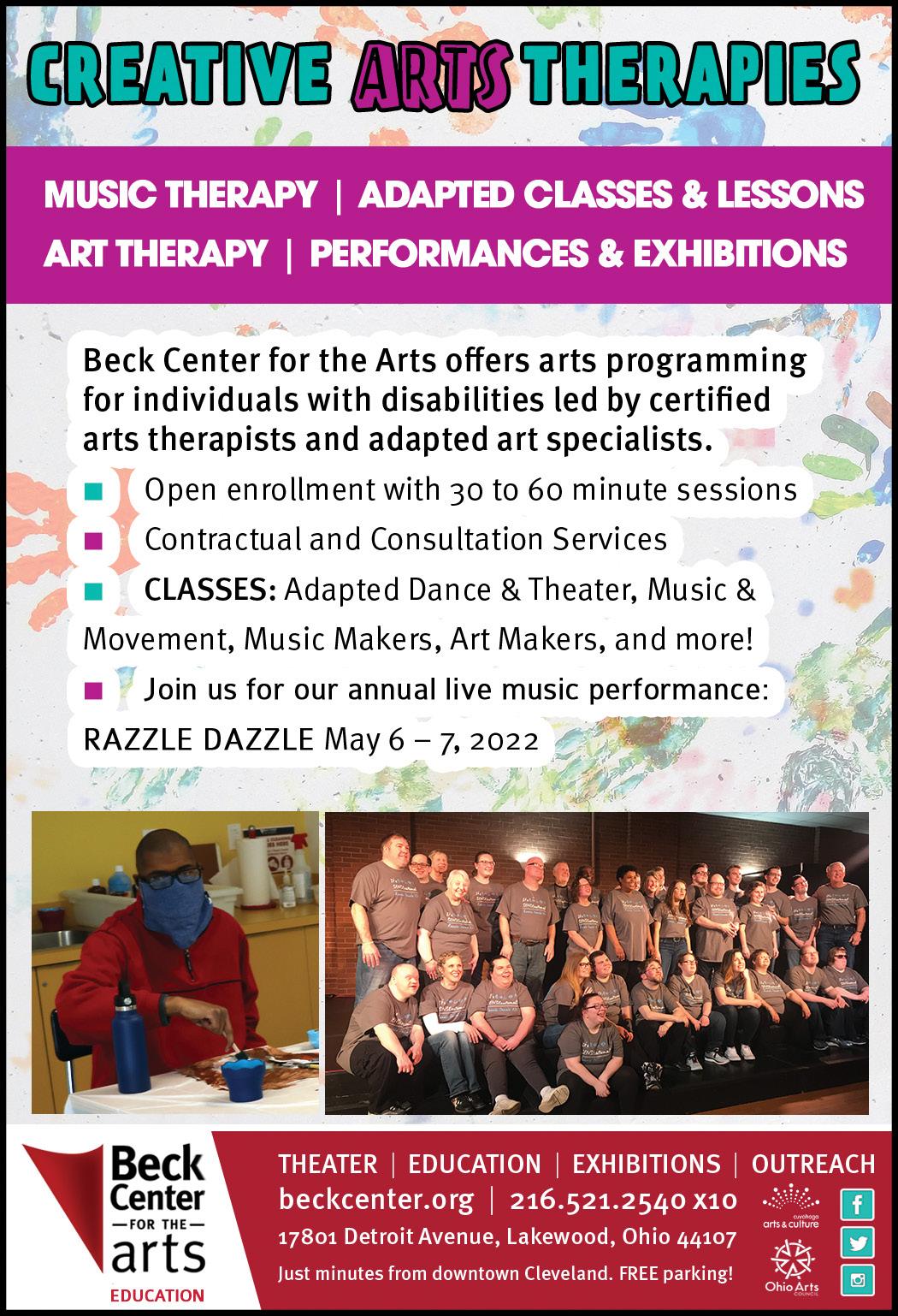
DEVELOPING A MORE INCLUSIVE COMMUNITY
FIVE THINGS TO PROMOTE INCLUSION
1. Be Inclusive. Support ways people with disabilities can fully participate in all aspects of community life.
2. Volunteer. Share your time, interest and friendship. Become a community friend.
3. Hire someone with a developmental disability and enhance workforce diversity. People with disabilities can work and want to work.
4. Connect. Support and empower people with developmental disabilities.

Being a part of the community was especially challenging during the COVID19 pandemic — particularly for people with developmental disabilities.
It also highlighted the need to continue efforts to provide unique offerings, including virtual and recreational activities.
To help improve the accessibility,
5. Inspire. Invite one of Cuyahoga County Board of Developmental Disabilities Good Life Ambassadors to speak at your agency, business or event.
available to people with developmental disabilities of all ages throughout Cuyahoga County.
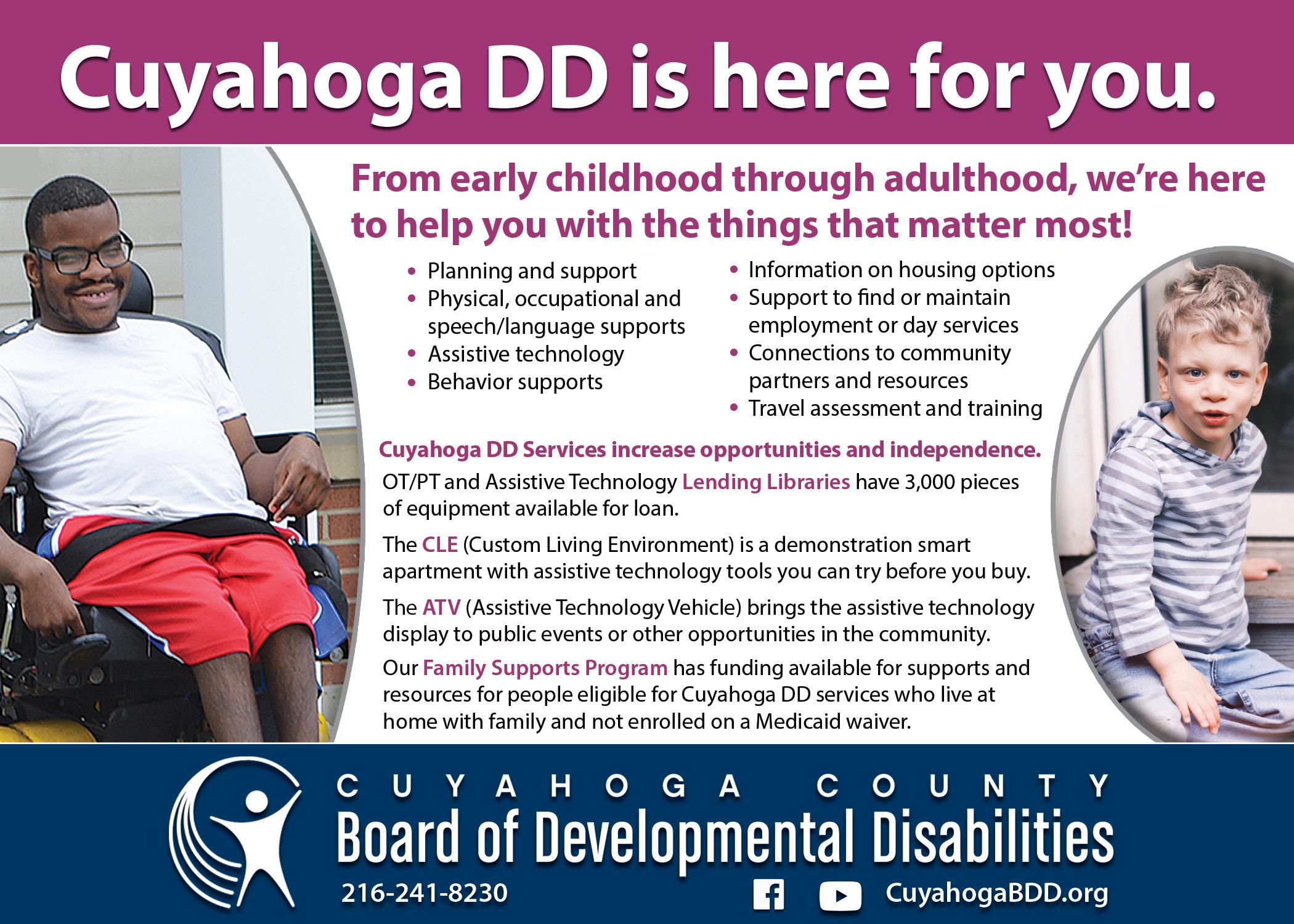
depth and breadth of services offered, the Cuyahoga Board of Developmental Disabilities (DD) provided funds to 14 local recreational agencies and municipalities to expand their services to and usage by adults with developmental disabilities. This expansion means that more community-based recreation programs, including adapted options, will be
To help connect individuals with developmental disabilities with these and other inclusive places in the community, Cuyahoga DD created and maintains a Shared Virtual Community. To help businesses in the region ensure they are providing opportunities for meaningful inclusion, Cuyahoga DD created ALL Means ALL. The initiative provides guidance on actions businesses should take to be more inclusive — and upon successful evidence of meeting these guidelines, Cuyahoga DD will provide businesses with an ALL Means ALL window/door decal (as well as an electronic copy) to highlight their commitment to greater inclusion to the community.
To learn more about promoting an inclusive community and the recreation activities available, visit cuyahogabdd.org
22 livespecial.com 2021-22
Advocacy
Residential Setting Options: Choosing the Best Fit
By Andrew Kruse, CESP, director of business operations and residential services at UCP of Greater Cleveland
Making the decision to transition from a family home into a residential care setting can be daunting for individuals with disabilities and their families. It is important to have all the facts in order to make the choice that best fits your lifestyle.
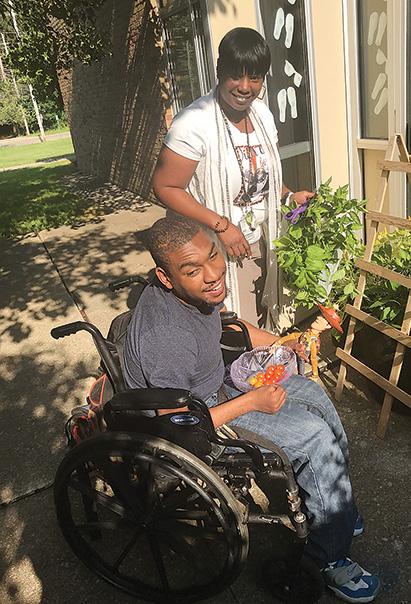
STEP 1: Choose your setting
There are two main options for living arrangements depending on care needs or level of independence.
Waiver homes, or group homes, have varying levels of support depending on your needs and can range from one bedroom apartments to eight-bed homes. Individuals can receive drop-in services or up to 24-hour support. Residents are responsible for their own bills, including utilities, rent, food and other expenses. A case manager is assigned to each individual by the county board of developmental disabilities.
An intermediate care facility (ICF) is the most intensive community-based residential setting; it is operated 24 hours a day and includes nursing support. An ICF is occupied by five or more individuals who have high medical and/or behavioral needs. The service provider is responsible for all aspects of a resident’s life, including medical care, food, utilities, living space, transportation and day programming. A dedicated case manager coordinates each resident’s care.
STEP 2: Choose your service provider
Choosing the right provider is key to a healthy living situation. A large, established agency with multiple supports will have specialized training, a greater number of staff and may also provide day and/or job training services. A smaller, independent provider may only have one staff member per home, which may limit support; however, this arrangement may offer you a more personal relationship.

STEP 3: Plan your transition
To plan for a successful transition to residential living, you must understand the level of support the home and/or provider offers and ensure it is the best match based not only on care but also on comfort. Before making a decision, be sure to take multiple tours of the home and plan visits and outings with potential housemates to determine compatibility. Residential living options for individuals with disabilities are offered in varying sizes and levels of support, which allows for a personalized fit. The decision should be carefully planned out so you can have the best possible life experience.
livespecial.com 2021-22 23 Family Matters
OF UCP OF
PHOTO COURTESY
GREATER CLEVELAND
Elaine Eisner and Scott Gohn, of Solon, spearheaded the LiveSpecial.com project with National Council of Jewish Women/Cleveland in 2012 with the hope of providing resources to people with disabilities and their families.

Their daughter, Alana, who was diagnosed with microcephaly as an infant, was the inspiration for the project, which now features more than 1,400 providers on LiveSpecial.com. The project has partnered with organizations for programs and events, and launched the annual print magazine in 2015. The dedicated and passionate Livepecial.com coordinator Wendy Spitz and NCJW/CLE volunteers like Cindy Glazer, Laura Kuntz, Nessa Siegel and more have helped to drive the couple’s vision of bringing families and resources together.
We talked to Elaine and Scott about the progress of LiveSpecial.com, the special needs community, being an advocate and tips for parents.
Q: What type of progress have you seen in services for the special needs community in Northeast Ohio and beyond?
Scott and Elaine: The more that LiveSpecial.com and other organizations show a presence in our community, the more opportunities are created for the special needs community. From special hours at public places to quiet rooms at sporting events, these all grow based on the community’s concerted efforts to bring awareness to what is possible. What we have learned is that if you ask for something — a special viewing with Santa at the Greater Cleveland Aquarium or a sensoryfriendly show at Cleveland Playhouse — that everyone is more than willing to create an environment for inclusion. We have come so far, but there is always work to be done so that one day we do not have to ask for these accommodations and they are just part of the everyday culture.
Q: How do you think LiveSpecial.com has expanded beyond your vision of an online forum?
Scott and Elaine: The primary objective of LiveSpecial.com was to connect individuals
with service providers. The database has grown over the years, but what was learned was that families are thirsting for information and personal interaction. Over the years, LiveSpecial.com has sponsored and collaborated on hundreds of educational programs. In addition, it produces an annual publication that reaches thousands of families. The total of LiveSpecial.com has provided vast knowledge to families and allowed them to find resources to advocate for their loved ones.
Q: What tips can you provide for new parents who are still struggling to get a diagnosis or find providers?
Scott: Alana’s initial diagnosis took over 6 years and her final diagnosis has yet to be determined. The “why” Alana is the way she is was important to Elaine and me in the early years because we wanted to know what therapies or treatments would be beneficial to her growth. However, we quickly learned the why does not matter; what matters most is securing all therapies and resources available. Reach out and ask another parent what works for them, ask teachers, ask therapists, always be inquisitive and ask for help. This again goes back to advocating for your loved one. As they said in school, there is no dumb question except the one you did not ask.
Q: While working on our first issue of LiveSpecial.com Magazine in 2015, we met your daughter, Alana, She was 6 years old at that time and we’ve since covered many aspects of her life, like theater, skiing, swimming and her connections with friends at school. Tell us what she is doing today and about her growth over these years.
Scott: Alana was progressing very well and then March 2020 came along. The pandemic hit everyone, and Alana was not immune to this. We are blessed that Alana is a highly social kiddo and was surrounded by many friends who enjoyed interacting with her. The pandemic was difficult because that socialization abruptly ended. What was heartbreaking to Elaine and me was that there was no way to communicate to Alana why she wasn’t going to school or having play dates with her friends. We are not special here and realize this was a very difficult time for all families and individuals with disabilities. Elaine: Now that things are opening, she can
see her friends, swim, and get back out into the community again. It is wonderful to see her interact again with her peers (probably because she is sick and tired of playing with Mommy and Daddy). As we write this she is away at overnight camp. She also grew enough in size so that she can go to waterparks — yes, she loves the big slides. She still loves anything to do with fish and water. Skiing is her winter sport, and she can now ski without being tethered to an instructor. The next adventure is tandem biking with us.
Q: What have you learned about being Alana’s advocate?
Scott and Elaine: Don’t ever give up, don’t ever take no for an answer, and don’t ever underestimate the will power of a child. When Alana was an infant, we were told to put her into a home, to make other arrangements and to move on with our lives. We were told that Alana would never swallow, stand or communicate. She has proven every one of those doctors wrong and continues to grow. Nothing makes us prouder than when Alana achieves a goal, overcomes an obstacle or reaches a new milestone. It sometimes takes months, or even years, for a goal to be met, but there is nothing more satisfying than seeing an achievement by kiddo who was told they could not succeed.
Q: What tips can you share for new parents who are still finding their voice in this community?
Elaine: Get involved and get engaged. You will find that many people in the special needs community are willing to help. You are not alone, and you do not have to try and recreate the wheel. If you need help or are looking for a resource, just ask. You will get many opinions; some will resonate with you and others will not. It is OK to try something and realize it does not work. It’s better to try than think, “If only I had tried.” No matter where you live, if your child has a diagnosis, register with your county health department — they have more resources that you might not know about. Make sure to get a support administrator through the county. You have to push for inclusion and therapies in your school district. If your child is on an IEP, find a professional (to help navigate the process) to make sure you are getting everything.
24 livespecial.com 2021-22
THEN AND
LIVESPECIAL.COM
NOW:
PHOTO
The
founders of LiveSpecial.com, Elaine Eisner and Scott Gohn, tell us how the resource is evolving. They also give an update on their daughter, Alana, who was the inspiration for LiveSpecial.com.
COURTESY OF ELAINE EISNER
NC J W CLE
Nominate your CHAMPION today by submitting this application and the reason why this person is a CHAMPION.
“How My Nominee is Living Like a CHAMPION with a Disability” OR
“How My Nominee Makes a Difference for CHAMPIONS Living with a Disability”
Please nominate individuals in one of these categories:
• AGE 3 – 10 *
• AGE 11 – 17 *
• AGE 18 – 25 *
• AGE 26 & OVER *
• CAREGIVER | EDUCATOR | ADVOCATE
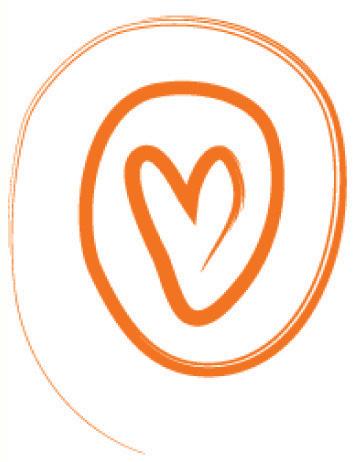
*Parent or caregiver may assist in the completion of the nomination.
NOMINATION FORM DEADLINE
April 1, 2022
CELEBRATION OF CHAMPIONS AWARDS DINNER
June 29, 2022
Covid safety practices will be followed
CHAMPIONS and a friend will be our guest at the awards dinner. Each Gold Medalist CHAMPION will receive a personalized award and $500 towards an approved program, service, or adaptive device. All CHAMPIONS will be recognized.
** All entries become the property of NCJW/Cleveland and will not be returned. Submitting an entry grants permission for your entry to be publicized by NCJW/Cleveland whether it is judged to be a winning submission or not. Award recipients’ names and photographs may be used in publicity efforts.
Nominate your CHAMPION today by submitting this application (on the back of this page)
STRONG
WOMEN POWERFUL VOICES
Nominee Name _________________________________________________
Address _________________________________________________ City _________________________________________________
State/Zip _________________________________________________
Telephone ________________________________ E-mail ________________________________
Date of Birth ________________________________ Age __________
School/Employer _________________________________________________
Your name (if different from nominee) __________________________________
Address _________________________________________________ City _________________________________________________
State/Zip _________________________________________________
Telephone ___________________________ E-mail _________________________________
Your relationship to the nominee ____________________________________
Please attach on a separate sheet the reason why your nominee is a CHAMPION.
AGREEMENTS
Parent/Guardian Permission: I give my permission for my child/ward to participate.
Signature _______________________________________ Relationship ____________________ Date _________

I grant NCJW/Cleveland permission to use my picture/picture of my child for their public relations purposes.
Signature _______________________________________ Date
26055 Emery Road, Unit L Warrensville Hts., OH 44128
For more information contact Cindy Glazer: Champion@NCJWcleveland.org
For more information call 216-378-2204
___________________________ NOMINATION FORM U.S. Mail The LiveSpecial.com Awards Celebration of Champions C/O NCJW/Cleveland
eMail
Fax
Champion@NCJWcleveland.org
The LiveSpecial.com Awards Celebration of Champions (216) 378-2205
SUBMIT YOUR NOMINATION FORM NC J W CLE STRONG WOMEN POWERFUL VOICES
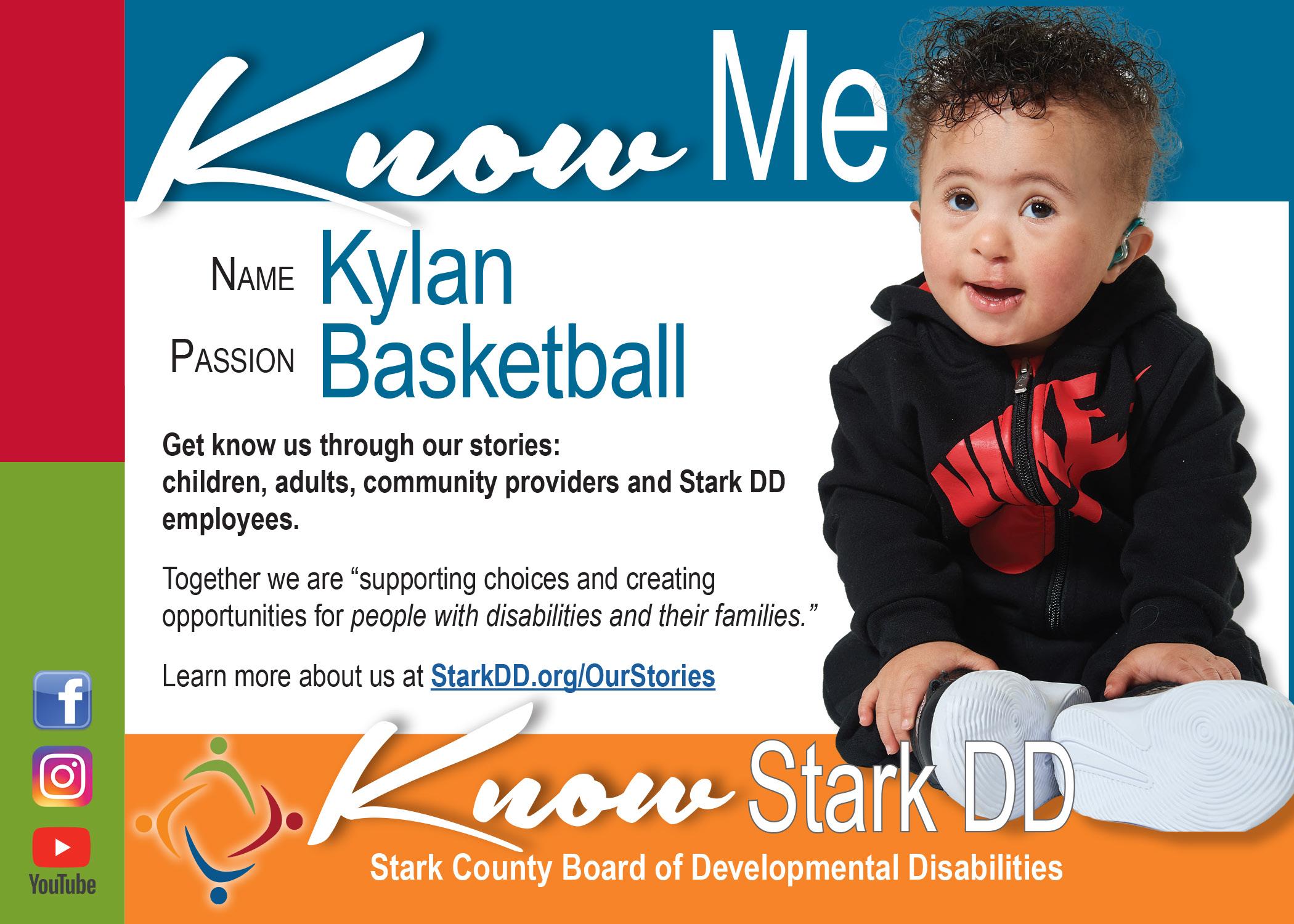
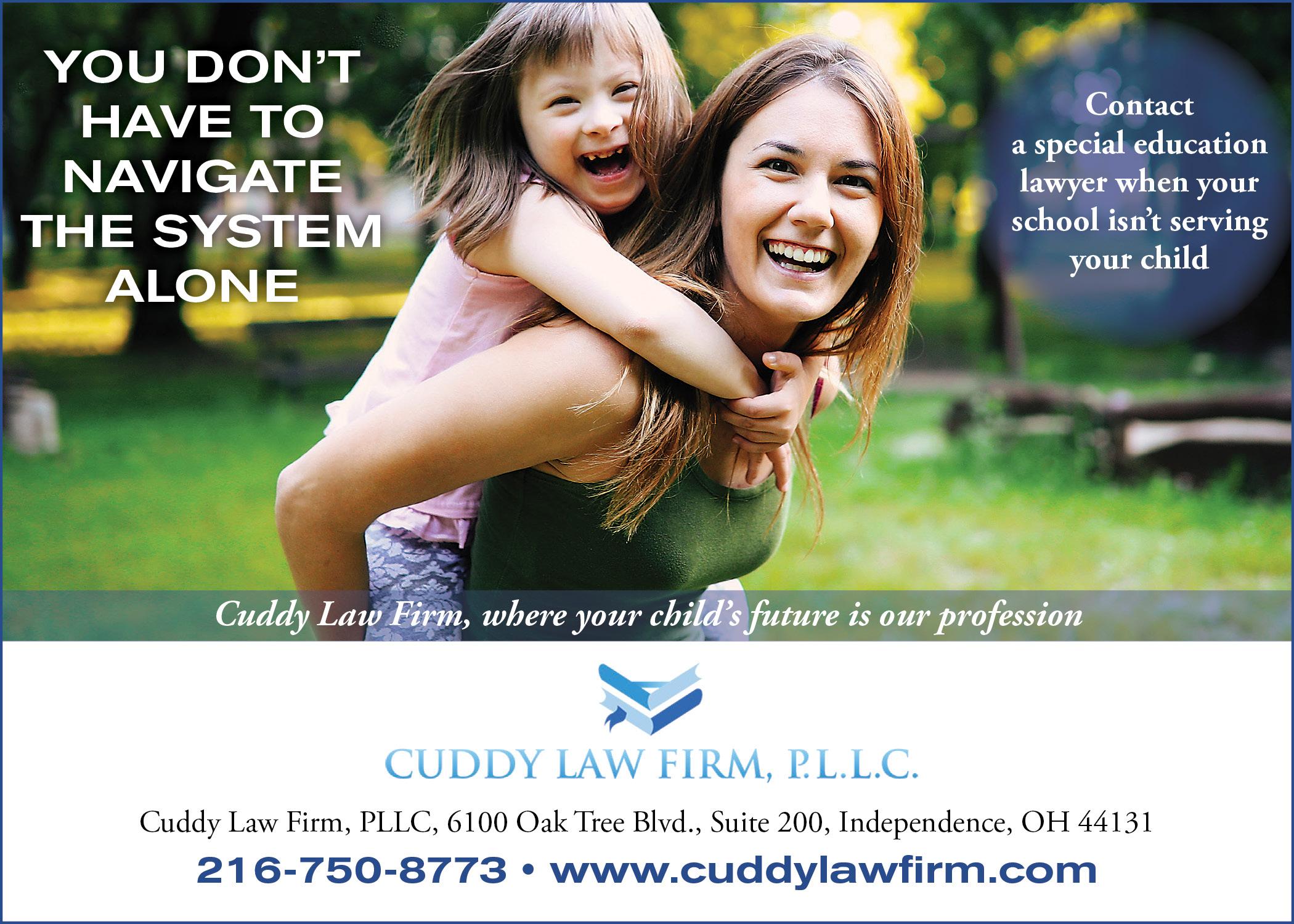
livespecial.com 2021-22 27
Making PROGRESS
For people with disabilities, the Americans with Disabilities Act, passed into law in 1990, was a stepping stone for progress. It prohibits discrimination against people with disabilities in areas including employment, transportation, public accommodations, communications and access to state and local programs.There have been strides in the community with each generation, but change and advocacy still need to keep moving forward.
“I think the driving force for progress is in advocacy,” says Amanda Stohrer, MS, OTR/L, ATP, occupational therapy manager and assistive technology professional at LeafBridge Center of Excellence at UCP of Greater Cleveland. “Children, their parents, and adults with disabilities are advocating strongly for change. They are educating themselves, leaning into their support networks, and joining forces to make their voices louder. This is what it is going to take — lots more of this!”
Here are highlights that are progressing in the right direction for all ages and all abilities.
Technology
opportunities to connect with others.
“Overall, technology has had a positive impact on people with disabilities,” says Rebecca Guenther, MA CCC-SLP, ATP, speech-language pathologist supervisor at LeafBridge Center of Excellence at UCP of Greater Cleveland. “As technology becomes a mainstream staple in our world, I think we have seen many positive effects on all people. It’s the norm to carry a tablet or phone. Tech is ‘cool’ and no longer seen as something that stands out in a crowd or is a stigma.
“When I started in the field, it seemed anything designed for ‘people with disabilities’ was big, bulky, expensive and sort of difficult to manage,” she adds. “Now, there are more seamlessly integrated
coverage for these types of services. Without assessment and training, even if the physical device is available, it makes it inaccessible for most individuals.”


Guenther adds that progress is much faster when the technology benefits the general population.
“When technology is seen as beneficial for the general population (ie. iPads/apps), it is often much more accessible and affordable,” she says. “When a tool or product is deemed as a ‘special needs’ product, it becomes tied to higher costs and requires many more insurance hoops to jump through to obtain. Savvy advocates are needed to assist others in obtaining the tools and technology that should be a given.”
By Angela Gartner
Accessible Services
For people with disabilities, there has been movement in ensuring access to certain resources such as sensory kits, special events and programs. Programs like Connecting for Kids have helped library systems create adapted programs across Northeast Ohio.
“They are not just offering more adapted programs, but many are training everyone on the staff, from librarians to custodians, on how to be more welcoming and inclusive to people with disabilities,” says Sarah Rintamaki, Executive Director at Connecting for Kids. “Libraries are an integral part of the community making sure people with disabilities are warmly welcomed. It’s an important step forward in greater Cleveland. They want them to get engaged and participate in these (programs), by doing that, (people with disabilities) are participating in the community.”
Other organizations have spearheaded programs in sporting venues, zoos and more to provide more inclusive, sensoryfriendly zones for people with disabilities.
28 livespecial.com 2021-22
According to the ADA National Network, in 1991, “the Department of Transportation issued regulations mandating accessible public transit vehicles and facilities. The regulations include requirements that all new, fixedroute public transit buses be accessible and that supplementary paratransit services be provided for those individuals with disabilities who cannot use fixed-route bus service.”
People like Donna Prease, who was born with osteogenesis imperfecta, a bone disorder, had the ability to make recommendations to the Greater Regional Transit Authority. She also has advocated for transportation for people with disabilities in Ohio and other states.
“We were on the ADA committee and looked at drawings of stations to make recommendations and see what needs to be fixed to be compliant,” she says. “We are thankful for the ADA for paratransit, door-todoor and all the (transportations services) that help accommodate people with disabilities.”
However, work still needs to continue in order to help everyone who needs reliable and easily accessible transportation. One concern, according to Prease, is funding.
While she says she is able to schedule transportation, there are people who are unable to drive and are not able to do basic things such as grocery shopping. “It’s depressing,” Prease says. “(They) want to go out in the community.”
Ravas, says mobility — specifically power mobility — is promoted to younger individuals as there is research that correlates early mobility with social development and learning.
“The standard walker has changed to include seats, all terrain wheels, an increased variety of arm prompts, and an increased variety of body weight support walkers that allow more individuals to experience self-mobility,” she says. “Ultra-lightweight manual wheelchairs were designed for adults with spinal cord injuries. However, more children and young adults with neuromuscular impairments are utilizing this technology and manufacturers are designing more options for youth.
“Power mobility is finally evolving to do more than just take someone from



“Society is more accepting of people with disabilities in the workplace and in their communities .”
Rebecca (Becky) Ravas, PT, MS, physical therapy manager at LeafBridge Center
point A to point B,” she says. “Using technology that is already in office chairs and automobiles, power mobility has critical components that include seat elevate, power-supported standing, and smart technology to reduce tipping, falls and collisions. Advancements have made self-directed mobility accessible to more individuals. An individual who cannot walk should have more options than sitting in one position to move about.”
Mobility
Transportation
Outside! Let’s Go
Check out these inclusive playgrounds, camps and other outdoor activities for all ages and abilities.
By Lindsey Geiss
Finding outdoor activities or play spaces suitable for all ages and abilities can be challenging; and, moreover, not every child freely tries new things. In fact, visiting someplace new can be downright daunting for families with sensory, physical or other special needs.
To enjoy an outing, it’s important to know what to expect and have a plan. We’ve cultivated a list of outdoor experiences that are meant to be barrier-free and welcoming to all through wheelchair-accessible, sensory-friendly, adapted and/or other special features. Some are organized programs or venues that charge admission, while others are free for self-directed exploration.
ASHTABULA COUNTY
ASHTABULA COUNTY METROPARKS
With over 1,200 acres of publicly accessible parkland throughout Ashtabula County, the park district manages 30 miles of paved, ADA accessible greenway and bike trails with many starting and stopping points providing different experiences. The Western Reserve Greenway is a paved rail-trail extending 44 miles through Ashtabula and Trumbull counties. For families looking to return to the same point where they began, Friends of Conneaut Creek Metropark (27 Blakeslee Road) features a paved loop trail with benches, and Red Brook Metropark (4338 Lake Road W., Saybrook Twp.) has three miles of paved trails, beautiful forests, meadows and floodplain protecting two miles of Red Brook. Visit the park, or go to ashtabulametroparks.com for virtual events.
CUYAHOGA COUNTY
ACHIEVEMENT CENTERS’ CAMP CHEERFUL
Set in the Metroparks’ Mill Stream Run Reservation, which features paved trails, the camp offers registrationonly recreation programs and camps for children and adults with physical, developmental and sensory disabilities. Year-round therapeutic horsemanship classes (age 4 to adult) utilize an indoor arena and outdoor trails with a sensory trail. Adapted sports (age 7 to adult) include baseball, football, indoor soccer and wheelchair basketball (year-round). Various day, weekend and overnight camps are offered. Camp programs for
ages 5 through adult run year-round and include such activities as arts and crafts, sports, hiking, nature study, campfires and water activities (weather permitting), including fishing, canoeing, hiking and swimming. Registration for Camp Cheerful Summer Day Camp for children with or without special needs Adult Weekend Day Camps for individuals ages 18 and older who have graduated high school. The River Rock Adult Day Program is an activity for adults with disabilities that offers gardening and landscaping, nature trails and education, horsemanship activities, daily exercise and more. Age and other requirements vary by program. campcheerful.achievementcenters.org
30 livespecial.com 2021-22
CLEVELAND METROPARKS
The park’s 18 reservations spanning more than 24,000 acres — with more than 300 miles of trails, eight golf courses, eight lakefront parks and zoo — include a number of paved accessible trails, such as a 1.7-mile loop at Acacia Reservation in Lyndhurst (Clubhouse offers handcycling for ages 10 and over). Rocky River Stables (19901 Puritas Ave., Cleveland) offers therapeutic horseback riding programs, and Hinckley Lake Boathouse offers adaptive kayaking for ages 12 and older. The new Lindsey Family Play Space at Lakefront Reservation near the Upper Edgewater Picnic Shelter offers a play area with wood chip surface accessed by a paved trail. It features sensory aspects and a range of nature play opportunities, including boulders, water and sand, as well as climbing structures (wood, rope, etc.), a tunnel and shaded areas. clevelandmetroparks.com
CLEVELAND METROPARKS ZOO
The zoo has KultureCity sensory inclusive certification, and offers tools and information for guests with sensory needs, including sensory bags available at the Guest Services Resource Center, six “quiet zones” and several “headphone zones” on a map denoting where loud noises are present. While all areas of the zoo and rainforest are wheelchair accessible, the free tram service and paid wheelchair rentals or weekend golf cart cruises offer added mobility options. The new Eagle Zip Adventure ride, which boards on the platform next to Wade Hall, takes seated, strapped-in guests backward over Waterfowl Lake up 150 feet above the zoo before pausing at the top and releasing them for a
thrilling 700-foot zip ride back down to the starting platform, reaching speeds up to 35 mph. The family-friendly experience accommodates two riders per car with minimum rider height of 42” with a paying adult or 48” to ride alone. clevelandmetroparks.com/zoo. A zoo social story is available at summitdd.org.
CLEVELAND METROPARKS BEACH WHEELCHAIRS
Huntington and Edgewater beaches offer all-terrain wheelchairs with balloon tires and 360-degree casters for navigation through sand. They are free to borrow on a first-come, first-served basis when lifeguards are on duty (11 a.m.-7 p.m. daily), the first Saturday in June through the second Sunday in August, then weekends through Labor Day. Euclid Beach Park offers such wheelchairs on weekends.
EMPOWER SPORTS
Sports and exercise programs are offered at low or no cost for children and adults with various physical and cognitive disabilities. Clinics help build skills and league programs give athletes with special needs the chance to play alongside typically-functioning peers. Seasonal activities include outdoor softball and indoor basketball, fitness and yoga. empowersports.org
FOREST HILL PARK PLAYGROUND
Located just north of the Cleveland Heights Community Center, this historic urban park, once part of John D. Rockefeller’s estate, features playground equipment, picnic shelters, restrooms, baseball fields, a multipurpose path, a meadow and nature trails, and is bordered by the dugway creek. The new inclusive playground has equipment for 5- to 12-year-olds and is intended for all abilities with appropriate swing sets and seating, and a wood-fiber mulch surface. The Forest Hill all-purpose pathway connects the East Cleveland and Cleveland Heights sections of the park. 2370 Lee Blvd., Cleveland Heights, chparks.com
LIBERTY PLAYGROUND
There are three playgrounds in the Elmwood Park area, but the most popular is Liberty Playground (west of the Civic Center between Safety Town area and Kiwanis Pavilion).
The structure for ages 5-12 includes multiple slides, climbing structures and spinners on a poured rubber surface, plus two racing zip lines. The ages 2-5 area includes multiple slides and climbing structures, accessible sand and water tables (you may bring toys for play), musical panels and a spinner. The Liberty Station building has restrooms. 6363 Selig Blvd., Independence, independenceohio.org
LYNDHURST PARK
This newly remodeled playground near the city pool has more accessible and interactive features. There is a zip line with strap-in seat, an accessible swing set and paved walkway leading to a ramp with music tone toy, among other features. The site retains wood chip flooring for now. 1331 Parkview Drive, lyndhurst-oh.com
PRESTON’S H.O.P.E. PLAYGROUND
Open daily 8 a.m. to 9 p.m. April through October, this sprawling, fenced public playground has an assortment of activities for all ages and abilities. Given its size, unless a child is older and can be alone without supervision, a one adult to one child ratio is recommended. 26001 S. Woodland Road, Beachwood, prestonshope.com
YOUTH CHALLENGE
Youth Challenge offers year-round adapted sports and recreational programming at no charge throughout the Greater Cleveland area for children with disabilities. Participants are paired up at each program with a trained teenage volunteer. Transportation is available on a limited basis via a fleet of lift-equipped vans. youthchallengesports.com
GEAUGA COUNTY
GEAUGA JOGGERS & WALKERS
Twice monthly, the group jogs and walks on the scenic trails of the Geauga Park District and local neighborhoods like Burton, Chagrin Falls and Chardon. Participants need to register and sign a waiver available at the Geauga County Board of Developmental Disabilities Metzenbaum Center, and those with extraordinary needs or concerns must be accompanied by a family member or caregiver. During November and December, the group moves indoors for yoga, boxing, dance or conditioning.
livespecial.com 2021-22 31
Check out LiveSpecial.com for more activities and adapted programs.
GEAUGA PARK DISTRICT
Geauga Park District manages more than 10,500 acres in 27 open parks and preserves, and its mission includes providing outdoor recreational experiences to residents of every age, every ability and at all times of the year. For example, the Beartown Lakes Reservation Lake Trail (18870 Quinn Rd, Chagrin Falls) is a 0.7-mile asphalt loop around Lower Bear lake with fishing platforms, and Observatory Park (10610 Clay Street, Montville Twsp) features six accessible fine gravel trails, interactive planetary pods, human sun dial and life-sized Great Pyramid cornerstones near an astronomical station. geaugaparkdistrict.org
LAKE COUNTY
LAKE HEALTH MIRACLE FIELD AND LUBRIZOL MIRACLE LEAGUE PLAYGROUND
Individuals with special needs can play baseball in a safe, welcoming environment. The sports complex, located next to Lake County Captains Stadium, features an accessible, latexfree rubberized turf field accompanied by an adaptive and wheelchair-accessible playground with ramps, climbing activities, slides, musical items and a seated zip line, as well as concessions. Visit miracleleagueoflakecounty.org or contact Mike Piper at MLofLakeCounty@ gmail.com or 440-497-6846.
LAKE METROPARKS
With more than 60 miles of trails and 35+ parks, there’s plenty to explore, including portions of two state designated wild and scenic rivers — and many tributaries. Recreational and educational experiences are provided by diverse facilities. Seasonal adapted experiences are offered and include such activities as archery, Fairport lighthouse history craft and hike, and craft-raft races. The Metroparks also encourages people with special needs to mainstream into any of their program offerings. Special Olympics sports offered by Lake Metroparks include basketball, track and field, volleyball, bocce ball, golf, bowling and a Nordic skiing program. People who are deaf or hard of hearing are encouraged to use the Ohio Relay Service at
1-800-750-0750. Penitentiary Glen (8668 Kirtland-Chardon Rd.) features a fenced Nature Play area with natural grass and rugged terrain for self-led exploration and sensory discovery with logs, tunnels and hillsides as well as a shallow pond and play campsite. lakemetroparks.com
MENTOR CIVIC CENTER PARK
This ADA-compliant playground is located between the Civic Center’s waterpark and ice arena. Features include pouredin-place rubber surfaces, ramps, merrygo-round, rockers and expression swings, which allow adults and younger users to swing facing each other. 8600 Munson Road, Mentor, cityofmentor.com
LORAIN COUNTY
CASCADE PARK INCLUSIVE PLAYGROUNDS
Near the main entrance at the base of a sledding hill, this large rock- and water-themed playground for children of all ages and abilities features a splash pad, swing sets, slides, musical instruments and a small bear statue. (Note: it is not enclosed.) A smaller rock- and water-themed playground (19 Acres Picnic Area) can be accessed from the North Entrance at 120 Floradale St. 387 Furnace St., Elyria, loraincountymetroparks.com
HOLLSTEIN RESERVATION INCLUSIVE PLAYGROUND AND TRAIL
Enter the building to access the outdoor, fenced playground with structured nature and water play elements, including swings, wheelchair swings, slide, sandpit, musical instruments, stocked fishing pond with accessible dock (must use free poles provided), and splash pad with zero-depth water area and nine adjustable water features including fountains, tumble buckets and water cannons. It is part of the Beaver Creek Trail connecting Hollstein Reservation and Amherst Beaver Creek Reservation. MercyHealth Amherst HealthPlex, 47160 Hollstein Drive, Amherst, loraincountymetroparks.com
LORAIN COUNTY METRO PARKS
With over 9,000 acres, the park district strives to offer programs countywide for all ages and abilities on a wide variety of topics. Inquire about
accessibility for specific programs not designated “adapted,” such as canoeing, paddling, snowshoeing and other seasonal recreation activities or educational offerings. Also, North Pointe Ballet offers themed dance lessons, choreography and storytelling led by staff of the professional company, and dancers of all abilities can participate. Carlisle Reservation (12882 Diagonal Rd., LaGrange), the largest of the parks, offers a Halloween Fair and Holiday Lights with festive multi-sensory walk- or drive-through displays along the short loop paved woodland trail. The nearby Nature Discovery Trail features a storybook trail and seasonal Little Green Choo train rides with a ramp for wheelchair access. loraincountymetroparks.com
MEDINA COUNTY
CAROLYN LUDWIG MUGRAGE PARK AND STORYWALK TRAIL
This large, inclusive playground has a poured-in-place rubber safety surface and multiple structures for different ages and abilities, including double-sized ramps for wheelchair users, slides, bridges, ramps, platforms, swings, a merry-go-round and rock climbing walls. A 1-mile paved StoryWalk trail with seasonal books is nearby, along with an enclosed dog park. The park also features a three-acre catch and release fishing pond with accessible fishing pier, plus a picnic shelter and picnic tables. 4985 Windfall Road, Medina, medinacountyparks.com
MEDINA COUNTY PARK DISTRICT
Throughout more than 18 parks and nature preserves, the park district offers nearly 50 trails and a variety of recreational activities and programming, such as seasonal self-guided walking and fishing challenges for all abilities to earn awards; two-hour evening Forest Therapy Walks offering a relaxed sensory experience. Visit medinacountyparks.com for more information, including program registration. Call with accessibility questions: 330-722-9308 or 330-239-4814 (programming staff at Wolf Creek).
MIRACLE LEAGUE OF NORTHEAST OHIO
Miracle League offers individuals with special needs the opportunity to play
32
32 livespecial.com 2021-22
KNOW BEFORE YOU GO
Set expectations and supports using photos or videos found online, a social story or simple first-then visual. For children who thrive on routine and anticipating what comes next, build the outing into the day’s schedule or before a more preferred activity or item. Point out certain aspects or activities you think they’ll enjoy if the child is reluctant. To add structure to your family’s outdoor exploration, ADACleveland.org suggests activities like bird-watching/ listening and nature bingo, and provides links to scavenger hunts. A favorite toy fidget item or show (DVD or mobile device for longer car rides) can serve as a comfort item, keep a child busy while waiting in line, or offer positive reinforcement.
BRING EXTRA FOOD, WATER AND CLOTHES
Pack a picnic meal (or discreet snacks depending on the venue) and blanket or disposable table cloth. Prepare for the elements with water shoes, a towel, wipes, hat, sunscreen, bug spray or extra layers in colder months.
BE FLEXIBLE
Will your child want to walk or scooter a trail? Bring it just in case. Have an exit strategy and alternate options in case things go south or your destination is unavailable due to weather, large crowds or other unforeseen events. A backup may be heading to a favorite food location nearby. Don’t be discouraged if it takes a few tries for a new activity to go smoothly or for a child to even attempt it. When restrooms are scarce, some parents find it useful to pack a portable travel potty in the car.
SAFETY FIRST
When adventuring outdoors, tell someone where you are going, and dress for visibility so others can see you on trails. A simple first aid kit and portable phone charger can be handy, along with any medication your child may need (think: bee sting). Check the weather radar and, if bodies of water are a concern, also check maps. For fishing or other water-based activities, bring a life jacket. A helmet is advisable for adventurous little climbers.
baseball on a rubberized accessible surface using a safe LiteFlite ball. The American League is for beginners, intermediate and advanced players ages 5-22 and players 23 and older who have a better comfort level with players less advanced. The National League is for players 23 and older or ages 15-22 with more advanced baseball skills. Teams play once a week. Medina Lion’s Miracle League Field at Sam Masi Park, 812 Gates Mills Blvd., Medina. For more details, visit miracleleagueofnortheastohio.com or contact Ken Richardson at 330-421-5305.
PORTAGE COUNTY
PORTAGE PARKS
Amenities include an ADA asphalt paved accessible trail and natural surface trail, accessible fishing dock, accessible kayak and canoe floating launch, and benches. The Park offers outdoor activity resources, like a printable Park Rx Program Guide scavenger hunt, and programming includes the Wild Hikes Challenge, Self-Guided Mindfulness Walks along the 1.6-mile paved Osprey Loop at Trail Lake Park, and geocaching. portagecounty-oh.gov
SUMMIT COUNTY
AKRON ZOO
In partnership with KultureCity, the zoo provides training to staff on sensory sensitivity, guest amenities like sensory bags with fidget tools, noise-canceling headphones and other resources; weighted lap pads; quiet zones and headphone zones. A Guest Comfort Station is located across from the penguin exhibit, and a social story can be found online. The carousel and train rides are ADA accessible. Guests can rent a wheelchair outside the Barnhardt Family Welcome Center or request an escort in the ADA accessible golf cart by visiting the carousel ticket booth or granary next to the pony barn. akronzoo.org
CUYAHOGA VALLEY NATIONAL PARK
Many of the most popular attractions are fully accessible: Ohio & Erie Canal Towpath Trail (including the Beaver Marsh near Ira Trailhead), Canal Exploration Center, Everett Covered Bridge, Brandywine Falls (upper boardwalk), and the heronry along Bath Road. Audio descriptions are readily available
throughout the park, its facilities and through the official NPS app. The park’s accessibility coordinator, Ranger Arrye Rosser, can provide trip-planning advice tailored to your individual needs. Email arrye_rosser@nps. gov or call 440-717-3890. nps.gov/cuva
EVERETT SHORT HIKES
The Everett area near Peninsula offers three park-designated “autism-friendly short walks” that invite play and exploration with a variety of activities, tactile and audio exhibits, seating and proximity to restrooms and seasonal food places. Do them all in one trip or separately. (Note: these trails may be paved or firm, flat crushed limestone.) Ira Trailhead to Beaver Marsh (start at 3801 Riverview Road, Peninsula); Hunt House (2054 Bolanz Road, Peninsula); Everett Covered Bridge (2370 Everett Road, Peninsula). nps.gov
SUMMIT METRO PARKS
The parks system manages 14,000 acres, including 16 parks, several conservation areas and more than 150 miles of trails, with 22 miles of the Ohio & Erie Canal Towpath Trail. Summit Metro Parks teamed up with the Autism Society of Greater Akron to join the Autism Friendly Communities program. Staff received special training to assist visitors who may have autism or other developmental disabilities in order to be more accommodating. There are 11 accessible trails that are either paved or composed of crushed limestone, including the Bike & Hike Trail (331 Barlow Road, Hudson); Freedom Trail (1765 Northeast Ave., Tallmadge); and F.A. Seiberling Nature Realm (1828 Smith Road, Akron), among many others. The metro parks also offers three ADA accessible campsites. summitmetroparks.org
NOTE: Trails included in this list are paved unless otherwise noted and many feature shorter, scenic loops (versus lengthy straightaways or more heavily trafficked thoroughfares). Playgrounds offer elements for wheelchair users unless otherwise noted for sensory experiences and proximity to accessible trails. Sites and programs are subject to change, so always check websites, maps and call ahead for current hours of operation and other details.
livespecial.com 2021-22 33
Personal Connection THE ART OF
By Lindsey Geiss
As the father of an adult son with special needs and a former Laurel School teacher of 22 years, Craig Matis, of Cleveland Heights, draws on his life experiences to create art — from visual works to film, theater and musical performances with his alternative world beat folk/rock band, Uzizi. He performs, writes, directs and teaches with heart.

Matis also has made forming personal connections an artform. Matis’ son, Jon, and Jon’s mother, whom he describes as an advocate, are sources of inspiration.
“While raising our son (now 42), his mother and I were often reminded how important it was for him to have social connection with others,” Matis says. “However, as he got older, the divide between his social abilities and that of his ‘normal’ neighborhood friends grew wider with each passing year. Once he left the school environment, meeting up with new people required a skill and effort with which he needed help and support.”
Matis applauds the many social programs in the Cleveland area that address the needs of the special needs community, noting they are primarily group-driven. He found a void when it came to making individual connections.
“Through my experiences of parenting a child with mental disabilities, and through discussions with other parents of special needs children, I decided to initiate Connect to One because it would focus on developing one-on-one relationships with others,” he says.
Founded in 2013, Connect to One is a free, Cleveland-based
social networking service for disabled individuals who are 18 years of age or older. The service matches individuals looking for one-on-one friendships, networking and/or dating relationships. Any person living in a group home, with parents or independently is welcome to participate.
“I just wanted to make life for these individuals a little easier, by providing them with a service that would open up their social lives a little more through meeting others they would probably not meet normally,” he says. “I didn’t want them to feel so isolated.”
Matis and the service do not mediate friendships or relationships beyond the initial introduction. While the team will make every effort to encourage members to keep their commitments, Connect to One cannot vouch for the reliability of either party. Maintaining connections is up to the users. While fundraisers and membership fees may be in its future, the service has been able to operate free of charge.
“The most rewarding aspect of having this service is simple,” Matis says. “Life can be lonely for those with or without disabilities. If I can alleviate that loneliness amongst those with physical or mental disabilities…this gives me satisfaction. It’s my way of giving back to make the world a little better place in which to live.”
Further stressing the value of connections, Matis suggests parents of children with special needs start planning early and continue exploring resources, agencies and services such as group home arrangements, which Jon’s son is part of. He happily refers individuals and families to those he has connected with in hopes of helping others along their journeys.
Craig Matis, founder of Connect to One talks to LiveSpecial about dating and relationships for people with disabilities.
Q:
WHAT IS THE GENERAL DATING OUTLOOK FOR PEOPLE WITH DISABILITIES?
MATIS: The desire for connection is a strong component in being human. Most of my clients happen to fall on the autism spectrum, although my website is open to anyone with mental and physical disabilities. I think that it is more frustrating for those who lack the social skills to be able to make those connections with others. Those who have contacted me about registering are not just looking to date others, but are also looking for friendships; someone to hang with, to play video games, listen to music, see a movie, etc. For those who are, in fact, looking to develop a romantic relationship, they have the same dreams that many of us have; to be able to drive a car, marry and have a family. I have been fortunate these past six years in connecting many of my clients with others, and I connected two individuals who ended up getting married to each other, and who have remained married to this day.
Q: IS DATING DIFFERENT FOR PEOPLE WITH DISABILITIES?
MATIS: Yes. Since I do not accompany my clients on their dates, unless I am asked to, I gain insight into their dating experiences by getting feedback from their parents, or sometimes from the clients themselves. Again, due to the lack of social skills that the majority of my clients have, much frustration has been expressed to me by both the clients and their parents. Dating requires that the partners be engaged in two-way conversations. It is difficult for people, in general, to connect with each other, despite their desires to do so. It is excruciatingly hard for those who don’t understand the social cues subject with any real depth. Of course, I am painting a broad brush here.
34 livespecial.com 2021-22
Craig Matis and his son Jon.
Photo courtesy of the Matis family
Q: WHAT ROLE DO PARENTS PLAY WHEN THEIR CHILD WITH DISABILITIES STARTS THINKING ABOUT DATING? MATIS: Many of my clients live with their folks, and are dependent upon them to provide for them, even if they hold down jobs. In these cases, any dates that I arrange for them have to be in coordination with the parents’ schedules because they have to drive their adult children around. In terms of dating guidance, many of the parents are with their children on their dates, so assistance and suggestions are easily at hand.
Q: WHAT TYPE OF CONVERSATIONS CAN PARENTS HAVE WITH THEIR CHILDREN WITH DISABILITIES ABOUT DATING AND WHEN TO START DATING?
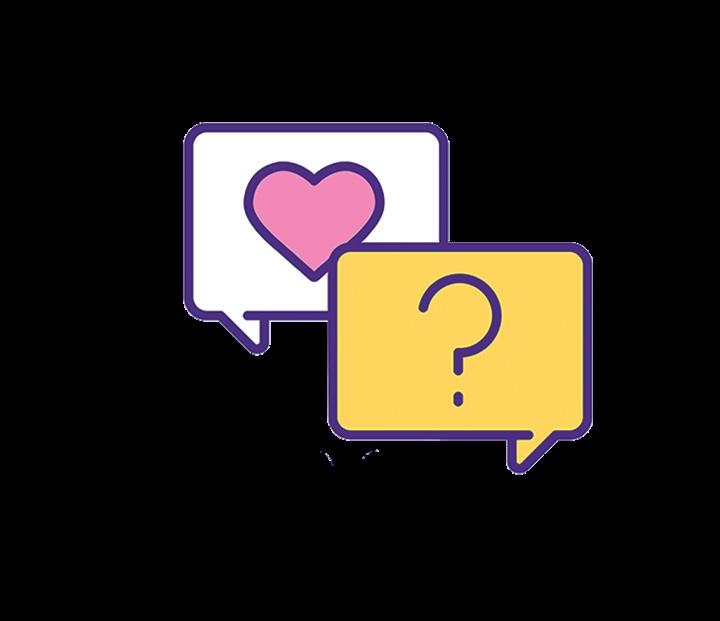
MATIS: It’s difficult for me to offer parents a “guidebook for dating” because each child is different with different levels of expectations. Anxiety can easily accompany the dating experience for these individuals, so the parents can emphasize the need for their child to relax and just enjoy the act of meeting new people. There is no specific time when the discussions should begin. The desire to date may arise later than with most people because the maturity levels may develop later than with the average adolescent. I think the time would be when the child begins talking about dating and having relationships with others.
Q: WHAT ARE THE BEST WAYS FOR PEOPLE WITH DISABILITIES TO CONNECT WITH POTENTIAL LOVE INTERESTS?
MATIS: Texting seems to be the most
popular method of communication with the younger generations. For those individuals who are uncomfortable with face-face meetings, texting, phoning, and emailing all provide that comfortable distance. Of course, getting together, face-face, has to be part of the experience, eventually.
Q: WHAT ARE SOME TIPS FOR PEOPLE WITH DISABILITIES TO STAY SAFE WHILE DATING?
MATIS: This is a very important issue for parents; making sure that their adult children are not only enjoying the dating experience, but are also safe and being treated well. Some adults with special needs can take care of themselves in public, and are quite independent. However, even the most independent adult can be easily taken advantage of because, once again, they’re not cognizant of social cues. If the parents know their child’s dating partner well, then there is certainly more trust there. Dating someone completely new sometimes requires the parents to accompany their children on their first few dates, if they don’t ordinarily go with them. I would say that the biggest concern for parents with their children dating is the potential for physical intimacy and sexual behavior because their adult children are just that; adults with sexual desires. There is no single piece of advice that I can offer on this subject. I know how protective parents of children with special needs can be. There’s a fine line between wanting
THE PROCESS FOR CONNECT TO ONE
After an online application has been reviewed and verified, a person’s profile is published in the password-protected directory that only authorized members can access. Once the profile is published that person and other members can view profiles and place requests to meet. The database allows users to search the directory by location, age and disability. The Connect to One team processes requests within a week. After an invitation is extended, the recipient can accept or reject the offer. If an invitation is accepted, Matis works with both parties to arrange a time and place for them to meet.
For more information on Connect to One, visit connectcle.org or call 216-381-1257. To join the network, fill out an application at connectcle. org/register.
their child to enjoy having a relationship outside of the home, and being concerned that the relationship might grow into something more serious.
Q: ARE THERE WAYS PARENTS CAN PREPARE THEIR CHILD WITH DISABILITIES FOR A DATE SUCH AS EXPECTATIONS?
MATIS: I guess it all depends upon what the child is capable of understanding. So much depends upon how well the child is able to comprehend what the parents are telling him/her. The parents can talk about their own experiences with dating in the past; how to be respectful of the date’s feelings and thoughts, be a good listener, etc. They can emphasize the need for their child to not have high expectations with a date. They need to relax, enjoy the time together, and just go from there. Many people with mental disabilities might have high anxiety when meeting new people, so it is important that the parent tries to alleviate that anxiety in whichever way works for them. The parents will be familiar with their child’s concerns and should be able to work with them. For example, the parent could agree to accompany their child on the date to lessen the level of anxiety.
Q: HOW DO PARENTS OF PEOPLE WITH DISABILITIES PREPARE THEIR CHILD IF THE DATE DOESN’T GO WELL OR IF A RELATIONSHIP GOES SOUR? MATIS: Life has many disappointments, including with relationships or dating. There is risk in almost everything in life. Again, the parent should talk to their child about their disappointments, or concerns, if a date doesn’t work out. We’ve all had dates that haven’t turned out the way we might have wanted. Again, it’s important that the child tries to relax with someone new and just enjoy the time spent with him/her. For some individuals with special needs, a simple meal at their favorite restaurant is enough to brighten their day, regardless if they see their date again, or not.
Angela Gartner contributed to this article.
livespecial.com 2021-22 35
THE IMPACT OF TECHNOLOGY
ON THE DEAF AND HARD OF HEARING COMMUNITY
 By Ginny McCabe
By Ginny McCabe
John L. Moore, executive director of Deaf Services Center, was born deaf and grew up in the deaf world. His brother and parents also are deaf.
“The world was silent from the time I was born until I’m older, but I have a visual approach,” he says.
He depends on a variety of tools to help him communicate, and technology has played a role.
“I primarily use American Sign Language to communicate,” he says. “That’s my primary approach to communication with my wife, my friends and other professionals. In certain situations, I will try to lip read and use written communication, or texting and phone communication. Sometimes, I use an app called Otter for my phone. If I have a hard time lip reading a person, I’ll just put on an app. If a person has on a mask or they are mumbling, all that stuff makes it difficult. Masking has been hard because I can’t see their lips.”
Other ways communication has evolved for Moore is through interpreters and different forms of technology, such as a third-party relay service, which is paid for through the federal government, he says.
“It was not possible 30 years ago to have this service. There have been a lot of technological advances,” Moore says.
Individuals who are deaf, like Moore, and hard-ofhearing or who experience hearing loss have been impacted by technological advances, like phones, to receive better access to communication.
36 livespecial.com 2021-22
CHILDREN AND ADULTS EXPERIENCE HEARING LOSS
According to the National Institute on Deafness and Other Communication Disorders (NIDCD), approximately 20 percent, or 48 million Americans, have hearing loss.
Here’s a look at the stats for children:
• About two to three out of every 1,000 children in the U.S. are born with a detectable level of hearing loss in one or both ears.
• More than 90 percent of deaf children are born to hearing parents.
• Approximately 15 percent of American adults (37.5 million) ages 18 and older report some trouble hearing.
• As of December 2019, approximately 736,900 cochlear implants have been implanted worldwide. In the United States, roughly 118,100 devices have been implanted in adults and 65,000 in children.
• Five out of six children experience ear infection (otitis media) by the time they are 3 years old.
There are other game-changers on the horizon. NIDCD notes that overthe-counter (OTC) hearing aids are coming. This new category of hearing aids means consumers will soon be able to buy directly, without having to visit a healthcare professional.
Like traditional hearing aids, OTC hearing aids will make sounds louder so that some people with difficulty hearing are better able to listen, communicate and participate in daily activities. In addition, OTC hearing aids will be regulated as medical devices by the U.S. Food and Drug Administration.
Services such as telecom–munication relay services and video remote interpreting are designed to ensure equal communication access to those who are deaf, deaf-blind, hard-of-hearing or speech disabled.
Moore’s work at Deaf Services Center (dsc.org) empowers those faced with language barriers by promoting access to communication. DSC provides direct services to individuals including job coaches, employment services, summer camps for deaf and hard-of-hearing children, sign language classes, sign language interpreting services and more.
CONNECTING TO THE COMMUNITY
Audiologists rely on technology quite a bit, and large strides have been made in different technologies, including hearing aids, according to Bridgid M. Whitford, Au.D, CCC-A, director of audiology services at Cleveland Hearing & Speech Center.
“Years ago, they were analog; now all of them are digital,” Whitford says. “The newest thing with hearing aids is they can connect to lots of other things. They use Bluetooth, so you can connect them to your TV and telephone. Apps on your phone control your hearing aids; there are some apps that actually act almost as hearing aids, so those lines are becoming blurred in terms of the hearing aid technology and some of the other technologies that individuals may use in their lives, such as their cell phone. There are huge advances that are going that way, and accessories that can be added to hearing aids.”
Cochlear implant technology is another game-changing advancement for those with more severe to profound hearing loss.
“Cochlear implant technology is different from a hearing aid because it’s implanted, but it provides access to sound,” Whitford says. “They are geared toward people with significant hearing losses, and that technology is improving. People who receive that technology early on, like infants and toddlers, are many times successful in accessing sound — which would then allow them to communicate in an oral method, learning to talk and learning to listen. This is different from how it was for people who were deaf years ago, who may have not had access to sound.”
“Cochlear implants are complex electrical devices with two major parts, one that is surgically implanted above the ear and another that attaches to the implant by a magnet on one end with a tube to an ear mold that fits in the ear on the other,” explainse Dr. Dorothy C. Miller, D.S.W., writer and independent scholar. “They can restore hearing to people with severe to profound hearing loss via a bypass of damaged cells and sending signals directly to the auditory nerve. The brain understands these signals as sound.”
Miller, who described herself as having “a moderate to severe hearing loss,” said repeated visits to an audiologist are required to “map” one’s device to reach optimal hearing. At first, the person may not recognize voices or may hear them as extremely distorted, but over time with training and mapping, most people appreciate what they can hear compared with almost no hearing capacity before the implant. Normal hearing is not replaced, and a person with an implant has to get used to the sounds they hear with an implant. Some people have both a cochlear implant and a hearing aid, while others have two cochlear implants. In addition, cochlear implants can easily be used with assisted listening devices.
“There’s still some controversy around it, because that is not a solution that everybody wants, nor is it appropriate for every person or every family,” Whitford says. “(They) insist, rightly, that deaf culture is an important culture, and that sign language follows the ‘rules’ of all languages,” Miller says. “Indeed, in some colleges and universities, one can choose to learn sign language as one’s required learning of a language. Ultimately, this community may disappear. On the other hand, when the earphone(s) on a cochlear implant are taken off, the person is still deaf.”
Maria O’Neil Ruddock, director of the Community Center for the Deaf & Hard of Hearing, adds that there are many deaf individuals who don’t choose to use amplification. This is particularly true with adults, for whom these kinds of technologies didn’t exist when they were younger. Therefore, their hearing loss couldn’t be remediated to the extent that they wished, meaning amplification did not allow them to hear speech sounds. It allowed them to have access to environmental noises, but their losses were so profound that it didn’t allow them to have access to speech, and then as adults, they decided, “What’s the point?”
O’Neil Ruddock says since cochlear implants didn’t exist when many of today’s adults were infants, their families chose hearing aid technology instead.
livespecial.com 2021-22 37
However, there are many technologies that assist individuals in everyday communication and living. So, while it isn’t through amplification that they use those technologies, they get things like talk-to-text on their phones, and that technology has improved greatly in the last few years. It’s reliable for someone who, for example, might want to place an order at McDonald’s. Similarly, when people who are profoundly deaf are in an event, there is a phone app that can convert the person’s voice to text, so that kind of technology is very helpful.
Another advancement, according to O’Neil Ruddock, is video phone technology, which allows a deaf person with high-speed internet and their phone to connect with a remote interpreter.
“When they call the doctor to schedule an appointment, they call with their video phone, typing in a number, and then, as that phone call connects to an agency, a sign language interpreter comes on the screen. That also converts over to an app on their cell phone,” she adds.
ALDS, HEARING LOOPS, CLOSED CAPTIONING AND MORE Assisted listening devices, or ALDs, complement hearing in places like theaters and lecture halls. They also can facilitate connections to audio sources for television and music.
Hearing loops or induction loops are special sound systems used by people with hearing aids. Hearing loops provide a magnetic wireless signal, which is picked up by a hearing aid. Induction loops consist of copper wires that connect with microphones and direct sound, via hearing aid or cochlear implant telecoils, bypassing ambient noise.
Miller said a number of public places in the nation are now using hearing loops, thanks to one of the primary “initiators” of the movement, David Myers, and the Hearing Loss Association of America’s “Get in the Hearing Loop” campaign.
She said New York City passed a law in 2018 that requires all large construction or renovation
that includes “assembly areas” to include looping in those areas. Loops are most prominent in houses of worship, as well as in tourist venues and information desks, and are increasingly being installed in airports, such as in Eugene, Ore.; Sarasota, Fla.; and Rochester, N.Y.
“Many theaters throughout the country are looped, but unfortunately only the Aurora Community Theater in the Cleveland area has a loop,” Miller says.
Loops also have been installed in all the Geauga County library system information desks and meeting rooms, for example.
Closed captioning displays the audio portion of the program as text on a screen and it provides the information to those who are deaf and hard of hearing.
Miller says closed captioning is required by federal law to be available in movie theaters, and some theaters provide “glasses” programmed with closed captioning that can even be worn over regular glasses. Others provide devices that can be affixed to a person’s beverage cup in the theater.
While some public venues and spaces in Northeast Ohio have hearing loops and closed captioning available, they are not widely available in all public spaces. Another thing that Miller said would be helpful is real-time closed captioning in airports and other places.
“Loops in police stations, city council meeting rooms and other community venues could also help everyone because a large chunk of the population would be heard, thus improving the democratic process, not to mention health and safety,” Miller says. “If all theaters were looped, how many hearing-impaired children, given the opportunity to attend, would go on to write brilliant plays? If all community centers and city council chambers and the offices of public officials were looped, how many brilliant young people would go into public service?”
You can get more information about loops at dorothy.miller@case.edu or hearingloss.org.
Ohio School for the Deaf Teacher Recognized for the First Time in State Award
Anthony Coy-Gonzalez, an Ohio native and a teacher at the Ohio School for the Deaf in Columbus, was named the Ohio Department of Education’s 2021 “Ohio Teacher of the Year.”
Coy-Gonzalez teaches upper elementary students in the Columbus area. This is the first time an Ohio School for the Deaf teacher has received this honor since the “Ohio Teacher of the Year” award program was started in 1964.
“It’s an honor. It’s humbling because we have four kids who are students in Ohio, and I graduated from a district in Ohio, so it’s going to be part of a legacy that’s bigger than me,” says CoyGonzalez, who has received regional and state-level recognition. “I’m humbled by the work that the teachers are doing for my students, especially in this last year, and to just be a part of Ohio teachers is exciting for me.
“Particularly after this year, it hit all at once. It was very emotional. I think for all teachers, we’re working hard and we’re trying to make a difference, and it’s a recognition that says the work that we’re doing at our school is making an impact on students, and in our community.”
Coy-Gonzalez says that for him, this year has included a lot of participation in various committees and task forces. He has made presentations to other educators. In 2022, he also will become the Ohio Teacher Fellow, which follows the “Ohio Teacher of the Year” recognition.
The Ohio Department of Education says Coy-Gonzalez “strives to provide students with real-world experiences that broaden their horizons and shape their future goals.”
Coy-Gonzalez earned a Master of Arts in Deaf Education as well as a Bachelor of Arts in Deaf Education and Elementary Education from Flagler College. He just finished his eighth year teaching at Ohio School for the Deaf. He spent three years as a high school English teacher and transitioned to the upper elementary department, where he has taught third through fifth grade for the past five years.
38 livespecial.com 2021-22
Family Matters
Baby Sign Language Improves Communication
By Laura L. Brady, AuD, CCC-A, Cleveland Hearing & Speech Center
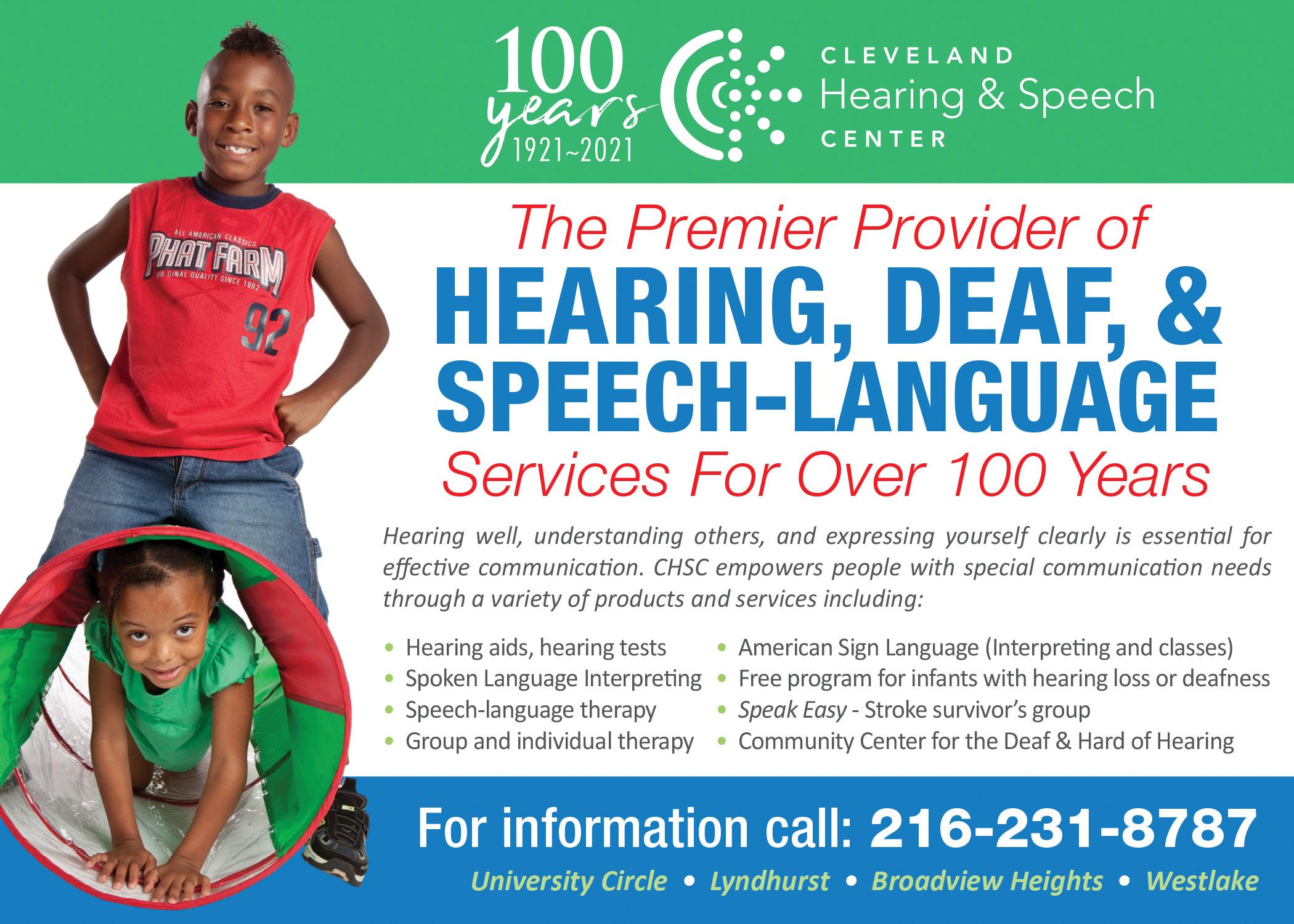
Infant sign language really does deliver on its promise of improved communication. This is particularly appealing for new parents, given that there’s a well-recognized gap between what babies and toddlers want to say and what they are able to say.
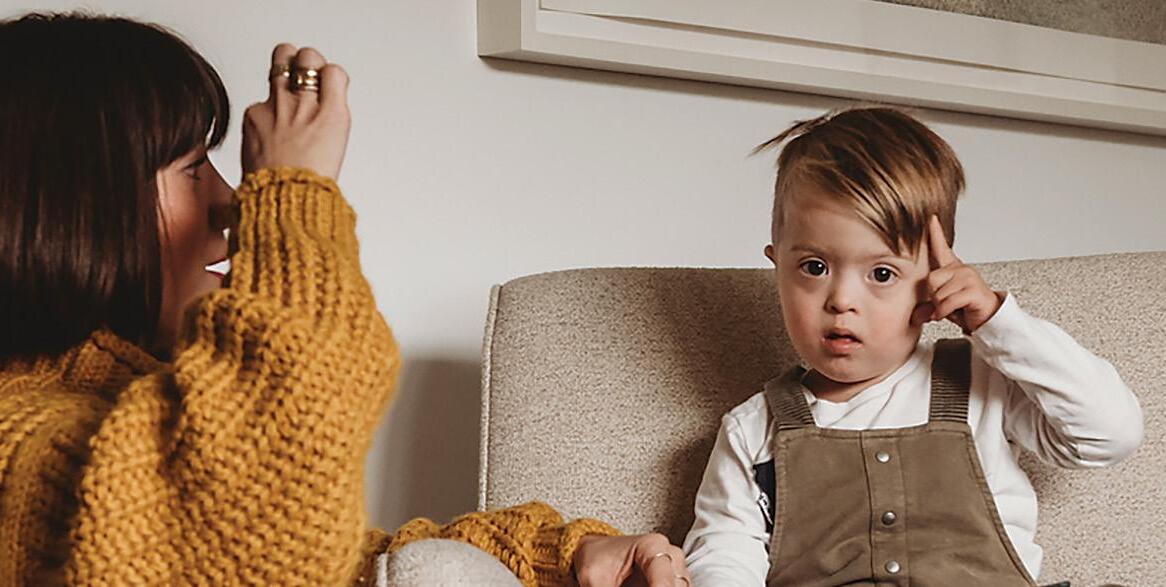
GETTING STARTED
To get the most out of your baby sign language
experience, keep these tips in mind:
• Use the “true” sign. Take the time to learn the accepted sign based on American Sign Language (ASL) so that others who may sign will understand your baby and your baby will understand them.
• Keep signs simple. Choose signs that are of most interest to your child. In addition to using formal signs, use natural
gestures, such as pointing and the hand movements that accompany nursery rhymes like the “Itsy Bitsy Spider.”
• Make it interactive Try holding your baby on your lap, with his or her back to your stomach. Try hand-overhand signing: Do the sign yourself, then gently hold your baby’s arms and hands to make signs.
• Use real time signing. Use the sign paired with an activity. Sign “eat” as you eat, sign “book” as you are holding a book, sign “book” and “all done” as you finish the book, sign “milk” as you show a bottle.
• Speak and sign. Be sure you don’t cut back on the amount of time you spend talking with your baby. As long as signing does not take the place of speaking, it won’t get in the way of your baby’s learning to talk with her words as well as her hands.
• Close counts! Don’t worry
if your baby doesn’t get the signs quite right. If you’re not sure, model the sign as you say the word again. Remember, the goal is to have fun communicating and lessen frustration, not add to it!
• Share your signs. Be sure you share your signs with your baby’s other caregivers so that everyone can join in (and understand) the conversation once your baby begins to sign.
livespecial.com 2021-22 39
• Ball • Bath • Bird • Book • Cat • Cup • Daddy • Diaper • Dog • All done • Drink • Eat • Go • Happy • Help EARLY FAVORITE SIGNS • Hot • I love you • Milk (often used for bottle) • Mommy • More • No • Please • Sit • Sleep • Star • Thank you • Up • Water • Yes
Family Matters
Are you Concerned About Your Child’s Development? Don’t Wait
DEVELOPMENTAL MILESTONES
If you are concerned that your child is missing their developmental milestones, don’t wait. While each child is unique and develops at his or her own pace, there are general milestones that can help you understand development. Early Intervention (EI) services can put your child on the path toward their milestones and Summit DD can help.
EI services are based on the principle that children learn best through everyday experiences with people they know. That makes you your child’s best teacher. With Summit DD, you have a team of professionals there to help you every step of the way with your child’s learning and development.
HOW TO REFER A CHILD FOR FREE
if they are missing their developmental milestones, have a suspected delay or have a medical condition which has a high probability of resulting in a developmental delay. Aren’t sure if your child meets any of these? Take the free developmental assessment at summitdd.org/ei.
call 1-800-755-GROW (4769) or visit summitdd.org/ei.
If your family chooses EI services through Summit DD, our EI services are provided at no cost to you by a team of professionals committed to meeting the unique needs of your child and family.

DON’T WAIT
EARLY
INTERVENTION SERVICES IN OHIO
Your child may be eligible for EI services
While Ohio Early Intervention is a statewide system that provides coordinated services to parents of children with disabilities or developmental delays, supports are provided right in your community. Anyone can make a referral. Simply
Learn more about Early Intervention and how Summit DD can provide the tools and expertise to support your family and help your little one work toward their developmental milestones. visit summitdd.org/ei

PHOTO COURTESY OF SUMMIT DD
People Know to
By Lindsey Geiss
HEROES HELPING THOSE WITH SPECIAL NEEDS
Four years ago, Jenna Newman, mom of four, noticed the Mentor Fire Department was having a preschool fire safety story time at the local library. This experience appealed to her for her son Tommy,

a fourth grader at Mentor CARES (Cardinal Autism Resource and Education School) who has nonverbal autism, ADHD, SPD and anxiety.
With Tommy in mind, she talked to Mentor Fire’s then Public Education Specialist, Jerry Craddock, about repeating the event for a smaller group of children with special needs, those who may be considered the

most vulnerable and in need of safety education and support.
Newman wanted her son to know about safety at home. She has a small heart issue, and five years ago had an episode of SVT (supraventricular tachycardia).
“It made me wonder, ‘If we are home alone and something happens to me, who will take care of my
livespecial.com 2021-22 41
Above: Jenna Newman. Firefighter Tommy is pictured with Jerry Craddock and members of the Mentor Fire Department.
Meet individuals, organizations and companies that strive to provide support for those with special needs.
son?’” she says. “He needs to know first responders will be able to help me, and they need to know how to deal with someone who may not understand or react like others do.
“We gave it a try and it was chaos,” Newman says. “It wasn’t working for my son. The program was too long and needed to be simplified.”
Newman went to work writing social stories to break down key safety concepts like dialing 911. The first Craddock read was on stop, drop and roll.
“Tommy wanted nothing to do with it the first five times,” Newman says. “He ran out of the room screaming.
“I called the special needs safety program STICKS because my son is obsessed with sticks; it stands for Superhero First Responders Teaching Safety is Critical to Kids with Special Needs,” she explains. “The main purpose of the program is to get individuals of all ages with any kind of special needs comfortable around first responders — and first responders comfortable around them — while also learning some safety lessons. One touch-a-truck event a year is not enough for our children. Repetition and reinforcement are key.”
Newman asked to see Craddock daily, coordinated with him on subject matter and programming
ideas, created more visual support and introduced Tommy to the firefighters again and again.
Now Tommy loves to dress in his own firefighter gear and collect patches from all the fire departments.
“Tommy’s relationship with Jerry is the most amazing I’ve ever seen,” Newman says. “He smiles and gives Jerry a hug. The special needs safety program is where Tommy learns more than anywhere else, including at home or in school because of the repetition and me making him go.”
The library events grew into regular, monthly special needs story times and morning safety programs at fire and police stations in Mentor, then Willoughby and Madison, fostering ongoing partnerships across Lake County.
“The program is open to anyone,” she says. “There is absolutely no judgement. I designed it around how my son learns. Each 30- to 45-minute program includes a brief introduction (hello, high five, fist bump, etc.), social story (with concise, consistent messages and visuals), and short video or hands-on activity.
“I try to have the firefighters put on full gear so the kids get used to seeing them dressed that way and are not afraid,” she adds. “We also hang out, check out the trucks and
tour the station.”
Newman is founder and president of the newly-formed nonprofit Heroes Helping Those with Special Needs, which focuses on teaching safety to those with special needs in partnership with local first responders.
“I see it as a two-way street,” Newman explains. “First responders can have all the training in the world, but if someone is fearful, does not understand or is unable to communicate, they cancel each other out.”
In addition to STICKS, Heroes Helping Those with Special Needs provides sensory bags for fire and police departments locally and nationwide to keep in their vehicles as well as free specialized first responder training programs in partnership with the Autism Awareness Training and Acceptance Program (AATAP) of Hubbard, Ohio, run by Justin Meade, a police officer, crisis intervention specialist and special needs advocate.
“Tommy puts together every sensory bag,” Newman says. “He puts every item inside.” This includes noise protection headphones for loud traffic and sirens, sunglasses for flashing lights and sunshine, fidget toys for comfort, and a dry erase board so firefighters or police officers can draw pictures if needed. “Tommy delivers them to the local departments to meet everyone,” Newman adds. “After the eighth time going, he walks in like he owns the place. He’s grown so much through these experiences.”
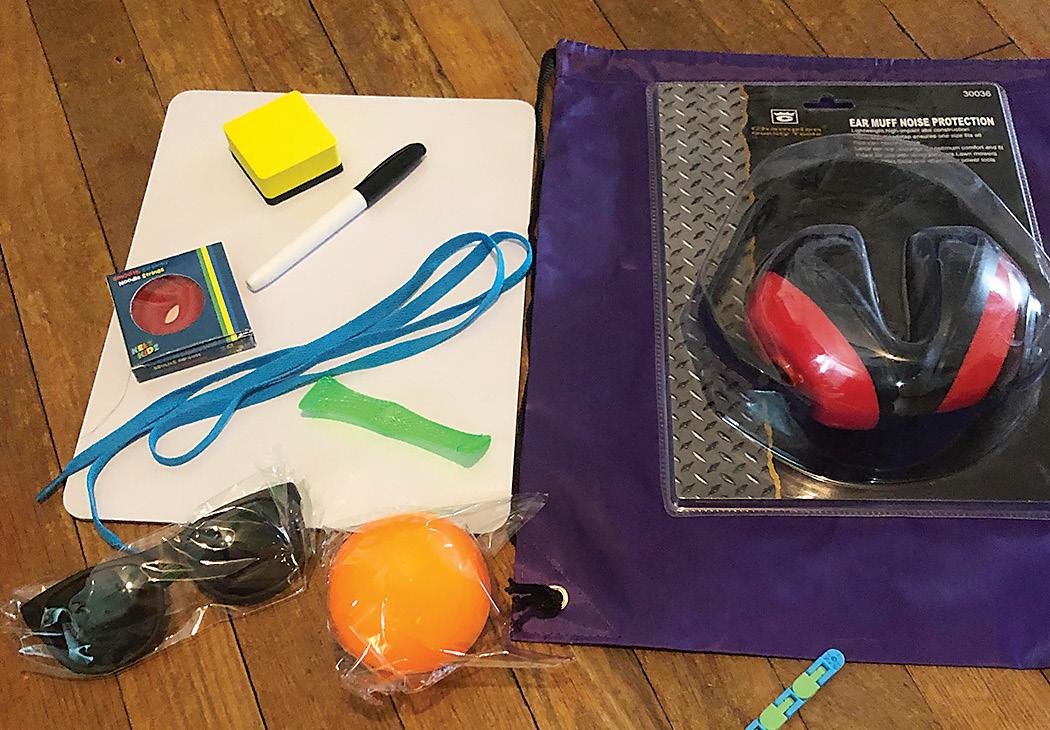
For all her contributions to the autism community, Newman received a Milestones Autism Resources 2021 Family Tribute Achievement Award.
She advises, “Don’t sit around and wait for someone else to start an idea that you have, just go for it!”
For more information on Heroes Helping Those with Special Needs, to schedule a training or order materials, find the group on Facebook, email heroeshelping@yahoo.com or call 440-255-8811. More information on AATAP can be found on Facebook @ aatap4all or by contacting aatap4all@ gmail.com or 330-974-4324.
42 livespecial.com 2021-22
"The main purpose of the program is to get individuals of all ages with any kind of special needs comfortable around first responders — and first responders comfortable around them — while also learning some safety lessons."
— Jenna Newman
NO LIMITS 2 AUTISM
Crystal Sledge, of Euclid, and her teenage son, Zion, know no limits to autism. It is why she shares her story through a blog by that name, and why Zion regularly contributes in “Z’s World.”

As the single mother of Zion and preteen daughter, Dekotah, Sledge says, “We may have endured many hurdles, but autism has never stopped us. Autism is part of our lives, but it doesn’t define all we do.”
As she learns, she shares with others to educate, advocate and raise awareness. Sledge has become a leader in that regard, serving others through 16 years in family services, IEP coaching, and her current role as a case manager for individuals with developmental disabilities.
“I realized over the years that my experience was not like that of other families,” she says. I became well versed in what to do to advocate because I had people in my corner telling me. I was naturally advocating and getting him the services he needed by speaking up and asking questions. I realized I had a seat at the table. People don’t know you have the right to ask those questions. Parents are valuable team members. I was privileged to have people to help me along the way, so I wanted to share what I’ve learned and started the blog about three years ago.
“Although it was years before Zion received an actual diagnosis, I jumped right into this journey,” Sledge adds. “It hasn’t always been easy. I’ve cried, been frustrated and many times I’ve
questioned God. But there have also been so many laughs on this journey and I’ve watched my overactive little boy blossom into this handsome, loving and creative young man.”
She advises other parents to “give it time” and “always have hope.”
“The kid Zion is right now — very social and outgoing (dancing at family gatherings and presenting at a leadership forum) — but he wasn’t always that kid,” she reveals. “He was screaming and crying and banging his head and running off when he was young.”
“I always tell parents to trust your gut,” she says. “Zion was 3 years old when it was first suspected that he may have autism. We recognized he walked on his toes slightly, he was able to talk but had some speech delays, and he preferred to play alone rather than with his peers. When he was in day care, I kept saying to the doctor that something is not right. At first I heard, ‘Well he is a boy’ or ‘It’s just how he is.’ I knew it was a meltdown and not a normal tantrum.”
Through work with Help Me Grow and PEP (Positive Education Program), delays were identified and they moved closer to the diagnosis, which ultimately came at about age 6.
“Immediately I told my supervisor at work,” Sledge says. “They gave me options to work around my schedule.”
She found it also was important to be upfront with her concerns when she switched to a new daycare.
“I tell parents to communicate with everyone; they are all part of the team,” she says.
Over time, ADHD and anxiety also were identified and addressed.
Sledge also attributes their progress and success to his school and teachers.
Zion’s passion and talent is drawing.
“He writes his own scripts and draws his own cartoon characters with skill,” Sledge says. “Zion did some career exploration. He talked to Beck Center for the Arts and learned about different careers in the arts.
“I tell him, ‘You can be an artist’ and try to identify those opportunities for him,” she adds. “I took him to drive through Waterloo (Arts District) to
see how people make graffiti art, and helped arrange for him to be a student artist for local nonprofit The Superhero Project.”
Zion worked with a mentor to design superhero characters for children with illnesses or disabilities, which Sledge says was an important exercise in flexibility to design what others want.
Zion wants to live on his own. Together, they plan to explore the many resources in the community.
Last summer, through Services for Independent Living (SIL), Zion had the opportunity to participate in Opportunities for Ohioans with Disabilities’ Ohio Youth Leadership Forum. The five-day career leadership training program was offered to junior and senior high school students. It helps develop skills in leadership, self-advocacy, disability awareness and more to help them successfully transition from high school to adulthood.
“Zion learned about housing, voting, college and self-advocacy skills,” she says. “The staff reached out and asked him to return this year as a presenter to speak to the delegates about his experience and share things he has accomplished since last year’s forum.”
On her blog, Sledge writes, “When do parents speak up and advocate? When should they sit back and let their loved one experience all that comes with being an adult?”
When Sledge is not at her children’s swim meets, basketball games, appointments or other activities, she makes personal time for journaling, yoga and running.
“Outside of an autism mom, I am a person with my own things I like to do,” Sledge asserts. She is part of the special needs parent support group Mother 2 Mother and BeFree Project.
“It motivates me to keep writing with accountability and support,” she adds. Sledge, who has a wealth of stories, says writing a book one day “is on the agenda.”
To read the No Limits 2 Autism blog or connect with Crystal Sledge, visit nolimits2autism.com or find her on Facebook and Instagram @ nolimits2autism.
livespecial.com 2021-22 43
“I tell parents to communicate with everyone; they are all part of the team,”
— Crystal Sledge
Crystal Sledge and her son Zion.
Photo courtesy of Crystal Sledge
FEEDING INDEPENDENCE AND EGG-CEPTIONAL WORK SKILLS
Which came first: the chicken or the egg? In the case of Alex’s Farm Fresh Eggs, there were 150 chickens at the Waldbaum Family’s Red Hawk Farm in Geauga County.


Alex’s Farm Fresh Eggs are free range, cage free, all-natural large brown eggs from chickens raised without pesticides or chemicals, available by direct order/pick-up in Solon and at a growing number of markets and restaurants on Cleveland’s East side. Easily recognizable, the eggs are adorned with the business’ logo, an eggshaped face with glasses inspired by its namesake, Alex.
When Lisa Waldbaum’s youngest son, Alex, was diagnosed with Lowe syndrome — a rare genetic disorder that affects the eyes, brain and kidneys — she and her husband, Adam, were determined to ensure life for their family of five would go on as normal despite daily challenges and special medical needs.
Thirteen-year-old Alex is in seventh grade at Solon Middle School. He is a blossoming entrepreneur and sales guru, thanks to his mother’s foresight and passionate commitment to enriching her sons’ lives. When Alex is not in school, he can be found helping with the chickens, stamping and packaging eggs and doing sales and deliveries, often alongside his 17- and 20-year-old brothers and their friends.
The idea for a farm fresh egg business was hatched by Lisa Waldbaum in 2019 as a way to bond with Alex while developing his independence and work skills.
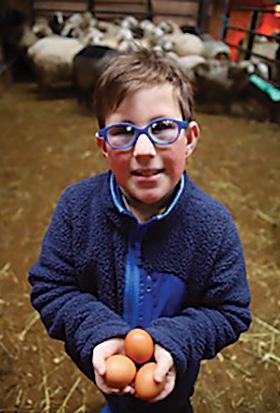
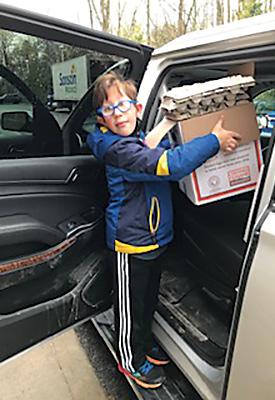
“Before the pandemic hit, I thought it would be nice to get back to work, but I have special needs in terms of flexibility,” Waldbaum says.
“Life gets crazy with three kids, lots of doctor appointments, regular lab work and other hands-on things I do.
“We have always enjoyed spending time on our family farm and equestrian property in Newbury,” she says. “Aside from the horses, we had a few dozen family chickens and shared fresh eggs with friends. I thought, ‘If we start this journey and make it a business, we’ll make it fun and educational in the process, developing skills Alex greatly needs.’
The family hobby grew into a viable and rewarding business, bringing them to the farm two or three times per week to gather buckets of eggs.
“We decided to go all in and ordered 150 chickens at the end of 2019,” Waldbaum says.
“People love the fresh product, but if they meet Alex, it becomes even more special,” Waldbaum says. “Alex is already incredibly social and well spoken, so the sales part is simple and a perfect fit. He is happy and excellent with people. We hit the pavement, literally, and went into markets with a few dozen eggs, inviting them to please try and consider carrying our eggs. They called back and placed orders. Alex is
building personal relationships.”
In just a little over a year, Alex’s family has built a separate chicken barn that now houses 350 chickens, and they have hired help. The Waldbaums plan to continue growing the business.
Lisa Waldbaum’s community involvement extends far beyond the egg business. A member of the National Lowe Syndrome Association since 2012, she has served as the organization’s president and board chair since 2016, where she mobilizes the board and has made scientific research a number one priority. A native New Yorker, she is a champion of the local Friendship Circle Cleveland chapter, which provides social and recreational opportunities for children with special needs by connecting them with local teenagers. The Friendship Circle of Cleveland honored the Waldbaum family, citing Lisa and Adam’s “relentless perseverance and spirit of giving back to community,” as well as their young adult sons, Josh and Sam, for serving as “great role models as they do their part to keep their family cohesive, inclusive and strong.”
“I hope Alex will grow and develop and live independently in the future,” Waldbaum says. “We take it day by day. Families with issues like this, we live one day at a time and hope and plan for the best. Embarking on new adventures together prepares our children for life.”
For more information on Alex’s Farm Fresh Eggs, including where to buy them, or to place a direct order, find them on Facebook, follow @ alexsfarmfresheggs on Instagram, or call or text Lisa at 216-407-6622. To learn more about Lowe syndrome, connect with resources and help, or get involved in the Lowe Syndrome Association’s circle of care and vision for a cure, visit lowesyndrome.org, email info@lowesyndrome.org or call 216-630-7723. To register and join the Friendship Circle of Cleveland, or to volunteer visit friendscleveland.com.
Alex Waldbaum helping at family business Alex’s Farm Fresh Eggs. Photo courtesy of the Waldbaum family
44 livespecial.com 2021-22
“We take it day by day. Families with issues like this, we live one day at a time and hope and plan for the best. Embarking on new adventures together prepares our children for life.” — Lisa Waldbaum
A VOICE AT THE TABLE
Donna Prease feels people with disabilities should have a voice at the table. Prease, of Cleveland, has made sure she’s had a seat.

“We need to let our voices be heard,” she says. “The best way is to serve on a board.”
She has served on numerous boards for organizations such as Greater Cleveland Regional Transit Authority Community Advisory Commitee, Cleveland Department of Aging Advisor Council, Maximum Accessible Housing of Ohio, Youth Challenge, and North Coast Community Housing Development Organization.
“They wanted people in the community to be eyes and ears for the board of trustees,” she says about her work on the transit authority board.”We would provide recommendations on services, routes, etc.”
Serving on boards is just one way Prease can advocate for people with disabilities. Her involvement in the
community is personal, but also has become her passion and lifelong career.
After graduating with an associates degree from Cuyahoga Community College, she says she had a difficult time finding employment as someone with a physical disability. She was born with osteogenesis imperfecta, a bone disorder.
Prease found work at Linking Employment, Abilities and Potential (LEAP) as a secretary. She then became a program support specialist, helping to launch JobLink, which helps high school students with disabilities to prepare for life after graduation.
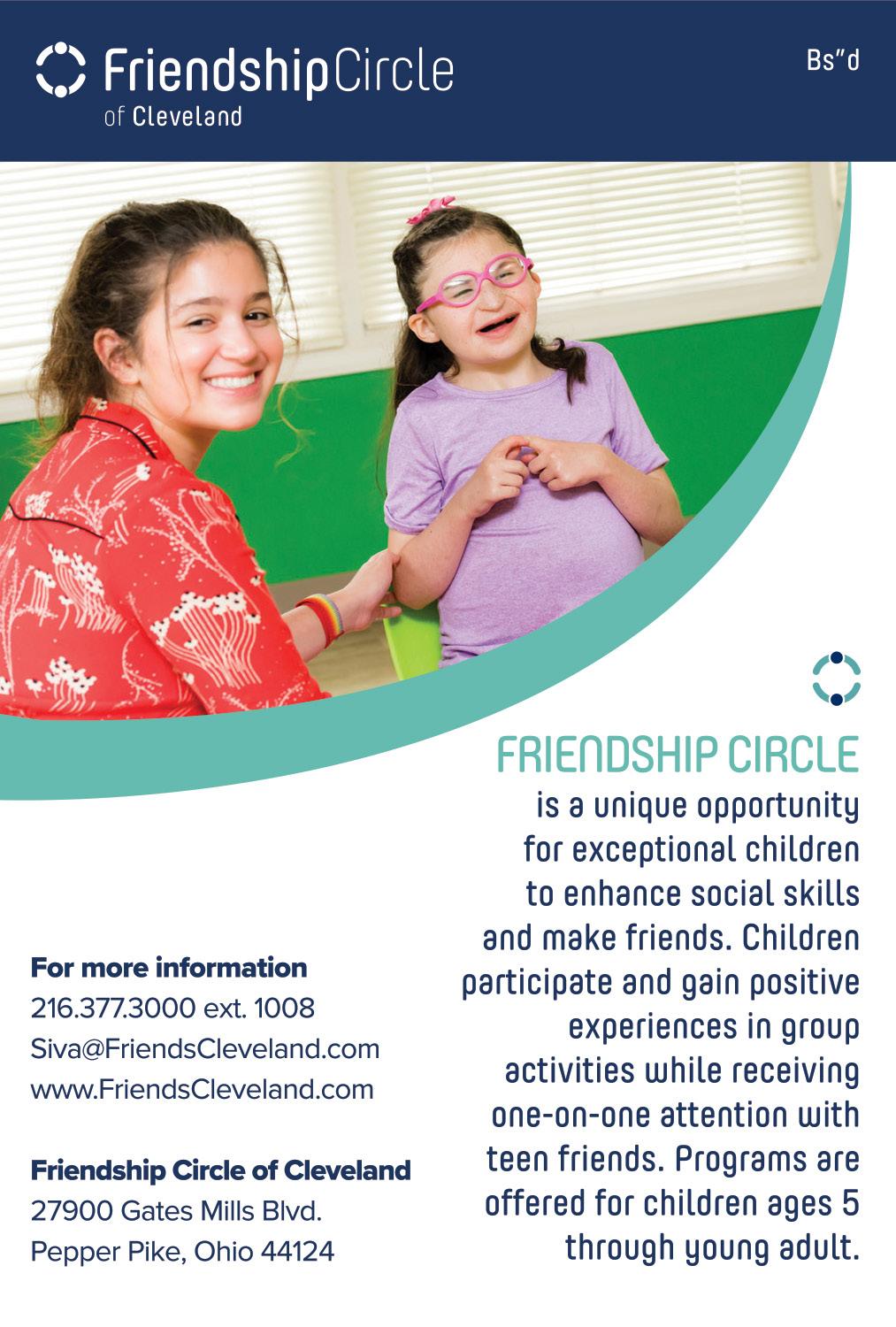
However, she wanted to take her work a step further and became a grassroots advocate.
“I started teaching people with disabilities how to advocate for themselves,” she says.
She has traveled in the community, Columbus and across several states to talk
about advocacy, particularly in transportation. Prease also was named the 2020 recipient of ADA Cleveland’s Legacy Builder Lifetime Achievement Award.
She is passionate about public transportation and its accessibility to everyone in the community.
Prease says it’s about independence. “Without transportation, I can’t go anywhere, I would just stay home. In the community, people with disabilities need and want to be as independent as possible.”
She provides advice for people with disabilities who are looking to become advocates.
“What they need to do is research a particular issue so they know what they’re advocating for and about,” she says.
She suggests getting on a board or finding out what needs to be done to help people.
“They need to educate people,” she says. “Advocacy equals education.”
livespecial.com 2021-22 45
TO THE 1,400-PLUS PROVIDERS FOR YOUR SUPPORT AND SERVICE TO OUR COMMUNITY. To join the LiveSpecial community, contact wendy@livespecial.com THANK YOU
"In the community, people with disabilities need and want to be as independent as possible.” — Donna Prease
Donna Prease
PHOTO BY TIM SMITH AND COURTESY OF LINKING EMPLOYMENT, ABILITIES & POTENTIAL (LEAP)
HARMONIOUS PARTNERSHIPS RAISE AN ARTISTIC VOICE
“SymFUNNY” is a published book illustrated by Kira Weber, a 2020 Kenston High School graduate and Chagrin Falls-based artist.
The manuscript, filled with playful homonyms, is an introduction to the orchestra and language concepts for young children. The story is the product of Jeannie FlemingGifford, then education director of the Columbus Symphony Orchestra, and Anna J. Magnusson, executive director of Iowa Able Foundation, a nonprofit dedicated to empowering individuals with disabilities to achieve and maintain independence.
The gifted young artist connected with Fleming-Gifford, now an Eastlake resident and executive director of Fairmount Center of the Arts in Geauga County, during her senior mentorship project at the center.

“It was ironic; Anna and I both believe it was waiting for Kira,” Fleming-Gifford says. “Kira’s designs brought life to the story.”
Fleming-Gifford recalls, “She had a very strong interest in the arts. While some of the traditional office work was not the best fit for her skills, I quickly recognized her talent.”
She says Weber’s autism gives her the ability to focus and delve deep into creating art that is extraordinary, referring to it as her superpower.
“I feel like I can focus on one thing for a really long time,” agrees Weber.
The two kept in touch and after attending a solo art show of Weber’s, Fleming-Gifford had what she calls an “a-ha” moment: Kira was the perfect fit for bringing the “SymFUNNY” concept to print, so she asked her if
she would illustrate it, and Weber did.
“The book was really exciting to do and a lot of fun putting it together,” Weber says.
Fleming-Gifford also described it as a shared learning experience, given it was the first book for each of them.
The story, designed for ages 3-8, captures the viewpoint of young children and their expectations of going to the symphony versus their actual experience. The main character of the book, Alex, and members of the orchestra are purposefully drawn and shaded for diversity and include a person in a wheelchair.
“My sister likes dinosaurs and asked if I could put one in the book,” Weber reveals. “She came up with the character, Rex [a sort of mascot that appears throughout the book].”
While Weber’s freehand “SymFUNNY” illustrations have a bold and colorful, cartoon-like quality, her style has been described as a mixture of realism, expressionism and portraiture using various mediums, including pencil, colored pencil, pen and paint. Her inspiration comes from things she sees and likes, in nature, for example.
“I also did a really cool painting of a lion,” she says. “The book and lion are my two favorite things so far.”
Weber expressed herself through
art before she could talk. As soon as she could hold a crayon, she began creating intricately detailed art.
“I’ve always enjoyed drawing my whole life,” Weber says.
“We were told Kira’s reading would never hit a fourth-grade level, and you kind of accept that,” says her mom, Lori Weber. “Let me tell you, she is now reading the Harry Potter books. Do not let anyone tell you there is a ceiling. There is no ceiling. It is always going to be a moving target.”
Lori also encourages parents to go outside their own comfort zones to nurture their children’s interests, saying, “If your child likes art, have crayons and paper and different mediums out in lots of rooms to give them access to it.”
While Weber communicates best through her art, Lori says her daughter’s communication skills are as strong as they are because of “good schools and compassionate teachers in Chardon and Kenston, years of practice and never being afraid to put herself in uncomfortable situations.”
“When I was younger I was pretty quiet,” Weber says. “I joined groups, activities and clubs like track, cross country and the swim team; that helped, and also speech class.”
In addition to her art, Weber plays ukulele and runs (she is preparing for the Cleveland Half Marathon). With more art shows and entries planned, when asked about her plans for the future, she says, “I want to enjoy painting and drawing.”
To view or purchase Kira’s art, visit @drawings_by_kira on Instagram and Etsy. For more information on SymFUNNY or to obtain a copy of the book, visit atgoriginals.net. The book, published by Windjammer Adventure Publishing in Chagrin Falls, is also available at local libraries, including Willoughby-Eastlake Public Library and Geauga County Public Library.
46 livespecial.com 2021-22
Kira Weber (right) displays her artwork alongside her mom, Lori (left).
Photo courtesy of the Weber family
“When I was younger I was pretty quiet,” Weber says. “I joined groups, activities and clubs like track, cross country and the swim team; that helped, and also speech class.” — Kira Weber
ASSISTIVE GADGETS AT HOME
The following devices, recommended by Cuyahoga County Board of Developmental Disabilities, can help people with special needs in their homes and beyond. From better reading, security and cooking to sensory-friendly products that help you with everyday tasks, there are many options.
Simplifies cooking by letting the user microwave using their voice and an Echo device. amazon.com
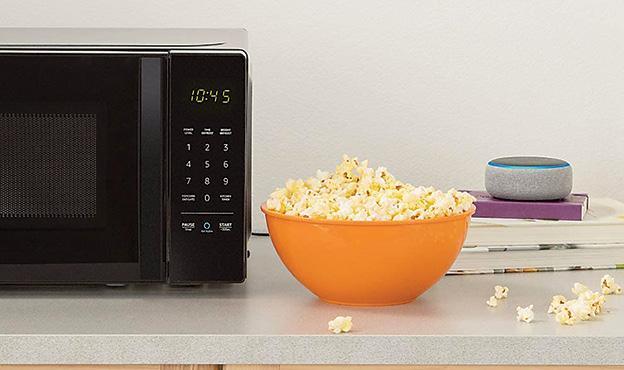
2. C-PEN READER PEN DIGITAL

Reading tool designed for individuals with reading difficulties, including dyslexia. It can read text out loud in English, Spanish or French and has built-in English, French and Spanish dictionaries. It also can scan lines of text for upload to a Mac or PC. cpen.com or check amazon.com
3. SECRUI WIRELESS DOOR OPEN CHIME
Provides the user with the ability to monitor doors and other points of egress. It has a 500-foot range that is enough to cover every door and window in the home. Each wireless doorbell receiver can pair up to 20 magnetic door alarm sensors and each sensor can add unlimited receivers. amazon.com
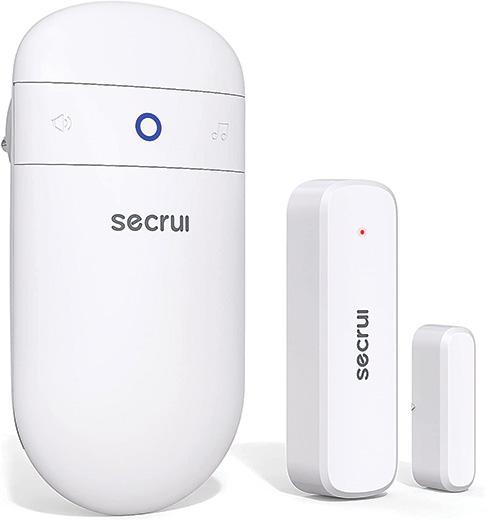
4. HALLWAY/DESK ARLO PRO CAMERA SYSTEM
A system of indoor/ outdoor cameras with two-way communication, night vision and live streaming video. arlo.com/en-us/ cameras
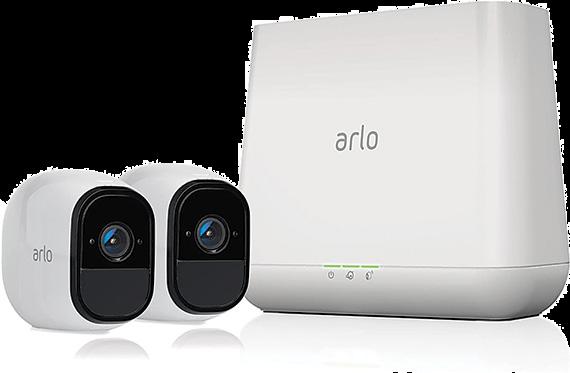
5. WATCHMINDER 3 WRISTWATCH
Can be programmed to set up discreet vibrating reminders. Offers a maximum of 24 individual timers, each with an assigned text displayed on the watch face and includes a countdown. watchminder.com

6. LIFETONE HLAC151 BEDSIDE VIBRATING FIRE ALARM AND CLOCK

An alerting device for the deaf and those with limited hearing that listens for fire alarms and then triggers its audible alarm, voice prompt, and bed shaker.
7. EASI-GRIP CARVING KNIFE
Makes preparing meals easier for those with poor hand control. The soft, non-slip upright handle provides improved control, a more comfortable grip, and features a stainless steel serrated especialneeds.com/ easi-grip-carving-knife.html
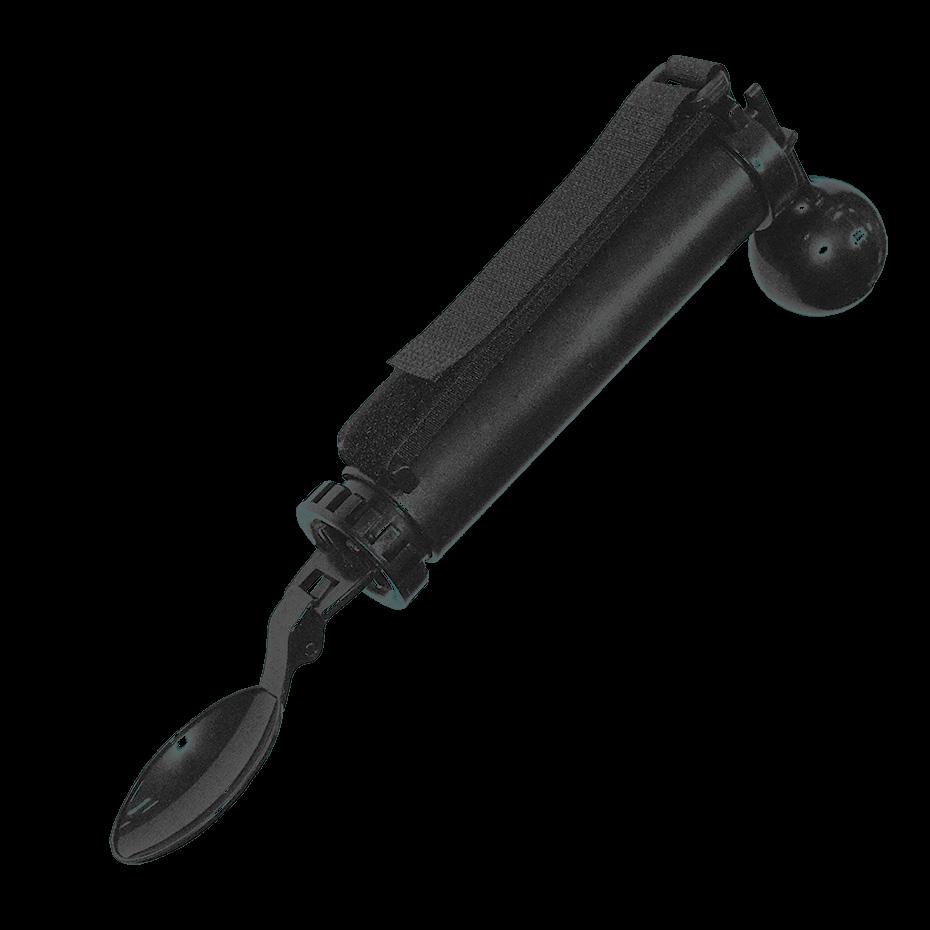

8. BUSY FINGERS GEL PAD/BUSY FINGERS GEL FIDGET
Keep fingers busy when stressed, bored or seeking sensory input. Children love playing with this cool, smushy fidget toy and as an added benefit, it helps to boost their concentration and focus, as well as fine motor skills. funandfunction. com/busy-fingerstm-gel-fidget.html

9. STEADY SPOON
Has a multi-feature design with counter weights to keep the spoon bowl-level and prevent food spillage. The hook and loop strap and built-up handle eliminate the need for a strong grasp. performancehealth.com/ steady-spoons
livespecial.com 2021-22 47
the Cuyahoga DD
CLE Virtual Tour Filming Guide at cuyahogabdd.org or check livespecial.com for more resources.
1. AMAZON BASICS SMART MICROWAVE
1.
5.
2.
3.
4.
6.
8.
7.
Technology
9.
Allison Rose Foundation
Dedicated to changing the lives of food allergy families through education, awareness, research and advocacy, the Allison Rose Foundation, in collaboration with its medical advisors, developed a physician-driven, evidence-based, food allergy curriculum. Designed for those with or without food allergies, it’s proven to be a lifesaving lesson for students, faculty and staff. allisonrosefoundation.org
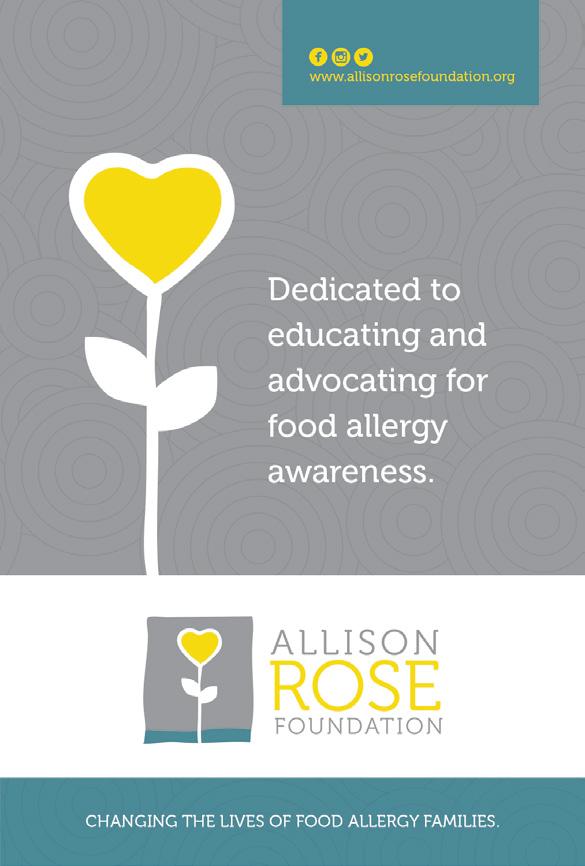
Autism Society of Greater Akron

The Autism Society of Greater Akron focuses its efforts on providing connections and support to improve the lives of all affected by autism within Summit,
Connecting for Kids

Connecting for Kids provides education and support to families in Cuyahoga, Lorain and surrounding counties who have concerns about their child. It serves all families, including children ages 12 and younger with and without formal diagnoses. CFK offers presentations by professionals and support groups. Its staff works one-on-one as part of the “Ask Us” program to provide local resources and connections to other families. Resources also are available on its website, online service provider directory and fairs. 440-5705908, connectingforkids.org
The Cuddy Law Firm, PLLC

A law firm dedicated to helping families secure better resources for their children by assisting families navigate the special education system. The team of professionals is dedicated to ensuring that a child’s school provides the education required by the law. Contacting a special education lawyer may be the best way to protect your child’s future when your child’s school isn’t providing them appropriate services. Office in Independence. 216-730-8773, cuddylawfirm.com
Cuyahoga County Board of Developmental Disabilities

The Cuyahoga County Board of Developmental Disabilities proudly supports and empowers people with developmental disabilities of all ages to live, learn, work and play in the community. For more information on services and resources, call 216-241-8230 or visit cuyahogabdd.org
Education Alternatives
Education Alternatives provides special education services to hundreds of K-12 children in eight sites throughout Northeast Ohio. EA uses a trauma-informed approach to treat intensive behavioral challenges and incorporates the ACE scores of each child into their individualized plan. Children receive both group therapy and academics, and may also access individual counseling, behavior supports and psychiatry. REACH Behavioral Health provides the therapeutic services in each Education Alternatives site. easchools.org
Eisner Gohn Group, LLC
Cuts N Curls is an unique adult and children’s hair salon, retail store and birthday party venue that prides itself on being sensitive to your family’s needs. The specially trained staff makes sure your experience is both safe and fun. Solon, 440-542-1750, cutsncurls.net
Cuts N Curls is an unique adult and children’s hair salon, retail store and birthday party venue that prides itself on being sensitive to your family’s needs. The specially trained staff makes sure your experience is both safe and fun. Solon, 440-542-
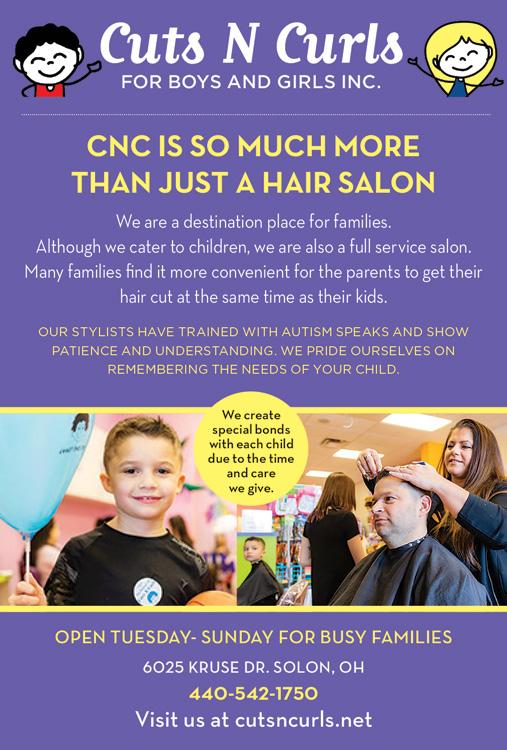
Cleveland Hearing & Speech Center

A leading resource for risk protection strategies with life and disability insurance. Its team has the experience and expertise in these areas to craft and deliver cost effective and efficient solutions for clients. eisnergohngroup.com

Fine Arts Association


with personally-designed goals tailored to meet their needs. Staffed by board certified arts therapists and professional adapted instructors, Beck Center’s program is the first of its kind in the state of Ohio. 216-521-2540 x34, beckcenter.org

For 100 years, Cleveland Hearing & Speech Center has been the premier provider of programs and services to those who are deaf or hard of hearing, have difficulty speaking, or have other language or literacy delays and disorders. Its vision is a community where every individual communicates effectively. www.chsc.org
Guided by its values of equity, integrity, growth and community, The Fine Arts Association (FAA) seeks to create and discover beauty to foster a community empowered by the arts. FAA offers arts education programming in dance, music, theatre, visual arts and Creative Arts Therapies for all ages and ability levels. In addition to arts education, The FAA Performance Department creates opportunities for members of the community to be involved in every aspect of the theatrical experience. From family musicals to performances by professional musicians, the dynamic performance season has something for everyone. 440-951-7500, fineartsassociation.org
48 48 A PROJECT OF NC J W CLE STRONG WOMEN POWERFUL VOICES SPECIAL ADVERTISER LISTINGS
Because every child deserves a friend…
Friendship Circle sparks friendship, connection and support for all exceptional children, their families and Jewish teens. Exceptional children (ages 5-22) are provided a unique opportunity to make friends and enhance their social skills, while teens are given a unique opportunity to experience joy and fulfillment from helping others. Children are uplifted through group activities and the one-on-one attention they receive from teens. Serving children with a wide range of disabilities. Multi-sensory activities and special features including light and tactile experience rooms. Experienced and professional staff. Support programs for families. Contact siva@friendscleveland.com or 216-377-3000 ext. 1008, friendscleveland.com
Help Me Grow
Help Me Grow is a system of supports for pregnant women, caregivers with new babies, and families with young children with developmental delays and disabilities. Call: 216-930-3322, 440-389-3322, or 1-800-755-GROW, or visit
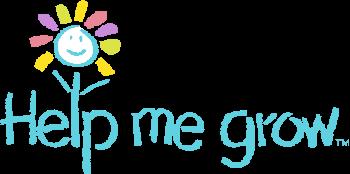
Julie Billiart Schools

With campuses in Akron, Lyndhurst and Westlake, this network of K-8 private, Catholic schools educate and empower children with learning differences. Students with mild to moderate autism, ADHD, dyslexia, anxiety and other learning differences thrive with JB’s small class sizes, onsite therapies and direct intervention. Visit the website to apply, register for an open house, or learn more. juliebilliartschool.org
KidsLink Neurobehavioral Center



At KidsLink, they have a full team of professionals to link the pieces of treatment, for total care of your child. They believe that children with neurological and psychological diagnoses need a coordinated team of medical and related service professionals to provide total care for their diverse needs. 330-963-8600, kidslinkohio.com
Medina County Board of Developmental Disabilities
The Medina County Board of Developmental Disabilities is the community resource responsible for connecting, coordinating and funding services for individuals of all ages with developmental disabilities. It helps with everything from early intervention and education opportunities for children to employment and community inclusive living for adults so they can live, learn, work and socialize in the community. Call 330-725-7751. mcbdd.org
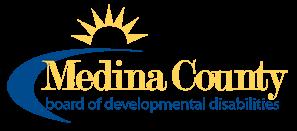
Milestones Autism Resources
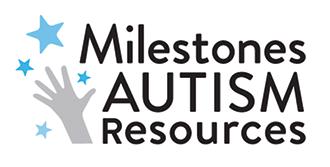
Milestones Autism Resources improves the lives of individuals on the autism spectrum by educating, coaching and connecting the autism community with evidence-based information. Providing an annual autism conference, a free helpdesk, consultations and training, and a website with more than 1,400 resources, Milestones is here to support individuals at every age, stage and ability. For more information, visit milestones.org or call the autism helpdesk at 216-464-7600 ext. 200. To connect with a Spanish speaker, call 216-464-7600 ext. 5.
Nature Center at Shaker Lakes

What will you discover when you unplug and reconnect with the outdoors? Step into our outdoor classroom nestled in the heart of the Shaker Parklands on Cleveland's east side. Unleash your curiosity and explore all that Northeast Ohio native habitats have to offer. The Nature Center at Shaker Lakes is free and open to the public. With over two miles of trails, ADAaccessibility, and connecting trails throughout the Shaker Parklands, outdoor adventure and discovery await for all. shakerlakes.org
Northeast Ohio Food Allergy Network

NEOFAN’s mission is to minimize the impact of food allergies in families’ lives. Established for all ages and stages, NEOFAN provides tools to the newly diagnosed and the community at large. NEOFAN promotes education, supports research, builds public awareness, and promotes advocacy. For more information visit neofan.org or email info@neofan.org
psi Affiliates, Inc.
For more than four decades, psi has been committed to meeting the health and educational needs of children in Ohio’s schools. psi’s psychological, health, speech and educational programs now serve tens of thousands of children each year. psi-solutions.org

Stark DD helps more than 3,900 Stark county children and adults with intellectual disabilities by “supporting choices and creating opportunities” for them and their families. By leveraging federal, state and local funds, we provide cost effective assistance with service coordination and monitoring, early intervention, school age programs, residential support and employment. 330-477-5200, starkdd.org

Summit County Developmental Disabilities Board (Summit DD)
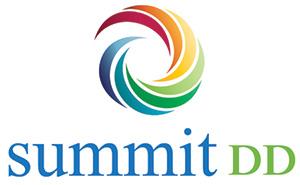
Summit DD is the resource that makes meaningful connections for more than 5,000 children, teens and adults with developmental disabilities in Summit County. Those connections become part of a person’s journey. With each connection, a person’s network grows, helping them on a path to becoming their own strongest advocate. Summit DD believes that people have the right to direct their own journey. Its service coordinators are here to assist each person in creating a self-directed plan to meet their goals and build a team around them to help set them up for success. 330-634-8000, summitdd.org
UCP of Greater Cleveland
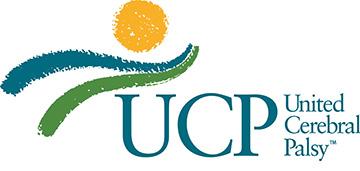
The mission of UCP of Greater Cleveland is to empower children and adults with disabilities to advance their independence, productivity and inclusion in the community. UCP serves individuals with a broad range of disabilities through two Centers of Excellence: LeafBridge for children and OakLeaf for adults. Visit ucpcleveland. org or call 216-791-8363 to learn more.
Vitalxchange
Vitalxchange is a safe and private network where parents can find practical and affordable parenting solutions. Vitalxchange provides access to VitalGuides including parent mentors, occupational therapists, physical therapists, speech therapists, behavior coaches, special needs advocates, special ed teachers, disability financial planning and caregiver wellness coaches. Vitalxchange thinks about parenting as a journey, where all can find affordable solutions and enrichment for kids and parents along the way. Sign-up for the Vitalxchange community is free and there are many free resources. When you choose to engage with a Vitalguide and purchase their services, you will pay them directly. vitalxchange.com
livespecial.com 2021-22 49 Interested in copies of LiveSpecial for your school, organization or business? Contact wendy@livespecial.com Pizza Box Flyer Example
Friendship Circle of Cleveland
Stark County Board of Developmental Disabilities
Ask the Experts
NCJW/ClevelaNd:
FaCe To FaCe
THE NCJW WOMAN: FACE TO FACE
A LOOK BACK A conversation about delivery of services and IEPs for students with disabilities
By Cindy Glazer and Helen Horwitz
“NCJW/Cleveland identifies a need in the community and helps fill it.
“I joined because I believe in NCJW/Cleveland’s work.
LIVESPECIAL.COM
Advocacy. Education. Community Service.
Cindy Glazer
Wendie Forman Ellen Leavitt
Cindy Glazer
Helen Horwitz
IThat’s why we’re members of National Council of Jewish Women.”
Be the Face
That’s why I volunteer with the National Council of Jewish Women.”
had all academics in pull-out classes with special educators. Some teachers were more flexible, more tuned into teaching to multiple levels in their classroom, and embraced the concept. Others were most reluctant and resisted until they were forced to include students of all levels. We placed students very carefully to have the most successful results.
blanket list. The state is very clear about not having repeat IEP goals/objectives — meaning that, if not mastered, they need to be reviewed and written differently, so that they can be achieved.G
Celebrate literacy at the Annual Meeting, June 3 Membership starts at $45
216.378.2204 for tickets
ncjwcleveland.org
www.ncjwcleveland.org
216-378-2204
n the 1970s, federal funds became available for school districts to hire personnel and to develop new programs for students with disabilities. The Rehabilitation Act of 1973 guaranteed civil rights to all people with disabilities and required accommodations in schools for students with disabilities. The Education for All Handicapped Children Act in 1975 guaranteed and enforced the rights of children with disabilities to receive a free, appropriate education. This is really the foundation of the present-day law (IDEA).

In 2001 and 2004, the No Child Left Behind Act (NCLB) provided further accountability to schools and added technology assistance and loan programs. This law originated as a way to ensure that students with disabilities receive an appropriate public education. The needs of these students were — and are — to be delivered in the “least restrictive environment” possible.
Cindy Glazer, educational specialist, and Helen Horwitz, speech language pathologist, discuss the educational needs for students with disabilities and their parents — then and now.
GLAZER: I remember long discussions and negotiations at meetings in the 1970s and 1980s when we tried to include students in activities and lessons with typical peers. The common practice of mainstreaming was used to place a child in recess, lunch or some special activity. They had to “opt in” where the fit was easier for the educators, who rarely had any training or experience with children with special needs. School administrators were reluctant to accept full inclusion, to say the least. Inclusion wasn’t commonplace until well into the 1980s and even then students usually had homeroom and special subjects with the regular class, but
HORWITZ: There was a lot of misinterpretation with the original law and there continues to be. “Mainstreaming,” to some parents, meant that their special education student would be educated in regular classrooms with their peers and no longer be placed in a separate setting with other students with special needs. The manner in which districts provided program options for their students also differed. The pendulum swung both ways, with some progressive districts going to full inclusion without training staff or considering the individual needs of the student and other districts not complying at all and keeping all students with disabilities (special education units) segregated in the same building. Eventually, more training was provided by the local educational service centers; however, most of the training was for special education staff and not regular classroom teachers. “Least restrictive environment” also was misinterpreted, with some feeling that all special needs students should be in classrooms with their same-age peers all of the time.
HORWITZ: Parents must be part of the IEP process and documentation to that effect is required. The IEP needs to be individualized and highly specific with SMART goals (specific, measurable, attainable, relevant, time-bound) and needs to be written with the hopes of attaining the goals and objectives by the end of the school year or the timeline of the IEP. It needs to have the content standard corresponding to that goal listed. The accommodations and specially-designed instruction sections ensure that a student is provided what he/she needs to be successful to reach his/her goals — not a
GLAZER: When I started out as an intervention specialist, there were handwritten reports with our own thoughts about what we hoped a student could achieve. We did not have formal grade level standards or benchmarks. Parents were not very involved in the setting of goals and objectives. Later, we wrote the IEPs using state standards, which were different for every class and school district. By the time I retired in the 2000s, parents were more involved in all aspects of the IEP. The state of Ohio is now using uniform online templates for ETRs and IEPs and all required forms. The standardization of IEPs, especially the availability of the virtual programs for IEPs, has been a giant leap forward. Parents will always have to be strong advocates to ensure their child gets the support and services they require. They may have to push, but they know their child best. If the request is reasonable, the schools need to accommodate it. In fact, classroom and testing accommodations are critical for a child to succeed. These should help staff know how a child is most successful. We have certainly come a long way, but the struggle continues.
HORWITZ: The schools are here to work with families and to provide what each child needs if it is reasonable and research-based. The parents are a vital part of the team process.
Cindy Glazer, educational specialist, has been an educator of students with special needs and a parent advocate for more than 40 years. She served on the committee to create LiveSpecial.com and she continues to support its efforts to serve individuals with special needs.

Helen Horwitz, SLP, has been actively involved in the field of speech-language pathology for more than 45 years. She has worked in three public school districts with preschool through high school students with moderate to intensive needs in the communication domain. In addition, she has worked as a part-time adjunct professor at Cleveland State University.
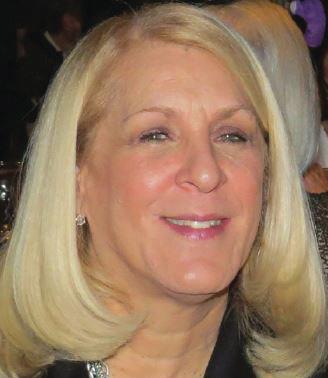
50 livespecial.com 2021-22

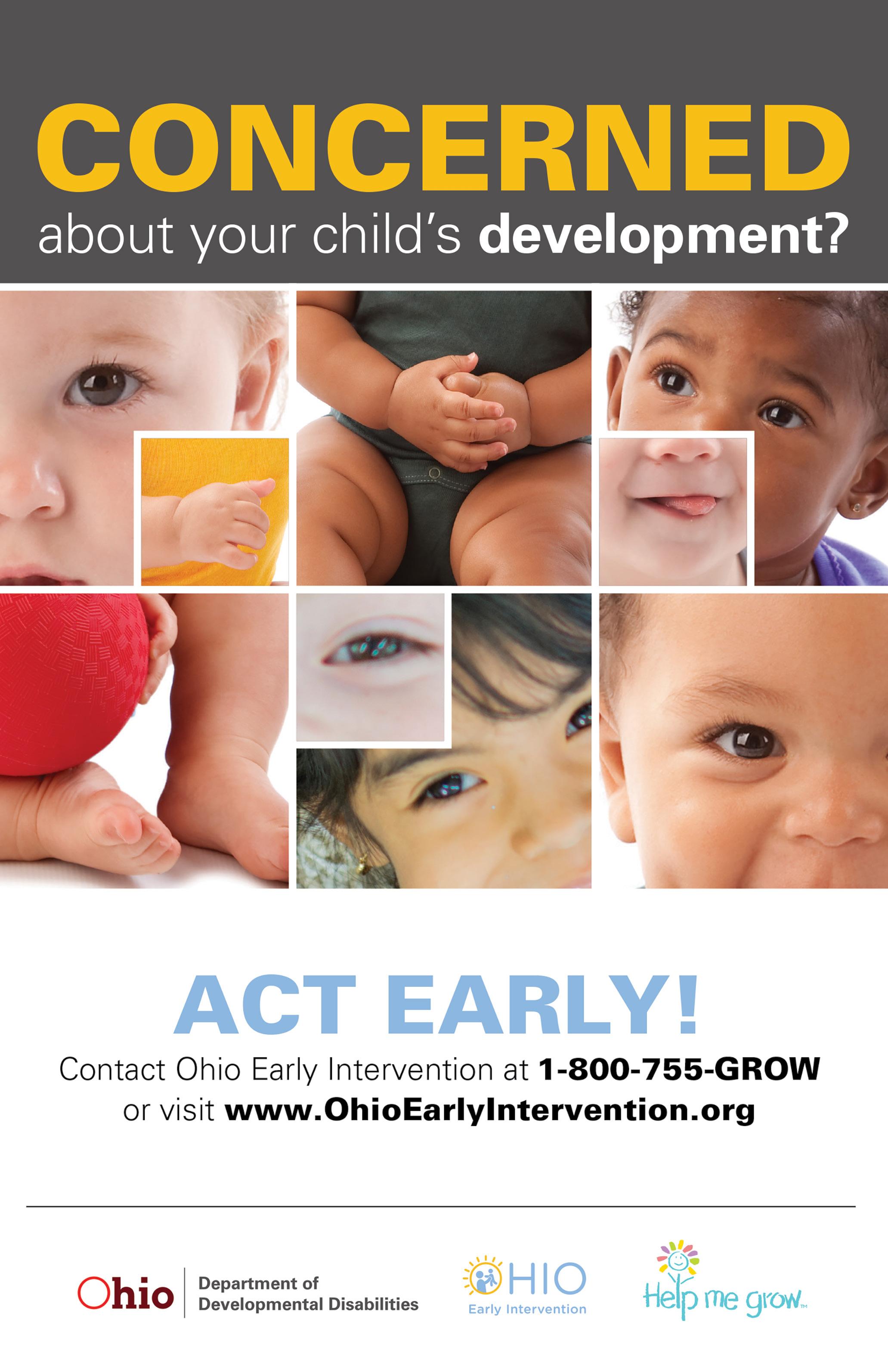













 — Lindsey Geiss
by Sharon Draper
— Lindsey Geiss
by Sharon Draper




 Mattson
Mattson
















 By Nera Birch
By Nera Birch























 By Ginny McCabe
By Ginny McCabe




































































